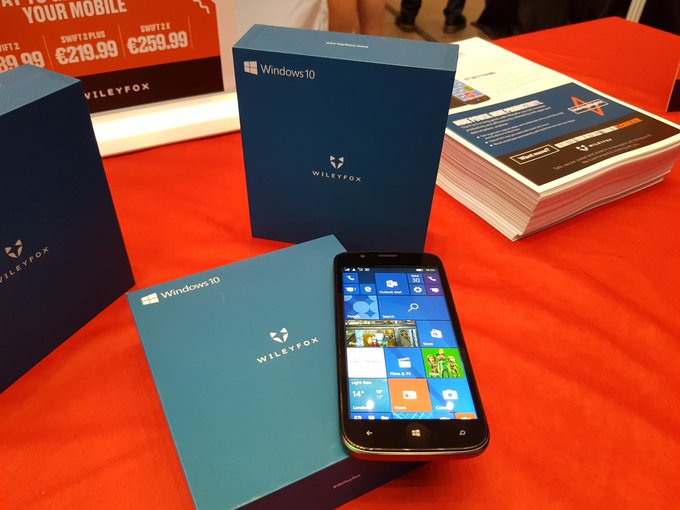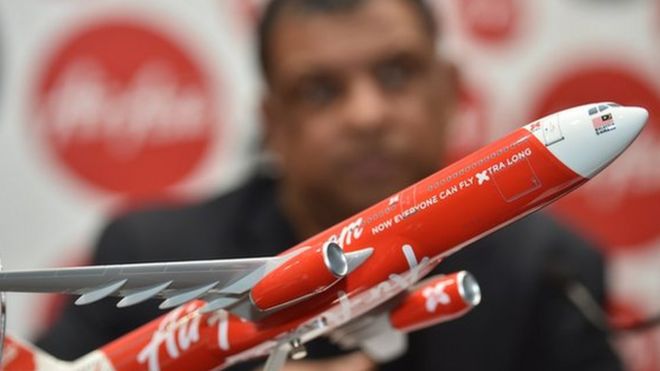31/10/2017
Apple engineer ‘fired’ over early iPhone X leak
 Image copyrightYOUTUBE
Image copyrightYOUTUBEApple has reportedly fired one of its engineers after his daughter posted a video of the iPhone X before the official launch.
The YouTube video was shot on the Apple campus in September when the young woman met her father for lunch.
The video was widely shared after being spotted by tech news sites and blogs that watch Apple.
She said her father was fired for breaking Apple’s strict policy that bans filming on its campus.
Apple has not yet confirmed that the man has been fired nor responded to a request for comment.
No grudge
News of the firing emerged when Brooke Peterson posted a follow-up video explaining why the original, in which she was seen trying out the iPhone X, was no longer available.
Ms Peterson said Apple had asked for the “innocent” video to be taken down and said that its posting had led to her father being fired. Although Ms Peterson removed the video from her YouTube pages it has been widely copied online.
The video shows Ms Peterson trying out the iPhone X while eating lunch with her father. This demo also inadvertently revealed some Apple employee only QR codes and a text file of codenames for unreleased Apple devices.
“At the end of the day when you work for Apple, it doesn’t matter how good of a person you are, if you break a rule, they just have no tolerance,” said Ms Peterson.
“Apple really did like my dad. And they let him go. Because he broke a rule,” she said. “It was an innocent mistake, and he fully apologises.”
Mr Peterson is believed to have been employed at Apple for four years and worked on the iPhone’s radio frequency and wireless technologies.
Ms Peterson added that the family bore Apple no grudge and that her father was going to be “OK”.
Daimler recalls 400,000 Mercedes-Benz cars in the UK
 Image copyrightGETTY IMAGES
Image copyrightGETTY IMAGESAbout 400,000 Mercedes-Benz cars are being recalled by Daimler in the UK over a potential airbag safety issue.
The firm’s safety recall covers more than a million vehicles worldwide, including 495,000 in the US.
The recall is not related to the exploding Takata airbag scandal, and there have been no fatalities.
The problem affects certain A, B, C, and E-Class models, together with CLA, GLA and GLC vehicles, built between November 2011 and July 2017.
The fix for the airbag issue takes only an hour to perform.
Warning light
A Mercedes-Benz spokesperson told the BBC that the airbag issue only affected certain vehicles in “rare circumstances”.
“If the steering column module clock spring is broken and the wiring components are not sufficiently earthed, this could lead to an electrostatic discharge which could inadvertently deploy the driver’s airbag,” the spokesperson said.
The cars are safe to drive under normal operating conditions, but if the driver airbag warning light comes on, customers should call roadside assistance or contact their nearest retailer.
Mercedes-Benz will contact all customers whose cars may be affected by the airbag problem, and ask them to bring their vehicle in.
The work is performed free of charge and only takes an hour, after which the car is safe to drive as normal.
Branson’s Virgin Group invests in Hyperloop One
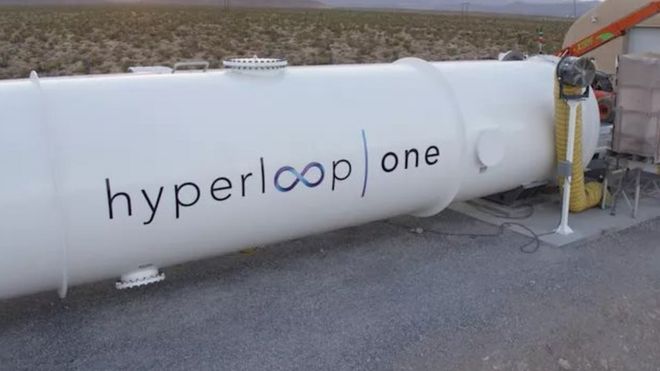 Image copyrightVIRGIN
Image copyrightVIRGINThe Virgin investment group has taken an undisclosed stake in Hyperloop One, one of several companies trying to create a pod-based transport system.
The terms of the deal have not been disclosed.
Virgin’s founder, Sir Richard Branson, is joining the Los Angeles-based firm’s board as part of the deal, and it is rebranding itself as Virgin Hyperloop One.
One expert suggested the tie-up would help raise the company’s profile.
“This is unproven technology and there’s a long way to go before it ever finds itself in use in the real world,” commented Prof David Bailey from Aston Business School.
“But this deal will certainly help in terms of marketing and potentially attract further investors to come into the operation.”
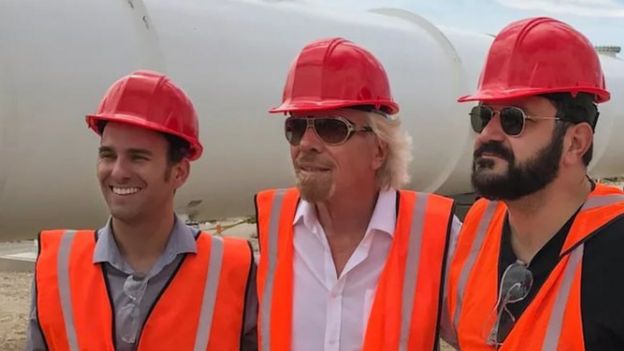 Image copyrightVIRGIN
Image copyrightVIRGINHyperloop One recently tested a prototype pod in the Nevada desert, which reached a speed of 310km/h (192mph) within a 500m (1,600ft) low air-pressured tube.
Its eventual goal is to reach 1,046km/h (650mph).
The system uses magnetic levitation and electric propulsion to cause pods to glide, and is pitched as a more eco-friendly mode of transportation than many of today’s alternatives.
The firm says it is working on several projects to bring the technology to the Middle East, Europe, India, Canada and the US.

In a press release, Virgin suggested the system could eventually cut journey times from Edinburgh to London to 50 minutes.
Hyperloop’s inventor, Elon Musk, has previously signalled his intention to build a separate Hyperloop system via his tunnel-digging Boring Company.
Hyperloop Transportation Technologies, TransPod Hyperloop and Dinclix GroundWorks are among other companies to have announced rival projects.
‘Complicated tech’
“The combination of our proven technology and Virgin’s expertise in transportation, operations, safety and passenger experience will accelerate the commercialisation phase of our company’s development,” said Hyperloop One’s co-founder Josh Giegel in a written statement.
Virgin already has investments in rail companies, cruise liners, airlines and a nascent space tourism operation.
However, Prof Bailey questioned its potential.
“I remain sceptical about using Hyperloop technology in places where there are high land values or dense population,” he explained.
“But it may be more appropriate in places like the United Arab Emirates.
“It’s a complicated technology and there’s a long way to go.”
Microsoft gives up on Windows 10 Mobile
 Image copyrightMICROSOFT
Image copyrightMICROSOFTMicrosoft appears to have abandoned its smartphone operating system ambitions.
The company’s Windows 10 chief has tweeted that developing new features and hardware for the Mobile version of the OS was no longer a “focus”.
Joe Belfiore added that he had also switched to Android himself.
Windows 10 Mobile tried to attract users by letting them run the same “universal apps” on both their PCs and handsets, but the concept failed to catch on.
The OS accounted for just 0.03% of the global market – based on smartphone shipments – between April and June, according to research company IDC.
The market intelligence provider said the news had been a long time coming.
“There wasn’t a wide range of devices running Windows 10 Mobile, so it wasn’t attractive to retailers or operators,” said IDC’s Francisco Jeronimo.
“And from a consumer perspective, the operating system didn’t provide as good an experience as Android or iOS.”
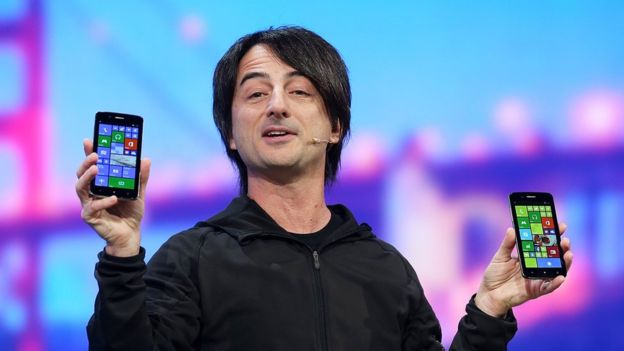 Image copyrightGETTY IMAGES
Image copyrightGETTY IMAGESMr Belfiore began a series of tweets on Sunday by discussing the recent launch of a test version of Microsoft’s Edge web browser for Android and iOS – the latest in a series of releases of its core software for rival mobile platforms.
He then went on to respond to questions about whether there was any point sticking with Windows 10 Mobile.
He said that while Microsoft would support the “many companies” that had adopted the platform, he had switched to Android for the diversity of its apps and hardware.
“Of course we’ll continue to support the platform… bug fixes, security updates, et cetera,” he said.
“But building new features or hardware is not the focus.”
Mr Belfiore posted Microsoft had tried “very hard” to incentivise other companies to release universal apps – even writing their software for them in some cases – but the number of users had been too low for most to bother.
The announcement comes a week after HP had said it no longer planned to release further Windows 10 Mobile handsets, and a fortnight after Microsoft co-founder Bill Gates disclosed that he had already made the switch to Android.
However, some manufacturers – including the UK’s Wileyfox and Germany’s TrekStor – had unveiled new models powered by Windows 10 Mobile as recently as last month.
“Most Microsoft applications are now available and supported on other mobile operating systems,” said Mr Jeronimo.
“After Satya Nadella took over [as chief executive], that clearly became the strategy – and after that happened what incentive was there to buy a Windows-powered phone?”
However, Microsoft may not have given up on powering smartphones altogether.
Earlier this year, Windows Central reported the company was working on a new version of Windows 10 – codenamed Andromeda – that would run on all types of computer and make it possible for third-party apps to adapt without having to code a special “universal” version.
It said the OS was due for release next year, but suggested the code would not be offered as an upgrade to existing Windows 10 Mobile devices.
A spokeswoman for Microsoft was unable to provide further comment.
Twitter trials 280-character tweet limit
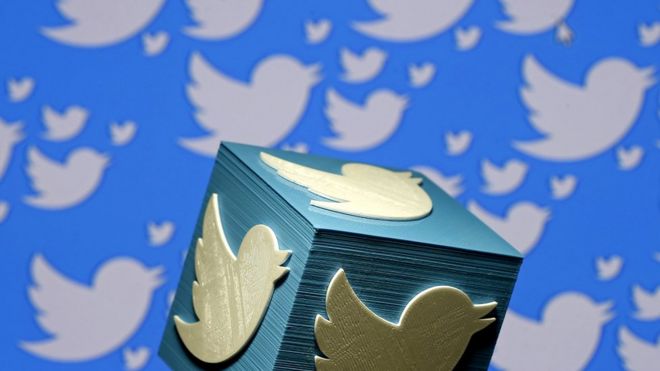 Image copyrightREUTERS
Image copyrightREUTERSSocial media site Twitter is trialling longer character limits to help users “easily express themselves”.
Twitter currently limits tweets to 140 characters, but has doubled that to 280 characters for a small group of users.
The current character limit was “a major cause of frustration” for some users, the firm said in a blog post.
The firm has been suffering from slowing growth and the shift could be one way for the firm to widen its appeal and attract new users.
“Trying to cram your thoughts into a Tweet – we’ve all been there, and it’s a pain,” Twitter product manager Aliza Rosen wrote.
Ms Rosen said the longer character limit was being tested in all languages bar Japanese, Chinese and Korean which she said could convey more information in a single character.
“We understand since many of you have been Tweeting for years, there may be an emotional attachment to 140 characters – we felt it, too.
“But we tried this, saw the power of what it will do, and fell in love with this new, still brief, constraint,” she said.
Analysis, Dave Lee, BBC North America technology reporter
With constant concerns over hate speech, propaganda bots, and trolling – you might wonder why Twitter is spending its time worrying about doubling the character limit.
Me too, if I’m honest.
But whatever – Jack Dorsey is right to point out that the 140 limit was only ever a technical limitation owing to the limits of text messages, something the service hasn’t had to worry about for a long time.
So why not make it a little longer?
It won’t be a dramatic change.
Twitter will hope it increases the engagement and attention times of its users.
Marketers will have more characters with which to get their message across, which might make Twitter a bit more cash.
@DaveLeeBBC
Twitter’s founder Jack Dorsey was one of the first to try the new limit out, saying it was “a small change, but a big move for us”.
But not all users were convinced. Writer Sarah Kendzior said it was too long.
And The Times journalist Sathnam Sanghera pointed out that US President Donald Trump, famed for his prolific tweeting, could get more characters.
But Twitter said the change could mean people tweet more frequently.
“When people don’t have to cram their thoughts into 140 characters and actually have some to spare, we see more people tweeting,” Ms Rosen said.
Deloitte hit by data breach
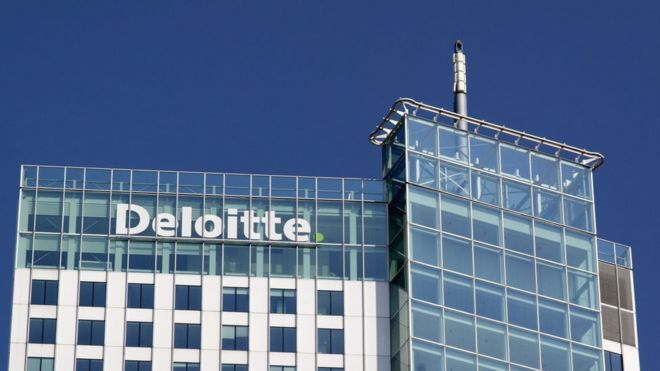 Image copyrightGETTY IMAGES
Image copyrightGETTY IMAGESCorporate finance giant Deloitte suffered a cyber-attack that compromised confidential data, including the private emails of some of its clients, the company has confirmed.
Its system had been accessed via an email platform and “very few” clients had been affected, Deloitte said.
The Guardian reported the attack had been discovered in March but could have happened months earlier.
Deloitte said it had contacted those whose data had been accessed.
It did not confirm exactly how many people had been affected or how much information had been compromised.
Deloitte carries out auditing, consultancy, tax and financial advice services for clients worldwide.
For the year ending on 31 May, it reported revenues of of $38.8bn (£29bn).
Email addresses
Prof Alan Woodward, cyber-security expert at Surrey University, told the BBC that private email addresses alone were valuable data for hackers.
“Many people expect their email address to be in the public domain,” he said.
“But what most people have done when dealing with confidential matters is they have a second address – and it looks like it is that one that may have been let out here.
“Is it immediately going to be mean people’s data will be breached? Not really – but the secondary, more confidential email addresses mean phishing can become much more sophisticated.”
Phishing is an attempt by criminals to get valuable information, such as banking login details, by pretending to be emailing from an official source.
It is more likely to succeed if it is sent to an address that regularly receives correspondence from the real organisation.
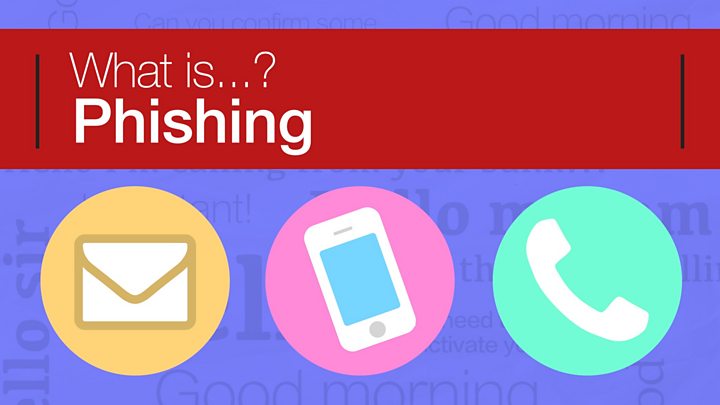
Deloitte said it had reviewed the email platform accessed and had determined there had been “no disruption” to the work of its clients.
However, Tony Pepper, chief executive of data security company Egress, said that compromised email servers could be full of sensitive information.
“This is why multi-factor access control such as two-factor authentication is important, especially for administrators,” he said.
“It makes it much harder to gain illicit access in the first place, and provides a warning if someone is trying to log in without your knowledge.”
Two-factor authentication involves providing extra information before logging in – for example, an access code sent by text message.
Mr Pepper added that individual emails should also be encrypted.
In a statement, Deloitte said it had informed government authorities and regulators of the breach.
“Deloitte remains deeply committed to ensuring that its cyber-security defences are best in class, to investing heavily in protecting confidential information and to continually reviewing and enhancing cyber-security,” it said.
Nest reveals alarm system and smart doorbell
 Image copyrightNEST
Image copyrightNESTNest is expanding its range of smart home products, ending a lull in which it improved existing kit, but did not expand into fresh categories.
The items include an internet-connected intruder alarm, a video-streaming doorbell and a door lock system developed in collaboration with Yale.
In addition, the firm – which is part of the Google empire – announced an outdoor version of its IQ facial recognition camera.
The tech is priced at a premium.
The Nest Secure alarm starter pack, for example, will cost $499 (£367) when it goes on sale in November.
And if owners want to add a cellular back-up service to ensure it still works if the wi-fi connection goes down, there is an additional $50 per year charge.
By contrast, the Era Vault smartphone alarm system starts at about £150, Yale’s SR-320 smart alarm kit can be bought for £250, and Samsung’s SmartThings Home Monitoring kit begins at £140.
“Home security is an vital part of smart home market and is already a very competitive market segment comprising of established players as well as other smart device players,” said Dinesh Kithany from the IHS Technology consultancy.
“Nest’s current price tags put them in a premium position and could possibly restrict them from having a sizeable market, particularly outside the US.”
Detect and tag
Nest is pitching its products as being easier-to-use than much of the competition and all controllable via a single app.
 Image copyrightNEST
Image copyrightNESTThe basic Secure system consists of three interlinked devices :
- Detect – a sensor that recognises both nearby motion and the open-shut movement. It can be placed on a wall, door or window
- Tag – a keyring fob that allows the system to be armed and disarmed by family members with a tap as they enter and leave their building
- Guard – a base that sounds the alarm and can be turned on and off by either being tapped with a Tag or having a code typed into its keypad. It also contains its own motion sensor and, like the company’s earlier smoke detector, guides its owners via voice recordings
Notifications are sent to the Nest app if the system detects anything unusual and allows the system to be turned on remotely if the owners forgot to do so when leaving.
The Hello video doorbell aims to rival similar products already on the market by providing high dynamic range (HDR) images – meaning they should be richer and more detailed than standard feeds when viewed on compatible equipment.
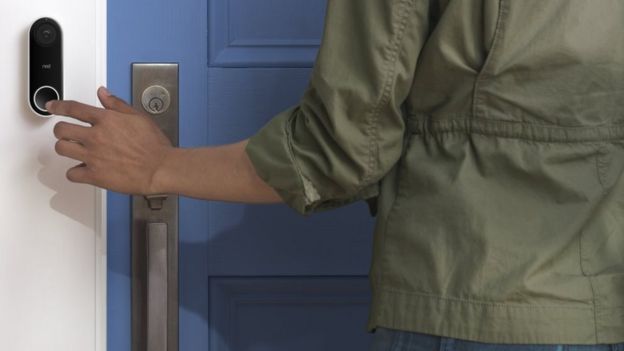 Image copyrightNEST
Image copyrightNESTThe device can be set to send alerts if it does not recognise a stranger’s face or hears an unusual sound – however owners must subscribe to an additional service to gain the function.
If paired with the other forthcoming product, the Nest+Yale lock, owners will be able to unlock their front door remotely for friends or deliveries, assuming they are comfortable with the idea.
“The Nest Hello video doorbell brings a few unique features to an increasingly crowded market,” remarked IHS Technology analyst Blake Kozak.
“[But] despite its brand recognition, Nest will have an uphill battle to supplant [smart doorbell] Ring, which currently has a global market share of about 45%.”
Neither Nest’s lock nor bell have yet been priced.
Analysis:
 Image copyrightNEST
Image copyrightNESTBy Dave Lee, BBC North America technology reporter
Last year, Nest’s co-founder Tony Fadell was forced out of his company – the primary criticism being that it wasn’t putting out enough new products.
The same complaint can’t be levied at the man who replaced him, Marwan Fawaz. At San Francisco’s Contemporary Jewish Museum, we saw a slew of new ideas, all focused on the idea that home security products are atrociously hard to use.
Nest Secure, a complete home security system, is much more ambitious than previous Nest products. And if it’s taking on the terrible home security industry, with its confusing number pads and unintuitive installation, it won’t be difficult to pick off that low-hanging fruit.
In fact, I’d say Nest’s biggest challenge with Secure will not be detecting bad guys, but eliminating the false positives that plague rival products.
Until I’m able to test it out properly, I’m going to withhold my judgement. But at first look, it seems Nest have put together a strong suite of new ideas that cater to – shock – normal people.
Take Nest Hello, the new smart doorbell. Its “nap time” mode allows you to still be notified when someone presses the bell, but it will not chime so as not to wake any sleeping babies (or adults, for that matter). That’s good, simple design.
UPDATE: Tony Fadell’s PR staff has been in touch to say Mr Fadell did not leave Nest because of a lack of new products – noting that “under Tony’s leadership, Nest shipped 4 hardware products, launched 2 new services, and had 5 app releases”.
However, reports published at the time of his departure cited a lack of new product lines – rather than upgrades to existing products – to be a key factor in his departure.
Google paid $3.2bn (£2.4bn) to buy Nest Labs in 2014 despite it only having two products – an internet-connected thermostat and smoke detector.
The expectation was that it would launch further smart home kit in short order.
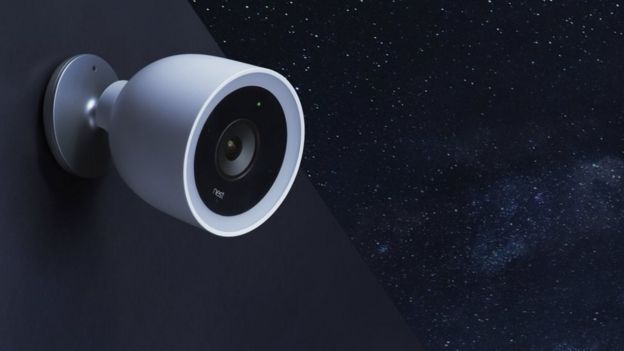 Image copyrightNEST
Image copyrightNESTBut, until now, the only new hardware category it had moved into had been security cameras, and they were only released after Nest acquired Dropcam, a start-up specialising in the field.
“This launch is essential for Nest and long overdue,” commented Ben Wood from the CCS Insight consultancy.
“Google paid an eye-watering sum for the business and it then seemed to have been struck by some kind of paralysis.
“In the meantime, the market has slipped away from them as others have piled in.
“The products announced today will help close the gap, but they are far from the disruptive leap that Nest made when it first exploded on to the scene.”
China set to launch an ‘unhackable’ internet communication
 Image copyrightSPL
Image copyrightSPLAs malicious hackers mount ever more sophisticated attacks, China is about to launch a new, “unhackable” communications network – at least in the sense that any attack on it would be quickly detected.
The technology it has turned to is quantum cryptography, a radical break from the traditional encryption methods around. The Chinese project in the city of Jinan has been touted as a milestone by state media.
The pioneering project is also part of a bigger story: China is taking the lead in a technology in which the West has long been hesitant to invest.
In the Jinan network, some 200 users from the military, government, finance and electricity sectors will be able to send messages safe in the knowledge that only they are reading them.
China’s push in quantum communication means the country is taking huge strides developing applications that might make the increasingly vulnerable internet more secure. Applications that other countries soon might find themselves buying from China.
So, what is this technology into which the country is pouring massive resources?
‘Unhackable’ communication
If you send a message you want to keep secure from eavesdroppers, traditional encryption works by hiding the key needed to read the message in a very difficult mathematical problem.
But what is “difficult” in terms of maths? It means you have to think really fast to figure it out as you try endless combinations of long, numeric keys. In 2017, that means you need to use a very powerful computer.
Steady improvements in computer power mean that the number-based keys have to be lengthened periodically. Encryption has a shelf life and is rapidly becoming more vulnerable.
There are also fears that the development of quantum computers, which effectively represent a massive step change in number crunching ability, will render much of modern encryption software vulnerable.
Quantum communication works differently:
- If you want to send your secure message, you first separately send a key embedded in particles of light
- Only then doyou send your encrypted message and the receiver will be able to read it with the help of the key sent beforehand
 Image copyrightSPL
Image copyrightSPLThe crucial advantage of this so-called quantum key distribution is that if anyone tries to intercept the light particles, they necessarily alter or destroy them.
What this means is that any attempt at hacking will immediately be noticed by the original sender and the intended receiver – hence its description as “unhackable”.
Leaving the West behind
If quantum communication can help to secure online communications, why is China so far ahead?
“For a long time people simply didn’t think it was needed,” says Prof Myungshik Kim of Imperial College, London, adding that it was not clear whether there was a commercial market for this technology.
“The mathematical difficulty of the current coding system was so high that it was not thought necessary to implement the new technology,” he says.
The research itself is not new and China does not have an edge over the competition. Where it does have an advantage is when it comes to applications.
“Europe has simply missed the boat,” says Prof Anton Zeilinger, a quantum physicist at Vienna University in Austria and a pioneer in the field.
He says he tried to convince the EU as early as 2004 to fund more quantum-based projects but it had little effect.
“Europe has been dragging its feet and this has hindered us from being able to compete,” he says.
There are quantum key-based networks operating in the US and Europe but most are being carried out as research projects, rather than with commercial partners.
Creating a market
One problem is that it is expensive to build applications like the Jinan network. And if there is not yet a commercial market, it is hard to get investors or governments as backers.
“We have to admit that when China invests into something, they have the financial power and manpower that is beyond probably anything else in the world except the US military,” says Valerio Scarani, a physicist with Centre for Quantum Technologies at the National University of Singapore.
The Jinan network is not the only quantum communication application China has developed.
 Image copyrightCHINA DAILY/REUTERS
Image copyrightCHINA DAILY/REUTERSLast year, it launched a satellite equipped to test quantum communication over large distances that cannot be bridged by cables. There has also been a link established between the country’s two main hubs, Beijing and Shanghai, so both ends can communicate and know when others are listening in.
So while it might not be clear yet whether quantum communication will indeed be the one technology to replace traditional encryption, it is widely considered as one of the leading candidates.
And China, in turn, is the leading country when it comes to building and experimenting with real applications of it.
“It’s a situation where the technology can create its market,” says Prof Zeilinger.
Once the technology is sold by Chinese companies, international banks might well be the first lining up as customers.
This week BBC News is taking a close look at all aspects of cyber-security. The coverage is timed to coincide with the two biggest shows in the security calendar – Black Hat and Def Con.
We will have further features and videos on Wednesday, and then coverage from the two Las Vegas-based events over the following days.
Google to add ‘news feed’ to website and app
 Image copyrightGOOGLE
Image copyrightGOOGLEGoogle is adding a personalised Facebook-style news feed to its homepage – Google.com -to show users content they may be interested in before they search.
It will display news stories, features, videos and music chosen on the basis of previous searches by the same user.
Users will also be able to click a “follow” button on search results to add topics of interest to their feed.
One analyst said the move would help Google compete with rivals.
“Google has a strong incentive to make search as useful as possible,” said Mattia Littunen, a senior research analyst at Enders Analysis.
“Facebook’s news feed is one of its main rivals. It is competing with other ways of accessing content.”
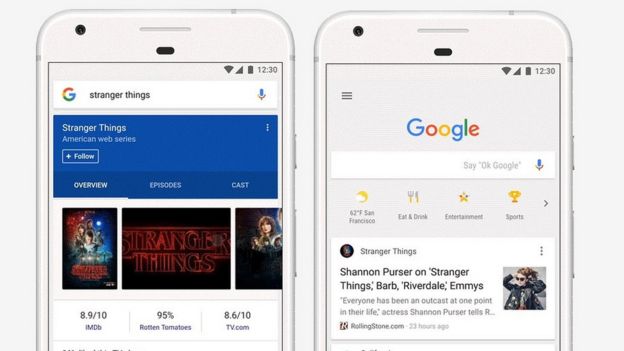 Image copyrightGOOGLE
Image copyrightGOOGLEGoogle has been trialling a simpler version of its news feed in its smartphone app since December, and its full news feed will be added to its smartphone apps in the US first.
But the company has now confirmed it intends to add the feature to Google.com too.
Google is known for its sparse homepage, which, though mostly white space, has, according to analytics firm Alexa Internet, become the world’s most-visited website.
The feed will include news stories from a variety of publishers, to avoid the so-called filter bubble effect, where people follow only content aligned with their pre-existing point of view.
“To provide information from diverse perspectives, news stories may have multiple viewpoints from a variety of sources… and, when available, you’ll be able to fact check,” the company said in a blog post.
The search giant already offers some context-based information in its smartphone search app in the form of Google Now cards, but discontinued its personalised homepage service iGoogle in 2013.
Items in the new personalised feed can be tapped or clicked to launch a Google search for more information.
“Search ads are more lucrative than in-feed ads such as Facebook’s,” said Mr Littunen.
“Google’s business is based on selling advertising, so this gives them more contact points with consumers.”
The company did not divulge whether it would insert advertisements or sponsored posts into the feed, but Mr Littunen suggested the focus of the service was to make Google more useful and drive users to its other services.
“Google has a long term project of anticipating user needs. It’s a move to make sure people aren’t going elsewhere for information,” he told the BBC.
Google announces London cloud computing data centre
 Image copyrightGOOGLE
Image copyrightGOOGLEGoogle has revealed it has built a London data centre for the cloud computing services it rents to third parties.
The facility is its second in Europe, after Brussels, and promises to provide faster access times to nearby clients.
Google is currently the third most capable cloud computing service provider, according to a recent study.
But the report, by Gartner, suggested Amazon and Microsoft had a clear lead.
The technology consultancy added that in terms of sales to the “cloud infrastructure as a service” market, Google’s share was also a “distant third”.
‘Lower latency’
Until now, the search giant has focused on opening data centres for its cloud computing platform in the US and Asia, where it has bases in Singapore, Taiwan and Tokyo.
But in announcing the London centre, it also disclosed plans to open facilities in Finland, the Netherlands and Frankfurt.
“GCP [Google Cloud Platform] customers throughout the British Isles and Western Europe will see significant reductions in latency when they run their workloads in the London region,” said product manager Dave Stiver, referring to processing delays caused by the distances data has to travel.
“In cities like London, Dublin, Edinburgh and Amsterdam, our performance testing shows 40% to 82% reductions in round-trip latency when serving customers from London compared with the Belgium region.”
A spokeswoman for the company added that the decision to build a London centre had been taken before the Brexit vote and was therefore unrelated to speculation that the UK’s data privacy laws may diverge from the EU’s in the future.
‘Deep discounts’
Google’s platform allows clients to offload data processing tasks and information storage, including support for apps they may offer to the public and analysing feedback gathered from internet-connected devices.
By charging customers for the amount of compute time they use rather than a flat rate, Google seeks to provide IT departments with a cheaper alternative to maintaining their own data centres.
The company’s existing customers include the Telegraph newspaper, Coca-Cola and the online education service Khan Academy.
At present, GCP offers fewer features than Amazon Web Services or Microsoft Azure, but it is catching up, according to Gartner.
“Google uses deep discounts and exceptionally flexible contracts to try to win projects from customers that are currently spending significant sums of money with cloud competitors,” its June report said.
And that had led some companies to use Google to supplement their use of Amazon or Microsoft’s rival platforms.
Gartner added: “GCP is increasingly chosen as a strategic alternative to AWS by customers whose businesses compete with Amazon.”
Last month it emerged that Wal-Mart had urged its IT vendors not to use Amazon’s service because it did not want its “most sensitive data… sitting on a competitor’s platform”.
Google does not disclose revenue for its cloud platform, but analysts estimate that it generated about $1bn (£776m) of sales last year and forecast it will double that amount in 2018.
By contrast, market leader AWS generated $12.2bn of sales in the past financial year, and is more profitable than Amazon’s better-known retail business.
Microsoft will update investors on Azure’s performance when it posts its full year’s results next week.
On Monday, it announced a new hybrid service that would allow customers to run Azure’s technologies on their own servers.
Azure Stack is being targeted at operations that have slow or non-existent internet connections – such as oil rigs and ships – as well as countries where data must be stored locally.
Apple’s China data centre
 Image copyrightGETTY IMAGES
Image copyrightGETTY IMAGESIn a related development, Apple has announced it is setting up its first data centre in China.
The facility is being developed in conjunction with a local company – Guizhou-Cloud Big Data Industry – and will be used to deliver its iCloud services to the public.
“This data centre will allow us to improve the speed and reliability of our products and services while also complying with newly passed regulations,” Apple said in a statement.
“No backdoors will be created into any of our systems.”
China introduced a law in June that requires overseas-based companies to both store data about its citizens locally and to give Chinese companies control over the operation of the computer servers involved.
Apple has said it will retain the relevant encryption keys and has indicated the move will not compromise users’ privacy.
But some experts have suggested it could put the company under more pressure to acquiesce to government demands in the case of future disputes.
TripAdvisor teams up with Deliveroo
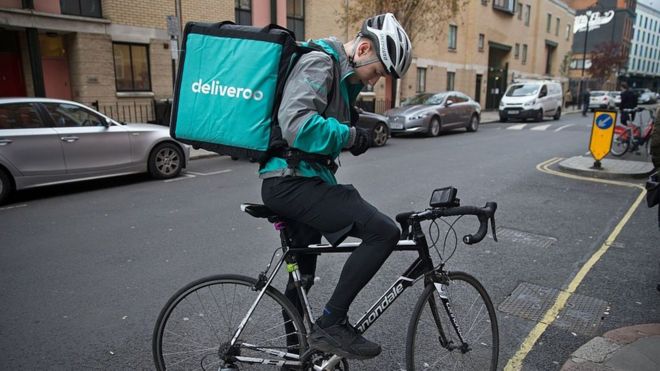 Image copyrightAFP
Image copyrightAFPRestaurant delivery service Deliveroo is to be incorporated into TripAdvisor listings in cities across 12 countries, thanks to a partnership between the two firms.
Customers will be able to access Deliveroo by clicking “order online” within TripAdvisor.
The scheme will connect more than 20,000 restaurants.
One e-commerce analyst said the move was a “logical step” to encourage customers to use such services.
The countries where the new feature will apply are the United Kingdom, Ireland, France, Germany, Spain, Italy, Belgium, the Netherlands, United Arab Emirates, Singapore, Hong Kong and Australia.
“Whether reading reviews, reserving a table through TheFork or placing a food order through Deliveroo, our goal is for TripAdvisor to serve as a one-stop-shop for diners around the world,” said Bertrand Jelensperger, senior vice president, TripAdvisor Restaurants.
The strategy was probably designed to improve customers’ relationships with both brands, suggested Martin Gill, an analyst at Forrester.
“Essentially it’s all about connecting service providers to consumers in a more dynamic way,” he told the BBC.
“TripAdvisor has been working on monetising its content for a long time – this is a logical step.”
The news comes on the day of the publication of a British government reporton employment practices, which focuses on the “gig economy” – in which people work on a short-term basis, including for companies such as Deliveroo and Uber.
The report recommends that workers for these firms should be classed as dependent contractors, with extra benefits.
Cheryl Yeoh: ‘It was sexual harassment at the highest level’

Tech entrepreneur Cheryl Yeoh’s account of sexual harassment by a leading Silicon Valley investor is the latest discrimination scandal to rock the tech industry.
Dave McClure resigned from 500 Startups, the firm he co-founded, following claims made by another woman – which encouraged Ms Yeoh to publish her own story online.
In her first interview, Cheryl Yeoh explains why she decided to talk publicly about the incident, which took place in 2014, and what she thinks needs to change.
It has been edited for length.
How do you feel about what happened now?
“I was obviously angry and hurt but also surprised that I felt like it wasn’t a rare thing, it was considered normal in the start-up world, the tech world.
“Now I realise that’s not OK and that’s part of the problem. That’s why we need to speak up about it and have a conversation around how do we change this dynamic, how do we change the narrative?”
You thought that it was “normal” for someone in your flat to brainstorm ideas to try to sleep with you?
“My issue is, it wasn’t even me inviting him. It was him and a few other business partners who wanted to come over to brainstorm, and in the start-up world it’s not uncommon to have after business hours brainstorm sessions.
“A lot deals are made after office hours, it’s definitely not uncommon at all.
“What I was shocked about was how bold he was to message me after that and, prior to that, he had asked me to come to his hotel room through text. It’s shocking how bold they are that they wouldn’t be afraid of consequences.”
Would you say that’s still the case today, or are things any better in the start-up world?
“Oh yeah… it takes one person coming out about sexual harassment or discrimination.
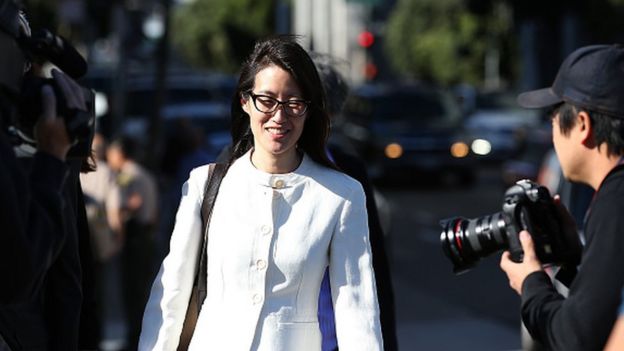 Image copyrightGETTY IMAGES
Image copyrightGETTY IMAGES“That was a few years ago with Ellen Pao’s case, and with the recent Susan Fowler story about sexual discrimination at Uber, and then a few other stories around Binary Capital, more and more women have the courage to speak up about it, because it was for the longest time a very controversial topic.
“So more people are aware of it and because of it more transparent policies are being created to address it so offenders are hopefully going to think twice before they do it again.”
Can you tell me, if it’s not too difficult, what happened that night?
“I had just moved to Malaysia from San Francisco to take on this very public position as CEO of a government agency that was given $30m [£23m] to start accelerators and programmes to encourage entrepreneurs in South East Asia.
“So Dave McClure had visited Malaysia to work with me to start an accelerator in Malaysia for South East Asia.
“After our board meeting he and some business partners came to my apartment to brainstorm ideas for the programme.
“They bought alcohol over, they brought whiskey, and he kept pouring whiskey into my glass before it was empty, and that felt a little weird.
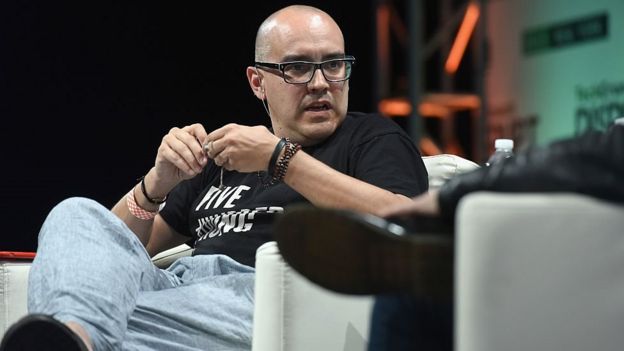 Image copyrightGETTY IMAGES
Image copyrightGETTY IMAGES“And then hours later, everyone decided to leave and order their cabs but he didn’t seem to want to. When I asked him, like ‘Dave are you leaving?’ he said ‘no’.
“So I said: ‘Do you want to crash here? I have a guest room’.
“I walked him to the guest room and then I walked to my room thinking: ‘I guess he’s just too intoxicated’.
“And then he came into my room and wanted to sleep with me, and I told him: ‘No, I have a boyfriend what are you doing, do you want to leave?’
“I showed him the way out and on the way out, he backed me up against the wall and moved forward to kiss me… that was when it was overboard. Thank goodness I didn’t drink that much and I pushed him away and I opened the door and made sure he was out.
“I couldn’t help but think: what if I was helpless, or I was weaker, or he used more force, what could have happened?
“And that’s just terrible, no one should ever go through that ordeal, so I think that itself is sexual harassment at the highest level.
“And the second thing that was going on there was the power dynamic.
“He had a deal looming over us and if I were to speak up about him then it might compromise the accelerator and that wasn’t even for me, it was for the region, and I felt like I couldn’t report him because the whole region would not get the benefits of the accelerator just because of that night.”
Did you confront him immediately after that, did you speak to him about it again?
“I tried not to speak to him after that, I didn’t know what to say.
“If I had told him how angry I was at the time he might have pulled the deal off… you know now looking back, I’m angry that even though I was mad at him I couldn’t tell him that and that’s just not a good memory.
“But in my post, when I retold my account of what happened, I urged women to write down a full account of what happened (that night), email it to themselves right away so they have a timestamp and they remember what happened, or email it to your best friend, your mum, and when you’re comfortable email it to him, so he knows that what he did was not OK, and that you’re hurt.
“I think that helps with getting closure and it also makes them realise that you’re not OK with it.”
Did you send your post to Dave McClure before you published it?
“I didn’t send him my entire post, I sent him a summary of what happened that night, that he pushed me, I said no multiple times, I told him I was hurt and his [previous] apology was not sufficient.
“And he wrote back and told me that he acknowledged it and he’s ashamed of it and he’s sorry and that he can’t deny any of it.”
[The BBC has seen this message]
And you also heard a claim that he had harassed somebody after leaving your apartment that night?
“As he was leaving my apartment he messaged me around 04:00, and then half an hour after he left he messaged another female entrepreneur in tech and propositioned her.
“She sent me proof of that and I saw it and I was shocked.
[The BBC has also seen screenshots].
“This is not the behaviour of someone who was intoxicated that night and maybe made a mistake.
“It was premeditated and a failed attempt and then another attempt immediately at 05:00.”
 Image copyrightCHERYL YEOH
Image copyrightCHERYL YEOHDid you ever think about pressing charges or were you just too worried about the impact on the work you were trying to do?
“At that time, I was in Malaysia, I wasn’t familiar with the law in Malaysia for sexual harassment, I frankly didn’t have time to look it up, I couldn’t go through all that – I was CEO of a $30m company, I just couldn’t at the time.
“I’m back here in San Francisco now and because the incident didn’t happen in the US I can’t really press charges here but I am looking into what I can do in Malaysia.
Hardly any people who actually come forward want to talk on the record, do you think that is going to change?
“I really hope so, it is something very personal and emotional and it’s also very controversial – it shouldn’t be but it is. There are grey areas.
“It’s very easy to victim blame – why did you even let him into your house, why were you even drinking, a tonne of things?
“People don’t want to be judged and if their names that are going to be linked to a sexual harassment case online, very few people are willing to let that tarnish their name.
“I’m in a different position, I’ve done previous work before, I’ve had publicity online for other good things I’ve done, so I know my record goes far beyond this and I certainly don’t need the publicity for this for myself.
“In my post I offer a way to categorise the level of harassment or assault. So an inappropriate comment should have a very different consequence to an unwanted physical sexual advance, and I think if there are different categories it will make feel people more comfortable reporting them.”
Dave McClure’s called his resignation post “I’m a creep, I’m sorry”. He has admitted inexcusable behaviour, is having counselling and has made a very frank admission about his past. Do you think that’s enough?
“No, because the accusation at the time was that he had texted an entrepreneur who was seeking a job from him and the text goes ‘I’m not sure whether to hire you or hit on you’… that’s not right, but it’s a more minor offence.
“When he stepped down from being CEO and apologised for his inappropriateness, everyone thought it was because of that comment, it was too minor a misdeed for him to step down.
 Image copyrightCHERYL YEOH
Image copyrightCHERYL YEOH“He had a tonne of supporters coming out to say: ‘Oh my gosh, you don’t deserve this, you were just being a man, what’s wrong with this’.
“And that was the problem because the public didn’t know the extent of the harassment he had done to other people.”
Do you think part of the problem is the culture in Silicon Valley?
“It is the nature of tech start-ups, it’s definitely male dominated but you can say the same for finance, and this doesn’t just happen in tech or finance, it happens in the media, in fashion, so many industries. I’ve heard about it from my friends.
“But why it seems like it’s only in the tech world is that we are more vocal as entrepreneurs and we’re more social and we have a more transparent company culture – people are more willing to speak up and there are more platforms and support groups for us to do such a thing.
“So, I think awareness is just more heightened in the tech world, but it happens everywhere.”
Facebook reveals measures to remove terrorist content
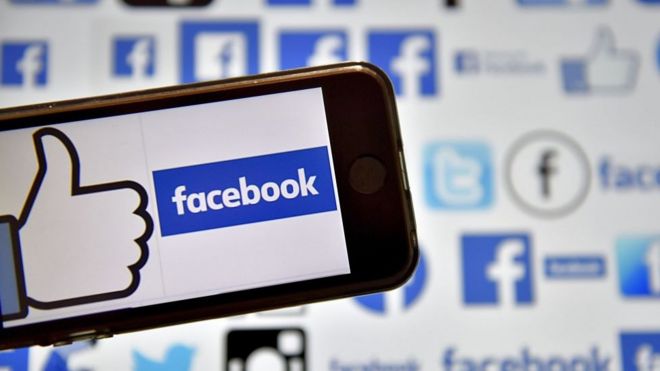 Image copyrightGETTY IMAGES
Image copyrightGETTY IMAGESFacebook has announced details of steps it is taking to remove terrorist-related content.
The move comes after growing pressure from governments for technology companies to do more to take down material such as terrorist propaganda.
In a series of blog posts by senior figures and an interview with the BBC, Facebook says it wants to be more open about the work it is doing.
The company told the BBC it was using artificial intelligence to spot images, videos and text related to terrorism as well as clusters of fake accounts.
“We want to find terrorist content immediately, before people in our community have seen it,” it said.
No safe space
The ability of so-called Islamic State to use technology to radicalise and recruit people has raised major questions for the large technology companies.
They have been criticised for running platforms used to spread extremist ideology and inspire people to carry out acts of violence.
Governments, and the UK in particular, have been pushing for more action in recent months, and across Europe talk has been moving towards legislation or regulation.
 Image copyrightGETTY IMAGES
Image copyrightGETTY IMAGESEarlier this week in Paris, the British prime minister and the president of France launched a joint campaign to ensure the internet could not be used as a safe space for terrorists and criminals.
Among the issues being looked at, they said, was creating a new legal liability for companies if they failed to remove certain content, which could include fines.
Facebook says it is committed to finding new ways to find and remove material – and now wants to do more than talk about it.
“We want to be very open with our community about what we’re trying to do to make sure that Facebook is a really hostile environment for terror groups,” Monika Bickert, director of global policy management at Facebook, told the BBC.
One criticism British security officials make is of the extent to which companies rely on others to report extremist content rather than acting proactively themselves.
Facebook has previously announced it is adding 3,000 employees to review content flagged by users.
But it also says that already more than half of the accounts that it removes for supporting terrorism are ones that it finds itself.
It says it is also now using new technology to improve its proactive work.
“We know we can do better at using technology – and specifically artificial intelligence – to stop the spread of terrorist content on Facebook,” the company says.
 Image copyrightAFP
Image copyrightAFPAutomatic analysis
One aspect of the novel technology it is talking about for the first time is image matching.
If someone tries to upload a terrorist photo or video, the systems look to see if this matches previous known extremist content to stop it going up in the first place.
A second area is experimenting with AI to understand text that might be advocating terrorism.
This is analysing text previously removed for praising or supporting a group such as IS and trying to work out text-based signals that such content may be terrorist propaganda.
That analysis goes into an algorithm learning how to detect similar posts.
Machine learning should mean that this process will improve over time.
The company says it is also using algorithms to detect “clusters” of accounts or images relating to support for terrorism.
This will involve looking for signals such as whether an account is friends with a high number of accounts that have been disabled for supporting terrorism.
The company also says it is working on ways to keep pace with “repeat offenders” who create accounts just to post terrorist material and look for ways of circumventing existing systems and controls.
“Our technology is going to continue to evolve just as we see the terror threat continue to evolve online,” Ms Bickert told the BBC.
“Our solutions have to be very dynamic.”
One of the major challenges in automating the process is the risk of taking down material relating to terrorism but not actually supporting it – such as news articles referring to an IS propaganda video that might feature its text or images.
Whereas any image of child sexual abuse is illegal and can be taken down, an image relating to terrorism – such as an IS member waving a flag – can be used to glorify an act in one context or be used as part of a counter-extremism campaign in another.
“Context is everything,” Ms Bickert said.
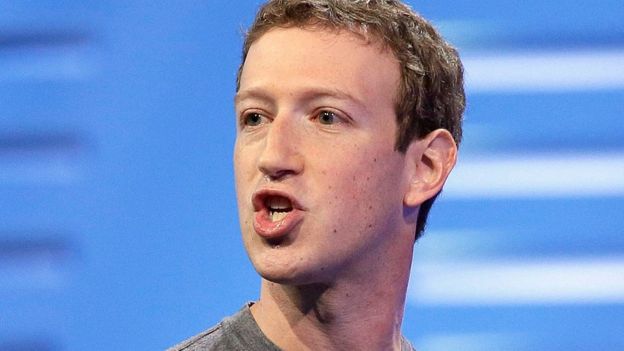 Image copyrightAP
Image copyrightAPCaught out
The company says its algorithms are not yet as good as people at understanding the context that helps distinguish between the different categories.
Facebook says it has grown its team of specialists so that it now has 150 people working on counter-terrorism specifically, including academic experts on counterterrorism, former prosecutors, former law enforcement agents and analysts, and engineers.
Ms Bickert said: “We have to have people who can review it.
“I like to think of it as using the computers to do what computers do well and using people to do what people do well.”
Challenges remain. A few minutes after creating an account in a made-up name, I was able to find complete versions of IS propaganda videos that included the beheading of Western hostages.
Critics argue that the challenges may be enormous in a site with two billion users but the company makes billions of dollars from the content on its site and could devote more resources – and more of its best engineers – to dealing with the issue.
The company says it has begun focusing its “most cutting edge techniques” to combat the problem and clearly now believes it needs to be seen to be acting.
‘US rethinks Chinese investment in AI start-ups’
 Image copyrightGETTY IMAGES
Image copyrightGETTY IMAGESThe Pentagon has raised concerns about China’s access to artificial-intelligence-based technology developed in the US, according to Reuters.
The news agency says a leaked report proposes that export controls be updated to stop Chinese organisations being able to invest in some start-ups.
It suggests the move is needed to prevent their advanced algorithms being repurposed for the military by Beijing.
One expert said the report sounded credible.
“Quite a few people in the US security establishment see China as a likely potential adversary,” Prof Trevor Taylor, from the UK’s Royal United Services Institute for Defence and Security Studies, told the BBC.
“A message that’s come through clearly from the Pentagon is that artificial intelligence and man-machine interfaces are going to be crucial for the US to restore the gap between its capabilities and that of others.
“So, it’s understandable that they would not want the Chinese to get access to American expertise.
“And that innovation is widely associated with small firms that are seeking to secure funding.”
Reuters’ report follows an appearance by Defence Secretary Jim Mattis at a Senate hearing on Tuesday.
“For decades, the United States enjoyed uncontested or dominant superiority in every operating domain or realm… today, every operating domain – outer space, air, sea, undersea, land and cyber-space – is contested,” he said.
 Image copyrightGETTY IMAGES
Image copyrightGETTY IMAGESGen Mattis added that the body responsible for reviewing company takeovers that posed security concerns had become “outdated” and needed to be “updated”.
Reuters quoted a Trump administration official as saying: “We’re examining CFIUS [the committee on foreign investment in the US] to look at the long-term health and security of the US economy, given China’s predatory practices.”
The news agency added that a senior Republican was drafting legislation to give the committee more power to block some technology investments, although the law is not expected to single out specific types of innovation.
Pentagon concerns
President Obama blocked the Chinese takeover of the German chip-maker Axitron on national security grounds last year.
CFIUS’s own actions tend to be kept secret, but it is thought to be responsible for Chinese companies failing to buy stakes in the military chip-maker GCS Holdings and the hard-disk-maker Western Digital.
According to Reuters, the Pentagon is concerned that CFIUS’s current remit does not extend to reviewing Chinese companies taking a stake or forming a joint venture with those involved in the development of early-stage technologies and in particular AI.
Such partnerships might deter the US Department of Defense from forming its own links to the business at a later stage.
Examples of recent deals that might have warranted further review include:
- Baidu’s takeover of computer vision specialist xPerception
- Alibaba’s investment in augmented reality developer Magic Leap
- Huawei’s AI research partnership with the University of California
- Tencent’s purchase of a stake in Tesla, which is designing self-driving cars
However, any interference might jeopardise US technology companies investing in China.
 Image copyrightGETTY IMAGES
Image copyrightGETTY IMAGESFor example, Google has taken a stake in the mobile voice company Mobvoi, while Apple has invested $1bn in Didi Chuxing, a car-hailing company working on self-driving technology.
“As far as defence-related industries are concerned, the US has allowed significant investment by foreign firms – particularly British ones – in the past because it has said, ‘We don’t mind who owns it, so long as access to the knowledge within that organisation is strictly controlled, and if it’s classified it does not leave the US,'” said Prof Taylor.
“But this is now being [reconsidered] in the context of a wider concern about China.”
14/06/2017
Uber: Travis Kalanick’s rollercoaster reign
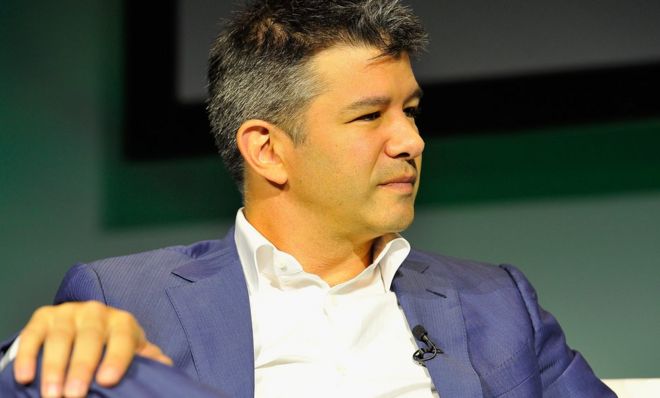 Image copyrightGETTY IMAGES
Image copyrightGETTY IMAGESThere is no doubt that Travis Kalanick, the billionaire founder of the Uber lift-sharing platform, built a company that is one of the giants of Silicon Valley.
However, recent months have seen him make a series of apologies for both his own behaviour and that of members of his leadership team. He has now told staff he is going to take some time away from the firm. He is set to have fewer responsibilities upon his return.
Uber now operates in 662 cities around the world and is valued at nearly $70bn (£55bn).
Mr Kalanick’s reputation for ruthlessness and machismo has led to some deeply uncomfortable reports about the culture inside Uber: with persistent stories about organisational sexism and disputes with drivers over their terms and with local authorities and taxi companies.
“Travis’s biggest strength is that he will run through a wall to accomplish his goals,” investor and mentor Mark Cuban told the New York Times.
“Travis’s biggest weakness is that he will run through a wall to accomplish his goals. That’s the best way to describe him.”
‘Scrappy entrepreneur’
Travis Kalanick’s informal “bro-like” tone has not always helped.
In a widely reported email to staff ahead of a company party in Miami in 2013, Mr Kalanick – known as TK – asked employees not to have sex with each other if they were in the “same chain of command” or to throw beer kegs off tall buildings, and levied a $200 (£158) “puke charge” for anyone who was sick, presumably as a result of over-indulgence.
 Image copyrightGETTY IMAGES
Image copyrightGETTY IMAGESIt’s difficult to imagine Apple’s Tim Cook or Facebook’s Mark Zuckerberg writing a similar missive.
Board member Arianna Huffington said in March that Mr Kalanick needed to evolve his leadership style from “scrappy entrepreneur” to “leader of a major global company.”
President Jeff Jones is one of a stream of executives who have parted ways with the company in recent months. Mr Jones left after less than one year in post.
“It is now clear… that the beliefs and approach to leadership that have guided my career are inconsistent with what I saw and experienced at Uber, and I can no longer continue as president of the ride-sharing business,” he said in a statement to Recode.
Mr Kalanick himself acknowledged that he needed to “grow up”, after a video of him swearing at an Uber driver in a row over rates was shared online.
He said he was “ashamed” of his behaviour and accepted that he needed “leadership help”.
He now has a private driver.
Women
 Image copyrightGETTY IMAGES
Image copyrightGETTY IMAGESIt has been claimed that Mr Kalanick saw the medical records of a woman who accused an Uber driver of rape in India, after they were obtained by Uber Asia executive Eric Alexander.
Uber did not comment directly but confirmed that Mr Alexander no longer worked there.
In February 2017, a blog post by former Uber engineer Susan J Fowler, which documented her experiences of sexism at Uber, went viral.
It led to Mr Kalanick launching an investigation into the culture of the organisation.
He described her experiences as “abhorrent” and against the company’s values.
Another Uber employee who wrote about her time there said it had been suggested to her – by another woman – that a male manager couldn’t look her in the eye because she was wearing a sleeveless tank top.
There are other anecdotes about Uber’s attitude to women that have raised eyebrows.
‘Boob-er’
During an interview with the magazine GQ in 2014, Mr Kalanick joked about a service for women on demand, which he nicknamed “Boob-er”.
Ex-girlfriend Gabi Holzwarth recalled going with Mr Kalanick and a team of employees to an escort-karaoke bar in Korea where women sat in a circle at the bar, wearing tags with numbers on them.
He did not get involved and the pair did not stay for long.
She said she had later been asked by senior vice-president Emil Michael to tell reporters they had sung karaoke and “had a good time”.
Mr Michael said this was not his recollection of the conversation.
Uber said the event had been reported to human resources and the workplace culture report investigators.
Mr Michael left the company on 12 June.
Also in 2014, a promotion by Uber in Lyon promised to pair riders with “hot chick” drivers for a maximum period of 20 minutes – Buzzfeed obtained screenshots of the blog post, subsequently deleted, which featured models in lingerie.
The same year Emil Michael suggested at a dinner that the company should hire researchers to dig dirt on its critics, singling out one female journalist in particular.
Mr Michael later apologised for the “off the record” remarks.
Breaking the rules
Some of Uber’s operations under Travis Kalanick’s watch have been in decidedly grey areas.
The New York Times revealed that it had been using a computer program called Greyball, which it claimed had been used to identify officials trying to catch its drivers and deny them service in areas where Uber had not yet been authorised.
Uber said the program had been used to prevent “fraudulent users” from violating its terms.
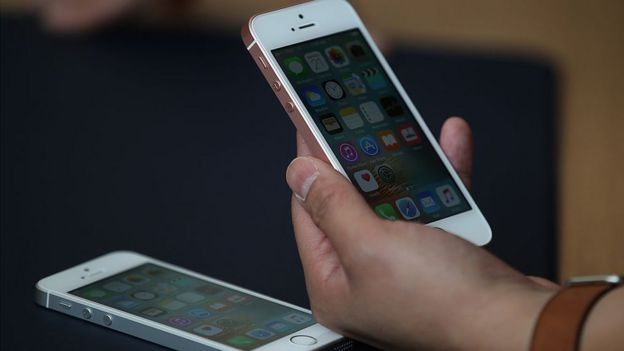 Image copyrightGETTY IMAGES
Image copyrightGETTY IMAGESIt was also reported that Apple boss Tim Cook had personally intervened when his company had discovered Uber had been using “fingerprinting” code to track iPhones by collecting their serial numbers, which is against the terms of the app store.
Uber claimed the process deterred criminals from installing its app on stolen handsets.
Waymo, the self-driving car firm owned by Google’s parent firm Alphabet, has accused Uber of stealing trade secrets.
In court, Waymo alleged that Anthony Levandowski, a former employee, downloaded 14,000 confidential files before leaving the company in 2016 and later joining Uber to head up its self-driving car project.
Uber denies receiving or using stolen technology.
In May 2017 it fired Mr Levandowski for allegedly declining to assist in its investigation relating to the lawsuit.
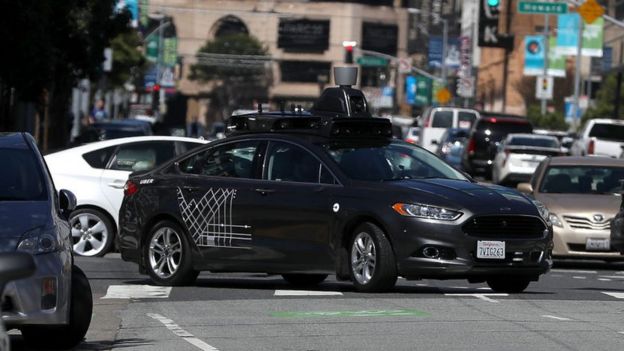 Image copyrightGETTY IMAGES
Image copyrightGETTY IMAGESThe idea of driverless cars was never going to sit well with Uber’s thousands of drivers, even though it appealed to its investors, and the company approached it with the steamrolling tactics favoured by Mr Kalanick.
A research collaboration with Carnegie Mellon University’s robotics centre soured after 40 of its researchers and scientists left to join the ride-sharing firm.
 Image copyrightGETTY IMAGES
Image copyrightGETTY IMAGESUber has also been criticised over its price-surging policy, where the price of a journey goes up if it is in high demand.
On that subject, Mr Kalanick was unapologetic.
“We did more trips because of our approach, not fewer,” he told Wired following a price surge during heavy snow in New York in 2013.
“We gave people more options to get around, and that is the whole fricking goal.”
Perhaps it is his burning ambition to meet that one “fricking goal” that might ultimately have driven Travis Kalanick to bad behaviour.
“We characterise him as aggressive, dog-eat-dog, and he’s obviously an extremely driven individual, that’s how he’s achieved what he’s achieved,” said John Blakey, executive coach and author of The Trusted Executive, in a recent BBC interview.
“[But] what got you here, won’t get you there. Those attributes – the challenge, the boldness, the brashness – to get to the next stage of the game, he has to recognise he needs new qualities.”
19/05/2017
Twitter user numbers overtaken by China’s Sina Weibo
 Image copyrightGETTY IMAGES
Image copyrightGETTY IMAGESThere are now more people using Sina Weibo, the Chinese micro-blogging platform, than there are using Twitter.
According to the Chinese company’s first quarter results, it has 340 million active monthly users, 30% up on the previous year.
About 154 million people use the site daily, 91% of whom access it via mobile.
By comparison, Twitter, which is blocked in China, has around 328 million active monthly users.
“Our relentless focus to build the best social media experience in China is reflected in Weibo’s strong performance,” Gaofei Wang, Weibo chief executive, said in a statement.
“Looking ahead, we continue to see strong momentum, as we further optimise Weibo to share, discover and consume information, especially for the mobile, social and video environment.”
Preferred platform
China has an estimated 731 million web users, more than 90% of whom can access the internet via a smartphone, according to the China Internet Network Information Centre.
Sina Weibo is the most popular of China’s micro-blogging services, and it is the preferred platform for most mainland Chinese newspapers and TV stations, which have millions of followers.
Last year, seeing how popular live streaming video was becoming, Sina Weibo launched its own live streaming app, Yizhibo, nicknamed “Yi”.
Analysis: Kerry Allen, BBC Monitoring
The success of mobile messenger WeChat (China’s answer to WhatsApp) has challenged Sina Weibo in recent years, with increased smartphone ownership in the mainland influencing social media users to read news on their phones, instead of computer screens.
But Sina Weibo has remained competitive by making a number of strategic partnerships that have given host to an array of new functions, many of which go even beyond those of Twitter – which is blocked in China.
In 2014, e-commerce giant Alibaba, which owns a 31.4% stake of Weibo, helped boost the platform’s e-commerce capabilities with the introduction of “Weibo Payment”, enabling users to shop online using the service.
But with WeChat heavily investing in similar capabilities last year, Weibo made a perhaps daring move to introduce live streaming capabilities to its platform.
It had earlier shied away from replicating Twitter in doing this, given that the Chinese government is nervous about politically sensitive issues reaching widespread awareness.
Twitter is blocked in China, along with Facebook, Google, YouTube and many foreign news websites.
The number of people actively using Twitter has continued to rise by about 6% each month, but in April it revealed that its revenue from advertising had fallen by almost 8% in the space of a year.
Chief executive Jack Dorsey said the company “continued to face revenue headwinds”, but that user numbers had increased in part because of measures to reduce abusive content.
17/05/2017
Indian teen builds world’s ‘lightest satellite’
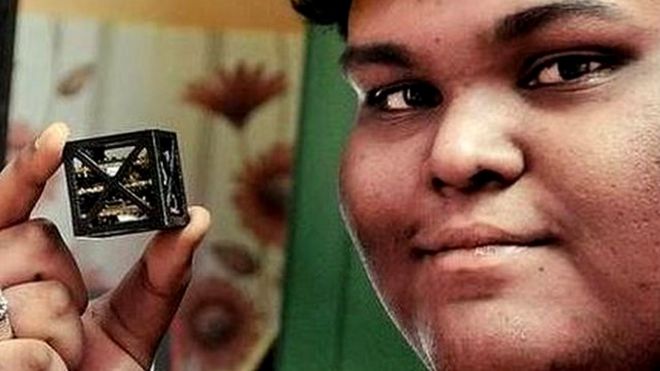 Image copyrightTWITTER/@RIFARH_SHAAROOK
Image copyrightTWITTER/@RIFARH_SHAAROOKAn Indian teenager has built what is thought could be the world’s lightest satellite, which will be launched at a Nasa facility in the US in June.
Rifath Shaarook’s 64-gram (0.14 lb) device was selected as the winner in a youth design competition.
The 18-year-old says its main purpose was to demonstrate the performance of 3-D printed carbon fibre.
Rifath told local media his invention will go on a four-hour mission for a sub-orbital flight.
 Image copyrightFACEBOOK/RIFATHSHAAROOK
Image copyrightFACEBOOK/RIFATHSHAAROOKImage captionA beta version of the satellite illustrates just how small the device isDuring that time, the lightweight satellite will operate for around 12 minutes in a micro-gravity environment of space.
“We designed it completely from scratch,” he said. “It will have a new kind of on-board computer and eight indigenous built-in sensors to measure acceleration, rotation and the magnetosphere of the earth.”
The satellite has been named KalamSat after former Indian president Abdul Kalam, a pioneer for the country’s aeronautical science ambitions.
His project was selected in a challenge called Cubes in Space, organised by education company idoodle with support from Nasa and the Colorado Space Grant Consortium.
Newcomer scientist Rifath comes from a small town in Tamil Nadu and now works as lead scientist at Chennai-based Space Kidz India, an organisation promoting science and education for Indian children and teenagers.
The KalamSat is not his first invention: at the age of 15, he built a helium weather balloon as a part of nationwide competition for young scientists.
16/05/2017
AirAsia to launch China joint venture
Budget airline AirAsia has signed a joint venture agreement to set up a new low-cost carrier in China.
It wants to tap in to demand in the country, which is set to overtake the US to become the world’s biggest aviation market within the next decade.
Based in the central eastern city of Zhengzhou, the airline will be run in partnership with the Everbright Group.
AirAsia already has operations in Malaysia, Thailand, Indonesia, Japan, Philippines and India.
“This Chinese venture represents the final piece of the AirAsia puzzle,” said chief executive Tony Fernandes, adding it “closes the loop” in the region.
Once for the privileged few, flying domestically within China has boomed. Civil Aviation Administration of China figures suggest that in 1982 there were fewer than four million air passenger journeys within the country. By 2016, that number had reached 487 million.
‘Give back’
 Image copyrightAFP
Image copyrightAFPImage captionWill AirAsia end up buying some of the China-made Comac C919s when they come onto the market?AirAsia said that as well as running the airline, it would invest in aviation infrastructure and set up an academy to train pilots, crew and engineers.
There would also be new facilities to service and maintain aircraft in Zhengzhou, the capital of Henan province.
AirAsia already has a presence in China, flying to 15 destinations there, making it the country’s largest foreign budget airline.
“China has been good to us and we want to give back in a big way, and this is just the start of an enduring partnership that will benefit both China and Malaysia,” said AirAsia executive chairman Kamarudin Meranun.
He added the airline had “started exploring” the prospect of eventually buying Chinese-made Comac C919 planes which are currently in development.
05/05/2017
Most US homes have mobiles but no landline

Less than half of US households now have a landline, according to a study from the US government.
Of the households surveyed by the Centers for Disease Control and Prevention (CDC), 50.8% of homes had at least one mobile phone but no landline.
A further 3.3% of homes surveyed had neither a mobile phone nor a landline.
The CDC found that mobile-only households had become the majority during its twice-yearly survey into the health and habits of Americans.
Representative sample
Participants in the National Health Interview Survey are asked to provide a residential phone number in case the CDC needs to contact them again.
In 2003, it started to ask participating households whether they had “at least one phone inside [the] home that is currently working and is not a cell phone”.
Its preliminary data for the second half of 2016 suggests that only 45.9% of households had a landline.
The CDC does not explore the reasons why participants do not have a fixed phone line, if that is the case.
Instead, it uses the data to help ensure it is interviewing a representative sample of the US population.
Shared houses
The CDC says that the number of households without a landline has risen by 2.5% since the same period in 2015.
It suggests that more than 123 million adults (50.5%) and more than 44 million children (60.7%) live in households with at least one mobile phone but no landline.
More than 70% of adults aged 25-34 were found to live in mobile-only homes, while almost 84% of households made up of unrelated adults had no fixed phone line.
Renters, adults deemed to be living in poverty or near-poverty, and Hispanic adults were also found to be more likely to live in mobile-only households.
Cutting the cord
In the UK, the proportion of mobile-only households is much lower.
Figures from the telecoms and communications watchdog, Ofcom, show that at the start of 2017, just 18% of UK households were mobile-only.
The reason, it says, is that despite a steady decline in the quantity of calls made and received via a landline, most homes still need one in order to get fixed line broadband.
Many in the US can get their broadband and TV via a cable provider instead, which removes the need for a traditional phone line.
Facebook nears two billion monthly users
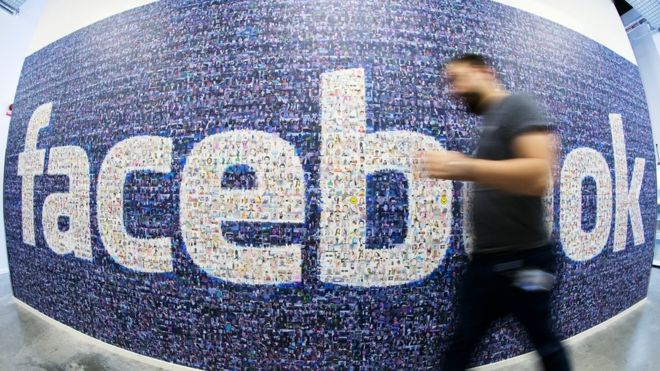
Facebook’s profits have jumped in the first three months of the year, as the social network closes in on two billion users, according to its latest results.
The number of people using Facebook each month increased to 1.94 billion, of which nearly 1.3 billion use it daily, the company said.
The US tech giant reported profits of just over $3bn (£2.4bn) in the first quarter, a 76% rise year-on-year.
However, it warned that growth in ad revenues would slow down.
The company has also come under sustained pressure in recent weeks over its handling of hate speech, child abuse and self-harm on the social network.
On Wednesday, Facebook chief executive Mark Zuckerberg announced it was hiring 3,000 extra people to moderate content on the site.
A quarter of the world’s population now uses Facebook every month, with most of the new users coming from outside of Europe and North America.
Speaking after the results, Mr Zuckerberg said the size of its user base gave Facebook an opportunity to expand the site’s role, moving into TV, health care and politics.
“With that foundation our next focus will be building community,” he said. “There’s a lot to do there.”
Ad slowdown
The company grew its revenue from advertising, which accounts for almost all of Facebook’s income, by 51% to $7.9bn in the period.
However, chief financial officer David Wehner said ad revenue growth would come down significantly over the rest of 2017.
He repeated previous warnings that Facebook was hitting a limit on the number of ads it can squeeze onto users’ pages.
Martin Garner, an analyst at CCS Insight, said: “It’s now clear that last year’s stellar results from Facebook represented the peak of online advertising growth, as Facebook had warned.”
Mr Garner said the company needed to start showing it could make more money from its other products, including Video, Instagram, Whatsapp, Messenger, and virtual reality.
28/04/2017
TED 2017: UK ‘Iron Man’ demonstrates flying suit
 Image copyrightBRET HARTMAN/TED
Image copyrightBRET HARTMAN/TEDImage captionRichard Browning took off beside the spectacular Vancouver harbour
A British inventor, who built an Iron Man-style flight suit, has flown it at the Ted (Technology, Entertainment and Design) conference in Vancouver.
Richard Browning’s short flight took place outside the Vancouver Convention Centre in front of a large crowd.
Since he posted the video of his maiden flight in the UK, Mr Browning has had huge interest in his flying suit.
But he insists the project remains “a bit of fun” and is unlikely to become a mainstream method of transportation.
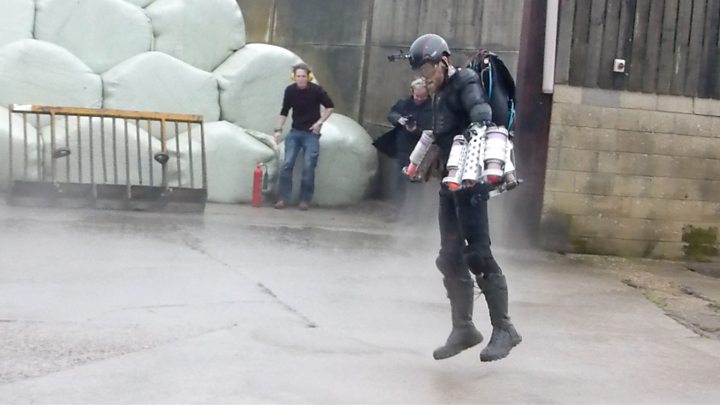
He was inspired by his father, an aeronautical engineer and inventor, who killed himself when Mr Browning was a teenager.
He told the BBC that he always had a passion for making things and loved a challenge.
“I did this entirely for the same reason that you might look at a mountain and decide to climb it – for the journey and the challenge.”
He said he was also fascinated by the idea of human flight.
 Image copyrightRICHARD BROWNING
Image copyrightRICHARD BROWNING“My approach to flight was why not augment the human mind and body, because they are amazing machines, so I just bolted on what was missing – thrust.”
Mr Browning, a Royal Marine Reserve, created his flying machine using six miniature jet engines and a specially designed exoskeleton.
He has a helmet with a sophisticated heads-up display that keeps him informed about fuel use.
The Daedalus suit – named after the father of Icarus by Mr Browning’s eight-year-old son – takes off vertically. Mr Browning uses his arms to control the direction and speed of the flight.
Mr Browning said it is easily capable of flying at 200mph (321km/h) and an altitude of a few thousand feet.
But, for safety reasons, he keeps the altitude and speed low.
He insisted it is “safer than a motorbike”.
 Image copyrightBRET HARTMAN/TED
Image copyrightBRET HARTMAN/TEDThe suit can currently fly uninterrupted for around 10 minutes.
The start-up he founded, Gravity, is working on new technology for the device which Mr Browning said will make the current prototype look “like child’s play”.
Since video of his maiden flight went on YouTube, he has had thousands of views and interest from investors and the UK military.
But he does not think that the system is about to go mainstream anytime soon.
 Image copyrightRICHARD BROWNING
Image copyrightRICHARD BROWNING“I think of it as a bit like a jet ski, a bit of fun or a indulgent toy, but I do have a hunch that stuff will come along to make it more practical.”
It remains a fascinating project for those who see it in action.
“There is something strange in seeing the human form rise up and drift around and that leaves a deep impression on people,” he said.
The Civil Aviation Authority has yet to take any decisions of the level of regulation required for jetpacks.
And in Europe, the European Aviation Safety Agency (EASA), which has responsibility for approving all new aircraft designs, including experimental concepts, has not yet formed an opinion on human propulsion technology.
“Going forward it may be necessary to create a new category of regulation for this technology as it clearly does not fit in neatly with aircraft regulation,” a CAA spokesman told the BBC.
“Ultimately, I think it unlikely that such technology would be completely deregulated.
“This is potentially powered flight after all, unlike activities such as hang-gliding and paragliding which are deregulated. High speed human propulsion could easily conflict with low flying aircraft and so the ‘pilot’ would almost certainly need some kind of training and a licence.”
27/04/2017
MP asks Facebook to tackle ‘fake news’ as election approaches
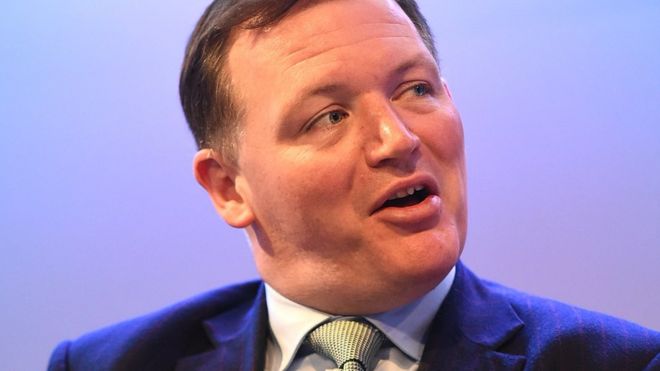
An MP has urged Facebook to tackle fake news in the run-up to the UK’s general election on 8 June.
Conservative MP Damian Collins expressed his concerns to the Guardian newspaper, saying fake news threatened “the integrity of democracy”.
A parliamentary inquiry examining the “growing phenomenon of fake news” was launched by Mr Collins in January.
Dealing with the problem was “a global priority” and an “evolving challenge”, Facebook said.
Mr Collins told the Guardian that the top 20 fake news stories were shared more than the top 20 true news stories during the three months leading up to the US election last year.
“The danger is, if for many people the main source of news is Facebook and if the news they get on Facebook is mostly fake news, they could be voting based on lies,” he said.
He also claimed that Facebook did not respond quickly enough to the phenomenon, despite the fact that the social media site can detect when news stories go viral.
‘Global priority’
Facebook said: “Improving news literacy is a global priority and false news runs counter to our mission to connect people with the stories that they find meaningful.
“We understand that we need to do our part to help people understand how to make decisions about which sources to trust.”
The social network is examining various methods for this – including possibly adding labels to stories that have been reported as false by third parties or Facebook users, which would then warn others before sharing them.
And this month it launched an educational tool designed to help people investigate the veracity of a story shared on Facebook.
On 25 April, Google announced that it was altering the way its search engine works to try to curb the spread of fake news and hate speech.
A recent study by economists at Stanford University suggested that while fake news had been viewed by many adults before the US election, there was little evidence to suggest that such stories had had a decisive impact on voting.
26/04/2017
Thai man kills baby on Facebook Live then takes own life
 Image copyrightREUTERS
Image copyrightREUTERSImage captionThe deaths took place at a deserted hotel in Phuket
A Thai man filmed himself killing his baby daughter on Facebook Live, before taking his own life, Thai police say.
The 21-year-old hanged his daughter, and then himself, at a deserted hotel in Phuket on Monday, reportedly after an argument with his wife.
Facebook sent condolences to the family for the “appalling” incident and said that the content had now been removed.
The company pledged a review of its processes after footage of a US killing stayed online for hours this month.
The footage of the Thai killing had also been available on video sharing website YouTube, but the company took it down after the BBC alerted it to its presence.
Social media anger
Relatives of the Thai man, Wuttisan Wongtalay, saw the distressing footage and alerted the police – but the authorities arrived too late to save him and his daughter.
In a statement, a Facebook spokesperson said: “This is an appalling incident and our hearts go out to the family of the victim. There is absolutely no place for content of this kind on Facebook and it has now been removed.”
Reuters said two videos were posted, at 16:50 (09:50 GMT) and 16:57 on Monday, and were taken down at about 17:00 on Tuesday, roughly 24 hours later. Facebook has yet to confirm the times to the BBC.
Thailand’s ministry of digital economy said it had contacted Facebook on Tuesday afternoon about removing the videos.
Ministry spokesman Somsak Khaosuwan told Reuters: “We will not be able to press charges against Facebook, because Facebook is the service provider and they acted according to their protocol when we sent our request. They co-operated very well.”
YouTube said it had taken down the video within 15 minutes of being told of its presence by the BBC.
Its statement read: “YouTube has clear policies that outline what’s acceptable to post and we quickly remove videos that break our rules when they’re flagged.”
Shortly before the BBC alerted YouTube, the video was showing 2,351 views.

Thai social media users reacted with anger to the footage, while offering condolences to the family of the girl, BBC Thai editor Nopporn Wong-Anan says.
Devastated relatives of the child, including the mother, picked up the body of the girl and her father from hospital on Tuesday.
Following the US killing, Facebook said it was “constantly exploring ways that new technologies can help us make sure Facebook is a safe environment”.
“We prioritise reports with serious safety implications for our community, and are working on making that review process go even faster,” blogged one of its executives last week.
Separately on Tuesday, a court in Sweden jailed three men over the gang-rape of a woman in the city of Uppsala, 80km (50 miles) north of Stockholm, earlier this year and its live-streaming on Facebook.
One man was jailed for two years and four months, and another for one year, both for rape. The third was jailed for six months for posting the rape on Facebook and failing to report it.
Analysis: Leo Kelion, BBC technology desk editor
This latest atrocity comes less than a fortnight after a US man bragged on Facebook Live about his murder of a 74-year-old man in Cleveland, having also posted a video of the killing to the social network.
The platform’s chief, Mark Zuckerberg, subsequently acknowledged he had “a lot of work” to do after it emerged the murder clip had remained online for more than two hours despite Facebook having received complaints in the meantime.

Prior to that, Facebook Live broadcast the death of a Chicago man who was shot in the neck and head last June, and then in July a woman streamed the death of her boyfriend after he was shot by police in Minneapolis.
There have also been reports of sexual assaults, animal abuse and teenage suicide having been shown.
For its part, Facebook is trying to find ways for its review team – which employs thousands of people – to react to such content more quickly.
In addition, the firm has developed software to prevent such footage being reshared in full on its service at a later point.
And it is also exploring the use of artificial intelligence to automatically flag videos and photos that need to be reviewed rather than waiting for other users to report them.
What it hasn’t discussed is the idea of scrapping Facebook Live altogether.
With Twitter and YouTube, among others, offering rival live-streaming products, doing so could put it at a disadvantage.
But as a result, there will inevitably be further outrages and criticism because Facebook Live’s popularity makes it all but impossible for the firm to keep a human eye over each broadcast.
25/04/2017
Driverless cars trial set for UK motorways in 2019
 Image copyrightGETTY IMAGES
Image copyrightGETTY IMAGESA consortium of British companies has unveiled a plan to test driverless cars on UK roads and motorways in 2019.
The Driven group also plans to try out a fleet of autonomous vehicles between London and Oxford.
The cars will communicate with each other about any hazards and should operate with almost full autonomy – but will have a human on board as well.
Previous tests of driverless vehicles in the UK have mainly taken place at slow speeds and not on public roads.
The Driven consortium is led by Oxbotica, which makes software for driverless vehicles.
Founder Prof Paul Newman, of Oxford University, said: “We’re moving from the singleton autonomous vehicle to fleets of autonomous vehicles – and what’s interesting is what data the vehicles share with one another, when, and why.”
The project is backed by an £8.6m government grant and involves an insurance company, which will assess the risks involved at each stage of the journey.
The UK government has committed about £100m in total towards autonomous driving projects and has said it wants Britain to “lead the way in developing” the tech.
But one expert said the country risks falling behind what is being done abroad.
“Britain is trying to keep up, but the big development in the field is going on elsewhere,” said Prof David Bailey from Aston Business School.
“That includes Google in the US, Volvo in China and Daimler in Germany.
“And amounts being committed [by the UK] are relatively small beer.
“The Obama government, for example, proposed spending billions of dollars over 10 years.”
Calum Chace, author of Surviving AI, agreed that the UK appears to have fallen behind.
“I don’t know why we have to wait until 2019,” he said.
“But in a way it doesn’t matter how aggressively the UK pushes this tech. When the US does this large-scale technology we will have to adopt it too.
“It will save so many lives and so much money.”
12/04/2017
Imax reveals European cinema expansion plan
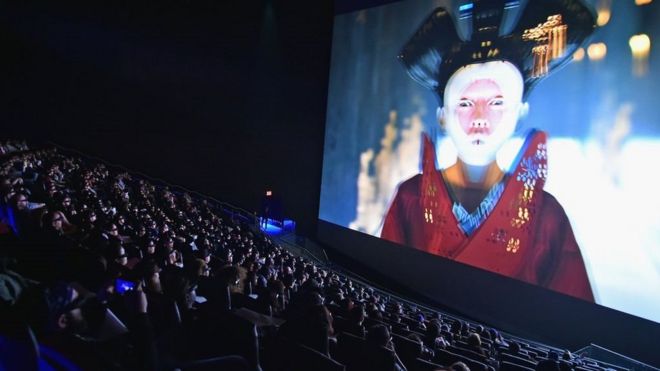 Image copyrightGETTY IMAGES
Image copyrightGETTY IMAGESImage captionImax presents 2D and 3D movies on screens larger than the norm
Imax has struck a deal to more than double the number of its large screens in European cinemas run by the continent’s biggest operator.
AMC – which owns Odeon among other brands – plans to create 25 new Imax theatres over the next three years, about 10 of which will be in the UK.
Some will also be built in Germany, Italy, Spain and Scandinavia.
One expert said Imax had proved popular with those seeking a “premium experience”.
AMC and Imax expect to jointly spend about $25m (£20m) on the expansion plan and will subsequently share the revenues.
“One of the things that has really frustrated me over my 23 years [in charge] has been our inability to properly penetrate Europe,” Imax’s chief executive, Rich Gelfond, told the BBC.
“Europe has been challenging because of its infrastructure – the theatres are smaller, they are dated and don’t really fit the Imax specs, and the build-out [of new cinemas] has been slow.
“So, today is really a historic day for us.”
AMC is making the investment five months after taking over Odeon and a month after its acquisition of Nordic Cinemas. The company is itself controlled by China’s Dalian Wanda Group.
It is now engaged in a wider effort to upgrade its cinemas.
“One of the ways you get people not to watch a movie in their home or on their iPad is you offer them a 60ft [18.3m] screen,” said AMC’s chief executive Adam Aron.
“When consumers have so many choices… one of the smartest things we can do is put in more and more Imax or Imax-like experiences, because that is one of the long-term guarantors that people are going to still go out.”
The initiative will bring the total number of Imax cinemas run by all chains in Europe close to 250.
However, that figure will still lag behind the 800 in existence or in development in China and the 350 in the US.
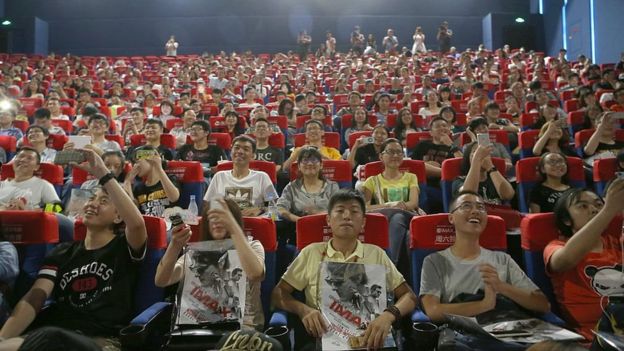 Image copyrightGETTY IMAGES
Image copyrightGETTY IMAGES“Imax has already proven its worth in many countries, and wouldn’t have built the brand it has, unless it had been able to attract the public,” commented Robert Mitchell from the trade magazine Variety.
“The question mark is whether it will succeed in countries like Germany, where cinema attendance has been dropping for the last couple of years and [where] Imax only has a few screens at present, so is less well known.”
Blockbuster films
Imax has developed a projection system that allows images to be shown on screens up to 100ft wide without becoming blurry.
It also offers filmmakers cameras that are able to capture higher resolution footage than normal.
Directors including Christopher Nolan and Michael Bay are fans, but the tech is normally restricted to blockbuster projects because of the additional costs it incurs.
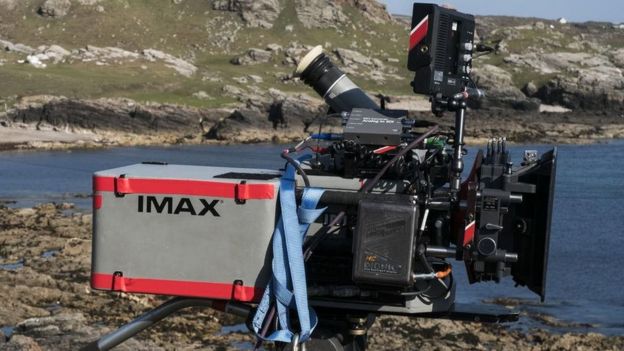 Image copyrightIMAX
Image copyrightIMAXIn addition, Imax offers software to convert footage shot with normal cinema cameras, and has developed a proprietary sound system for its theatres.
It faces competition from other large-screen formats including Dolby Cinema, RealD Luxe and an in-house effort from AMC.
Marvel exclusive
To help distinguish itself, Imax recently announced plans to start screening original content unavailable elsewhere.
 Image copyrightMARVEL
Image copyrightMARVELThe first “exclusive” is a deal to show the first two episodes of a forthcoming Marvel TV show – The Inhumans – in September, several weeks before they come to television.
“Other companies like HBO went from Hollywood-content only to original programming,” Mr Gelfond explained.
“We’re following in those footsteps and thinking: why not bring a great original content experience at a slower time of the year?”
In addition, Imax recently launched a standalone virtual reality centre in Los Angeles and will shortly open different versions of the concept attached to cinemas in New York and London.
Members of the public pay to try out short experiences using StarVR headsets, which offer a wider field-of-view than rival tech.
The firm already offers content linked to the movies John Wick, Star Wars and The Walk, and has struck a deal with Warner Bros to create new experiences based on its DC superhero films.
 Image copyrightIMAX
Image copyrightIMAXMr Gelfond said he hoped that this would attract Millennials – those born after mid-1990 – who had proved harder to attract to cinemas than older age groups.
But he acknowledged that it was early days for the tech.
“We are starting with about five to 10 VR centres that will all be open this year,” he said.
“We’ll look at the results. If they look good we’ll build it out at a much more significant way.
“And if they don’t we’ll have not lost much.”
22/03/2017
eBay launches guaranteed three-day delivery in US
Online retailer eBay has promised to get items to US shoppers in three days or less with a new programme called “Guaranteed Delivery”.
From the summer, the site will guarantee the speedy delivery of 20 million products from certain sellers who currently meet delivery promises.
If items don’t arrive on time, eBay will refund shipping or give shoppers a voucher if delivery was free.
One analyst questioned whether the move would appeal to eBay customers.
“It comes as something of a surprise,” said Bryan Roberts, a retail analyst at TCC Global.
“Quite a lot of what is purchased through eBay is discretionary, it’s not usually urgent health or food products, for example.”
Another new feature will allow buyers to filter products that will arrive even more quickly – within one or two days’ time – when browsing the site.
Trusting the seller
EBay currently relies on millions of sellers – from individuals to larger businesses – to organise deliveries.
“There are so many great sellers on eBay delivering an incredible shipping experience where they deliver in two days, and even next day, so the ability to highlight Guaranteed Delivery will further increase customer confidence and satisfaction,” said Brett Thome, who runs VMInnovations, which sells products via eBay.
The new move depended on sellers being able to stick to the promised delivery times, said Mr Roberts.
“It does involve them putting a bit of faith in their vendors,” he told the BBC, “but it could pay off for eBay and enhance their position.”
The site has experimented with fast delivery promises before, with varying success.
In 2015, it ended a pilot programme in the US called eBay Now that offered one-hour local deliveries in certain cities.
17/03/2017
Russia denies Yahoo hack involvement
 Image copyrightAFP
Image copyrightAFPThe Kremlin has denied allegations by US authorities that the FSB intelligence agency was involved in a huge data breach affecting Yahoo.
Two FSB officers were accused of conspiring with two alleged criminal hackers in a Department of Justice indictment announced on Wednesday.
The charges are believed to be the first that the US has filed against Russian government officials.
Yahoo’s 2014 breach affected 500 million user accounts.
“As we have said repeatedly, there can be absolutely no question of any official involvement by any Russian agency, including the FSB [intelligence agency], in any illegal actions in cyberspace,” said spokesman Dmitry Peskov.
US officials have alleged that two FSB officers, Dmitry Dokuchaev and Igor Sushchin, colluded with Karim Baratov and Alexsey Belan, who has been on the FBI’s most wanted list for more than three years.
Besides orchestrating the breach, the indictment alleged that Yahoo accounts accessed without authorisation were used to launch a spam campaign.
15/03/2017
Facebook, Twitter and Google grilled by MPs over hate speech
Social media giants should “do a better job” to protect users from online hate speech, MPs have said.
Executives from Facebook, Twitter and Google were asked by the Home Affairs select committee why they did not police their content more effectively, given the billions they made.
They were told they had a “terrible reputation” for dealing with problems.
The firms said they worked hard to make sure freedom of expression was protected within the law.
‘Money out of hate’
Labour MP Chuka Umunna focused his questioning on Google-owned YouTube, which he accused of making money from “videos peddling hate” on its platform.
A recent investigation by the Times found adverts were appearing alongside content from supporters of extremist groups, making them around £6 per 1,000 viewers, as well as making money for the company.
Mr Umunna said: “Your operating profit in 2016 was $30.4bn.
“Now, there are not many business activities that somebody openly would have to come and admit… that they are making money and people who use their platform are making money out of hate.
“You, as an outfit, are not working nearly hard enough to deal with this.”
Peter Barron, vice president of communications and public affairs at Google Europe, told the committee the cash made from the videos in question was “very small amounts”, but added that the firm was “working very hard in this area” to stop it happening again.
Fellow committee member David Winnick said, when he heard Mr Barron’s answer, “the thought that came into my mind was the thought of commercial prostitution that you are engaged in,” adding: “I think that is a good and apt description.”
Yvette Cooper, who is chairwoman of the committee, turned her attention to Twitter.
 Image copyrightREUTERS
Image copyrightREUTERSImage captionYvette Cooper read out abusive tweets from a user’s account to the committee.Ms Cooper said she had personally reported a user who had tweeted a “series of racist, vile and violent attacks” against political figures such as German Chancellor Angela Merkel and London Mayor Sadiq Khan, but the user had not been removed.
Nick Pickles, head of public policy and government for Twitter in the UK, said the company acknowledged it was “not doing a good enough job” at responding to reports from users.
“We don’t communicate with the users enough when they report something, we don’t keep people updated enough and we don’t communicate back enough when we do take action,” he said.
“I am sorry to hear those reports had not been looked at. We would have expected them to have been looked at certainly by the end of today, particularly for violent threats.”
When the BBC checked the account after the committee session, it had been suspended.
BBC investigation
Ms Cooper said she found none of the responses from the executives to her questions “particularly convincing”.
She added: “We understand the challenges that you face and technology changes very fast, but you all have millions of users in the United Kingdom and you make billions of pounds from these users, [yet] you all have a terrible reputation among users for dealing swiftly with content even against your own community standards.
“Surely when you manage to have such a good reputation with advertisers for targeting content and for doing all kinds of sophisticated things with your platforms, you should be able to do a better job in order to be able to keep your users safe online and deal with this type of hate speech.”
Facebook’s Simon Milner admitted that a BBC investigation last week into pictures of children on the platform showed that the company’s system “was not working” – but said it had now been fixed.
BBC News had reported 100 posts featuring sexualised images and comments about children, but 82 were deemed not to “breach community standards”.
When journalists went back to Facebook with the images that had not been taken down, the company reported them to the police and cancelled an interview, saying in a statement: “It is against the law for anyone to distribute images of child exploitation.”
Mr Milner said the report had exposed a flaw in its content moderation process.
But he said the content flagged up had since been addressed, reviewed and taken off Facebook.
14/03/2017
California mulls driver-free car tests
The California Department of Motor Vehicles is considering new regulations to allow driverless cars without back-up drivers to be tested on its roads.
Currently 27 manufacturers have a permit to test autonomous vehicles in California.
However there must always be a human being in the car.
Google’s driverless car company Waymo said that in 2016 it drove 636,000 miles in the state and required 124 human interventions.
This was down from 341 in 424,000 miles in 2015.
The new proposals include a framework for how the testing would work and also what would be required by manufacturers to make the vehicles available outside the tests.
“These rules expand our existing autonomous vehicle testing programme to include testing vehicles where no driver is present,” said Jean Shiomoto, director of the California Department of Motor Vehicles.
“This is the next step in eventually allowing driverless autonomous vehicles on California roadways.”
The department is now inviting written feedback until 24 April.
13/03/2017
Google develops invisible web security Captcha form
Website security checks that challenge people to prove they are human are likely to “disappear” in favour of a new system developed by Google.
Captcha checks typically ask people to complete a puzzle that a computer would struggle to complete correctly.
They are designed to stop automated bots accessing and using websites.
Google’s new system tracks how a person interacts with a website to prove they are real, so the puzzles are no longer necessary for most people.
Captcha checks are often deployed by concert ticket websites to stop people setting up automated bots to buy all the best tickets. They also appear when somebody is trying to log in to a website with the wrong password, to spot automated attempts.
 Image copyrightGOOGLE
Image copyrightGOOGLEImage captionTraditional Captcha checks ask people to read wobbly textThe puzzles present challenges that people find simple but computers can find more difficult, such as:
- identifying photographs of dogs in a gallery of animal pictures
- typing numbers from a photograph of a road sign into a box
- listening to somebody reading out numbers over music and typing the numbers into a box
The puzzles also benefit companies such as Google by helping train artificial intelligence algorithms. For example, if Google’s AI can not recognise a house number in a photograph taken by a Streetview car, it may add the photo to its Captcha system to get human input.
However, genuine users can find the interruption by puzzles a nuisance.
Google’s reCaptcha system has already simplified the process by asking users to tick a check box on the website they are using. The box monitors how each person has interacted with it, to separate natural human clicks from bots.
For example, an automated script might take just a second to fill in a form on a website, and may not move the mouse at all during the process.
Google’s latest development removes the check box as well, and instead analyses how people have interacted with other elements on a website such as the “submit form” button.
However, in some cases “suspicious” activity will still trigger a puzzle.
10/03/2017
Wikileaks is offering tech firms CIA files first
Technology firms will get “exclusive access” to details of the CIA’s cyber-warfare programme, Wikileaks has said.
The anti-secrecy website has published thousands of the US spy agency’s secret documents, including what it says are the CIA’s hacking tools.
Founder Julian Assange said that, after some thought, he had decided to give the tech community further leaks first.
“Once the material is effectively disarmed, we will publish additional details,” Mr Assange said.
US federal agencies have launched a criminal investigation into the release of the documents.
In response to the revelations, CIA spokeswoman Heather Fritz Horniak told the BBC: “As we’ve said previously, Julian Assange is not exactly a bastion of truth and integrity.
“Despite the efforts of Assange and his ilk, CIA continues to aggressively collect foreign intelligence overseas to protect America from terrorists, hostile nation states and other adversaries.”
Microsoft told the BBC: “We’ve seen Julian Assange’s statement and have not yet been contacted.
“Our preferred method for anyone with knowledge of security issues, including the CIA or Wikileaks, is to submit details to us at secure@microsoft.com so we can review information and take any necessary steps to protect customers.”
 Image copyrightGETTY IMAGES
Image copyrightGETTY IMAGESIn the first tranche of leaks, Wikileaks alleged that the CIA had developed what Mr Assange called “a giant arsenal” of malware to attack “all the systems that average people use”.
Tech firms, including Google and Apple, have said that they are developing counter-measures to combat any malware that the CIA may have developed.
Mr Assange said that his organisation had “a lot more information on the cyber-weapons programme”.
He added that while Wikileaks maintained a neutral position on most of its leaks, in this case it did take a strong stance.
“We want to secure communications technology because, without it, journalists aren’t able to hold the state to account,” he said.
Mr Assange also claimed that the intelligence service had known for weeks that Wikileaks had access to the material and done nothing about it.
He also spoke more about the Umbrage programme, revealed in the first leaked documents.
He said that a whole section of the CIA is working on Umbrage, a system that attempts to trick people into thinking that they had been hacked by other groups or countries by collecting malware from other nation states, such as Russia.
“The technology is designed to be unaccountable,” he said.
He claimed that an anti-virus expert, who was not named, had come forward to say that he believed sophisticated malware that he had previously attributed to Iran, Russia and China, now looked like something that the CIA had developed.
“The type of attack system corresponds to a description we published of that attack system unless of course China has already got hold of these parts of the CIA arsenal and is using it to pretend to be the CIA,” said Mr Assange.
He said that the intelligence agency could potentially be causing the tech industry “billions of dollars of damage”.
09/03/2017
Apple, Samsung and Microsoft react to Wikileaks’ CIA dump
Several of the tech firms whose products have been allegedly compromised by the CIA have given their first reactions to the claims.
Wikileaks published thousands of documents said to detail the US spy agency’s hacking tools on Tuesday.
They included allegations the CIA had developed ways to listen in on smartphone and smart TV microphones.
Apple’s statement was the most detailed, saying it had already addressed some of the vulnerabilities.
“The technology built into today’s iPhone represents the best data security available to consumers, and we’re constantly working to keep it that way,” it said.
“Our products and software are designed to quickly get security updates into the hands of our customers, with nearly 80% of users running the latest version of our operating system.
“While our initial analysis indicates that many of the issues leaked today were already patched in the latest iOS, we will continue work to rapidly address any identified vulnerabilities.
“We always urge customers to download the latest iOS to make sure they have the most recent security update.”
 Image copyrightSAMSUNG
Image copyrightSAMSUNGImage captionThe CIA is alleged to have found a way to record conversations near to Samsung smart TVsSamsung – whose F8000 series of televisions was reportedly compromised via a USB connection-based hack co-developed with the UK’s MI5 agency – was briefer.
“Protecting consumers’ privacy and the security of our devices is a top priority at Samsung,” it said.
“We are aware of the report in question and are urgently looking into the matter.”
The leaks also claimed that the CIA had created malware to target PCs running Microsoft’s Windows operating system.
“We are aware of the report and are looking into it,” a spokesman from Microsoft said.
The documents said that the CIA had also created “attack and control systems” that could hijack computers powered by Linux-based software.
“Linux is a very widely used operating system, with a huge installed base all around the world, so it is not surprising that state agencies from many countries would target Linux along with the many closed source platforms that they have sought to compromise,” Nicko van Someren, chief technology officer at The Linux Foundation told the BBC.
“[But] rapid release cycles enable the open source community to fix vulnerabilities and release those fixes to users faster.”
Google declined to comment about allegations that the CIA was able to “penetrate, infest and control” Android phones due to its discovery and acquisition of “zero day” bugs – previously unknown flaws in the operating system’s code.
The World Wide Web Foundation – which campaigns for internet privacy – said the US government needed to issue a detailed response.
“Governments should be safeguarding the digital privacy and security of their citizens, but these alleged actions by the CIA do just the opposite,” said the organisation’s policy director Craig Fagan.
“Weaponising everyday products such as TVs and smartphones – and failing to disclose vulnerabilities to manufacturers – is dangerous and short-sighted.
“If these new assertions prove true, we call on the Trump administration and other governments to stamp out such practices.”
‘Incredibly damaging’
The CIA has not confirmed whether the documents – said to date between 2013 to 2016 – are real.
But one of its former chiefs was concerned by their publication.
“If what I have read is true, then this seems to be an incredibly damaging leak in terms of the tactics, techniques, procedures and tools that were used by the Central Intelligence Agency to conduct legitimate foreign intelligence,” ex-CIA director Michael Hayden told the BBC.
“In other words, it’s made my country and my country’s friends less safe.”
But one expert said the fact that the CIA had targeted such a wide range of technology was no surprise.
“The story here isn’t that the CIA hacks people. Of course they do; taxpayers would be right to be annoyed if that weren’t the case,” blogged Nicholas Weaver, a security researcher at the International Computer Science Institute in Berkeley.
“The CIA’s job, after all, is [to] collect intelligence, and while its primary purview is human intelligence, hacking systems interacts synergistically with that collection.
“The actual headline here is that someone apparently managed to compromise a Top Secret CIA development environment, exfiltrate a whole host of material, and is now releasing it to the world… now the world wants to know who, and how, and why.”
Embarrassment factor – Analysis by BBC’s security correspondent Gordon Corera
These latest leaks – which appear to give details of highly sensitive technical methods – will be a huge problem for the CIA.
There is the embarrassment factor – that an agency whose job is to steal other people’s secrets has not been able to keep its own.
Then there will be the fear of a loss of intelligence coverage against targets who may change their behaviour because they now know what the spies can do.
And then there will be the questions over whether the CIA’s technical capabilities were too expansive and too secret.
Because many of the initial documents point to capabilities targeting consumer devices, the hardest questions may revolve around what is known as the “equities” problem.
This is when you find a vulnerability in a piece of technology and have to balance the benefit to the public of telling the manufacturer so they can close it and improve everyone’s security with the benefit to the spy agency of leaving it in place so it can be exploited to collect intelligence.
The National Security Agency faced questions about whether it had this balance right when many of its secrets were revealed by Edward Snowden, and now it may be the CIA’s turn.
03/03/2017
Can technology solve Chicago’s gun crime problem?
Chicago has one of the highest murder rates in the US, with 51 homicides in January alone.
And President Donald Trump has threatened to “send in the Feds” if the “totally out of control” city cannot halt the “carnage”.
But, now, Chicago has spent $1m (£800,000) on ShotSpotter, installing hundreds of sensors in high-crime areas across two of its districts.
And whenever a gun is fired, police officers are immediately given the exact location via a smartphone app.
 Image copyrightSHOTSPOTTER
Image copyrightSHOTSPOTTERImage captionThe police are sent real-time information about the exact location of gunfireNearly 100 US cities are now using ShotSpotter – but, despite its success, some remain unconvinced.
Dover, the second largest city in Delaware, for example, has said the $195,000 annual cost could be better spent elsewhere.
Quincy in Washington and Charlotte in North Carolina have also decided the technology is not for them.
Serious criminals
But ShotSpotter chief executive Ralph Clark said some of the cities that have signed up have seen a 35% year-on-year drop in gunfire.
“We are seeing thousands of incidents,” he told the BBC.
“These are not homicides or woundings, but they are still serious crimes.
“These gunshots are not coming from thousands of people messing about, we are finding that it is from a few serious criminals – the authorised shooters in gangs who are using it to intimidate people, protect their turf.”
“The biggest lever in reducing gun violence is to de-normalise it, and people are now seeing the police respond to these incidents, and they can see that the police are serving and protecting their communities.”
 Image copyrightTHINKSTOCK
Image copyrightTHINKSTOCKHeat list
Three years ago, Chicago made a $2m investment in a predictive policing algorithm, which calculated potential victims of gun crime based on two variables, including how many times they had been arrested with others who later became gun crime victims.
Developed by the Illinois Institute of Technology, the system generates a heat list of people most likely to kill or be killed.
But according to a recent report from non-profit organisation The Rand Corporation, the investment has had little effect and simply means those on the watch list are more likely to be arrested.
The Chicago Police Department countered that the report did not represent the prediction model as it currently worked and denied the system was deficient.
Threat level
Fresno Police Department, in California, recently tested software known as Beware – which sifts through address-specific public data and individuals’ public postings to Facebook, Instagram and Twitter – to alert first responders on the way to a 911 emergency call.
 Image copyrightTHINKSTOCK
Image copyrightTHINKSTOCKThe platform, built by security company Intrado, colour codes people’s threat level as green, yellow or red.
But one member of the city council told the Washington Post that his threat level was yellow, due to a previous occupant of his address.
“Even though it’s not me that’s the yellow guy, your officers are going to treat whoever comes out of that house in his boxer shorts as the yellow guy,” he said.
The software proved too controversial, and in April the council decided not to renew its contract.
Wicked problems
Rob Kitchin, an expert on smart cities from Maynooth University, Ireland, said: “There is this idea that technology can solve the problems of a city.
“People are treating cities as if there are technical systems, and you can pull a data lever and it will steer a city.
“But cities are much more complex – full of politics, culture, community, and wicked problems.
“Cities have to look at the problem and decide what solution is best.
“If it is technology, then great, but it could be economic investment or a change in social policy.”
24/02/2017
Google’s self-driving firm sues Uber
Uber is being sued for stealing trade secrets and technology from Google.
Waymo, set up by Google owner Alphabet, is taking legal action against Otto, Uber’s self-driving vehicle unit that it bought last year for $700m.
The lawsuit argues that former Waymo manager Anthony Levandowski took information when he left to co-found a venture that became Otto.
Uber said it took the allegations seriously and would review the matter carefully.
The lawsuit alleges that Mr Levandowski “downloading 14,000 highly confidential and proprietary design files” during his time as a Google employee.
“We believe these actions were part of a concerted plan to steal Waymo’s trade secrets and intellectual property,” Waymo said.
Alphabet created Waymo earlier this year as a way of bringing self-driving technology – which Google has been working on for years – to market.
 Image copyrightWAYMO
Image copyrightWAYMOIn a blog post detailing the action, Waymo said it was a difficult move to bring the legal action.
“Our parent company Alphabet has long worked with Uber in many areas, and we didn’t make this decision lightly,” the blog said.
“However, given the overwhelming facts that our technology has been stolen, we have no choice but to defend our investment and development of this unique technology.”
LiDAR row
The technology in question is LiDAR, a laser-based radar system that helps the self-driving cars “see” what is around them.
In court documents filed on Thursday, Waymo alleges one of its employees was recently copied in to an email intended for Otto’s staff. Attached to the email were said to be machine drawings of Otto’s LiDAR circuit board.
“Its design bore a striking resemblance to Waymo’s unique LiDAR design,” Waymo said.
“We found that six weeks before his resignation this former employee, Anthony Levandowski, downloaded over 14,000 highly confidential and proprietary design files for Waymo’s various hardware systems, including designs of Waymo’s LiDAR and circuit board.
“To gain access to Waymo’s design server, Mr Levandowski searched for and installed specialised software onto his company-issued laptop. Once inside, he downloaded 9.7 GB of Waymo’s highly confidential files and trade secrets, including blueprints, design files and testing documentation.
“Then he connected an external drive to the laptop. Mr Levandowski then wiped and reformatted the laptop in an attempt to erase forensic fingerprints.”
23/02/2017
Tomorrow’s cities – nightmare vision of the future?
The connected city never sleeps. The thousands of sensors embedded in roads, sewers, water pipes, streetlights are busy collecting information day and night. Perhaps even your bin, which might also be tweeting.
Sensor provider Enevo offers internet connection for bins in cities in Finland, the Netherlands, UK, Belgium, Canada and the US, and runs a Twitter feed – Trashcan Life.
The tweets aren’t exactly sparkling wit, including insights such as:
- “I am 26% full”
- “My current internal temperature is 24C”
- “I expect to be full on Wednesday”
It is part of a push to make bin collection smarter, cheaper and less frequent and may ultimately mean an end to the early wake-up call of the bins being emptied.
 Image copyrightTHINKSTOCK
Image copyrightTHINKSTOCKImage captionWe may not be cyborgs yet, but many of us are already plugged into the network via wearablesIf our cities are getting increasingly plugged into the network, then so are we.
Wearables that measure all kinds of things from body temperature, hydration levels, heart-rate and sleep patterns are commonplace.
And the data we collect can reveal interesting insights about how our lives, day and night, impacts our health.
Fitness band provider Jawbone compared the sleep data of one million users around the US and found that city residents tended to get far less than those in rural or suburban areas.
It also found that people living in the Brooklyn area of New York went to bed the latest while those in Maiu, Hawaii, had the earliest bedtime.
 Image copyrightTHINKSTOCK
Image copyrightTHINKSTOCK”Our sleep cycles adapt to the pace and lifestyle of the world we live in and the world by which we are surrounded – which can be much more hectic, fast-paced and full of nightlife entertainment in major cities,” the report said.
Meanwhile, a recent study from Microsoft mined data from 75 million keystrokes and clicks on Bing from more than 30,000 individuals wearing a fitness device.

The research found that those who were busiest during the day, based on their Microsoft calendars and search activity, slept worse at night and those who slept less than six hours for two consecutive nights were sluggish for the next six days.
The trend towards both cities and citizens being plugged into the network has only one logical conclusion, says Prof Andrew Hudson-Smith, from University College London’s Centre for Advanced Spatial Analysis.
“Bees exist on Earth to pollinate flowers, and maybe humans are here to build the machines,” he says.
“Urban robots are just starting to appear, and in 200 years time, machines may run the urban form.
“The city will be one big joined-up urban machine, and humans’ role on Earth will be done.”
 Image copyrightTHINKSTOCK
Image copyrightTHINKSTOCKIf that thought doesn’t keep you awake at night, then a more mundane problem just might.
Cities never really get dark any more and that is becoming a serious issue, particularly for those who want to spend time looking at the night sky.
In September, the city authorities in Reykjavik, Iceland, ordered all street lights to be turned off in multiple sections of the city to facilitate better views of the northern lights.
Other cities are making the move to smart LED lights in an attempt to control the brightness of streetlights.
As well as offering significant savings because they last longer (up to 20 years) and emit far less energy, such lights can also be plugged into the network, meaning cities can decide when they want to throw out light and when they want to dim it.
Street lighting is estimated to account for 40% of a city’s electricity bill, and cities that have made the move report huge savings – Detroit says it has shaved $2.5m (£2m) off of its annual bill.
In Glasgow, the council has taken the idea one step further – fitting smart street lights with noise sensors and connecting them to CCTV cameras so that, if noise goes above a certain level, an alert is sent to its operations centre for evaluation in case it is caused by anti-social or criminal behaviour.
The council told the BBC that it does not yet have any significant data on how the lights are performing.
It is just one illustration of how connected cities can veer from their original purpose into entirely new territories, which may not always be ones their inhabitants will feel entirely comfortable about.
Technology may help impose some order and efficiency on the urban landscape, but many who live there will hope cities long continue to be fast-paced and hectic. It is why many of us love them.
 Image copyrightTHINKSTOCK
Image copyrightTHINKSTOCKSmart city case study: Barcelona
Barcelona has an impressive 500km (311-mile) fibre-optic network, which acts as a backbone for a host of connected services as well as providing citizens with city-wide wi-fi.
The city’s lighting works hard:
- 1,100 lamp-posts have been converted to LED, offering cost savings of 30%
- Sensors in the lights can determine when people are passing beneath and light up or dim according to footfall
- They form part of the wi-fi network
- They are equipped with air-quality sensors
There are 19,500 smart meters in targeted areas of the city, which monitor and optimise energy consumption.
Smart bins monitor waste levels and optimise collection routes.
In transport, Barcelona has plenty of electric cars and bike-sharing schemes, while digital bus-stops don’t just give waiting passengers updates on when buses will arrive but also provide charging stations, free wi-fi and information about the best apps to download to learn more about the city.
Drivers can take advantage of an app – ApparkB – that can identify empty parking spaces and allow users to pay for the spot online.
Even the irrigation systems in Barcelona’s parks are hooked into the network.
Sensors monitor rain and humidity, allowing park workers to decide how much water is needed in each area, which has led to a 25% cut in the city’s water bill.
Barcelona has made its city operating system – Sentilo – which controls all the sensors open-source and available to other cities.
Through the system, data is also shared with citizens.
22/07/2017
Iran bans private drones from skies over Tehran amid security fears
Iran has banned privately-owned drones from flying over Tehran after at least two devices were shot at in recent weeks over security fears.
Licences will now only be granted to “relevant bodies and not individuals”, military officials said.
The unmanned aerial devices have caused several security scares after approaching sensitive areas.
Drones have become increasingly popular in Tehran, but have angered locals who believe they infringe their privacy.
“These quadcopters are equipped with cameras and can fly over sensitive sites, film them and be exploited by the enemy,” said deputy commander of the Islamic Revolution Guards Corps (IRGC), Ali Reza Rabi’i.
“As flying objects, especially those of heli-shots [drones equipped with cameras]… they can pose a threat,” the commander said, according to the Tasnim news agency.
In December, a drone was shot down after it entered a no-fly zone near the offices of the country’s top officials, including Supreme Leader Ayatollah Ali Khamenei.
The drone, reported to have been owned by state television, was said to have been filming for a documentary.
Another incident last month saw the Khatam al-Anbia air defence system fire anti-aircraft guns at an unidentified drone over the centre of Tehran, but it failed to destroy the device.
Officials said on Monday that permits must now be obtained for all drones, but they will not be issued to individuals.
21/02/2017
Former US law chief leads Uber probe
On Sunday we learned that Uber was going to conduct an investigation into claims of serious sexual harassment, following a scathing blog post from a former employee.
On Monday Uber boss Travis Kalanick sent an email to his employees with more information about the probe – and further plans the company has to address the issue.
“It’s been a tough 24 hours,” he began, adding that he company was “hurting”.
The investigation will be lead by former US attorney general Eric Holder, who served under President Obama between 2009 and 2015, and Tammy Albarran – both partners at law firm Covington and Burling.
Arianna Huffington, best known for being the founder of the Huffington Post, will also help conduct the review. Ms Huffington has been on Uber’s board since April last year. Also conducting the review will be Uber’s new head of human resources, Liane Hornsey, and Angela Padilla, Uber’s associate general counsel.
Diversity figures
After coming into widespread criticism for never having published statistics on diversity at the company, Mr Kalanick said he would deliver figures in the “coming months”. He said that of the employees working as engineers, product managers or data scientists, 15.1% are women – a number which he said hadn’t changed significantly in the past year.
“As points of reference,” he wrote, “Facebook is at 17%, Google at 18% and Twitter at 10%.”
Until now, Uber had been standing firm on not publishing its diversity figures. Most major technology companies make public their EEO-1 – a government filing that breaks down employees by race, religion, gender and other factors.
Uber has not specified if it will publish its entire EEO-1, or just post select figures from the company.
In her blog post, Susan Fowler cited anecdotal figures of women leaving Uber in droves.
Speaking specifically about the site reliability engineering team, which she worked on for a year, she said that by the time she left, “out of over 150 engineers in the SRE teams, only 3% were women”. She now works at San Francisco-based payment firm Stripe.
Uber said it would be holding an “all hands” meeting on Tuesday to tell its
17/02/2017
Google hails net balloon ‘breakthrough’
Researchers at Google say they are “years closer” to rolling out a network of huge balloons to provide connectivity to rural areas.
The Project Loon team, part of the company’s X research lab, said it was now able to use machine learning to predict weather systems.
It means the firm has far greater control over where its balloons go, making it possible to focus on a specific region, rather than circumnavigating the globe.
Clustering a small number of balloons greatly reduces the cost of the idea, Google’s “captain of moonshots”, Astro Teller, told reporters.
“We can now run an experiment and try to give service in a particular place in the world with ten, twenty or thirty balloons,” he said, rather than the hundreds needed previously.
“Real users” will be able to use the system in the “coming months”, he added – but he did not specify where the initial roll out would take place.
Rural ambition
Google’s aim is to provide connectivity to the around four billion people in the world who do not have access to the internet, particularly those in difficult-to-reach rural areas.
Rather than undertake huge construction projects to replicate connectivity networks in the developed world, the firm has instead experimented with beaming down connectivity from a network of huge, tennis-court sized balloons.
The balloons float in the stratosphere around 11 miles high. By raising or lowering altitude, the balloons can be caught in different weather streams, changing direction.
By using machine-learning algorithms, Google thinks it has cracked a way to predict weather with enough accuracy to make it possible to hover balloons over a relatively small area for a long period of time.
Last last year the firm was able to keep a cluster of balloons over Peru for three months.
Spin off
Over the past year Google has come under increasing pressure from its shareholders to rein in the costs of its more outlandish ideas.
Last month, the firm has spun off its self-driving project into a new company – Waymo – and has stepped up attempts to commercialise the technology amid criticism it was taking too long to make money from its work.
Mr Teller said Project Loon was one of the more “mature” moonshot ideas at the company, but while it was entering into contracts with telecoms firms, Google was in “no rush” to make Project Loon a stand-alone business.
“The service has a much better chance of being profitable which is obviously exciting for us,” he said.
“Things have gone much better than we anticipated they could go. That has made the prospects of Loon even better than we had anticipated.”
Falling out of the sky
One key hurdle for the company to overcome is the reliability of its balloons. To date, the record for continuous balloon flight has been 190 days.
At a research lab within Google’s campus in Mountain View, California, development teams painstakingly analyse each failed balloons on a huge scanner nicknamed “Billie Jean” owning to light panels reminiscent of the illuminating pavement in Michael Jackson’s iconic music video.
Other technologies trying to achieve similar goals have been tested by Google and others. The company recently shut down Project Titan, an effort to use solar-powered drones to deliver connectivity to a wide area. The programme was cancelled owing to economic and technology difficulties, the company said.
Facebook has attempted to work with similar technology. It’s Project Aquila drone, which is being developed in the UK, suffered a major setback when one of its craft crashed last June.
On the challenge facing Project Loon, Mr Teller admitted that many at the company did not think it would ever actually work.
“If we’d known how hard it was going to be, we probably never would have tried,” he wrote in a blog post published on Thursday.
15/02/2017
Dubai announces passenger drone plans
 A drone that can carry people will begin “regular operations” in Dubai from July, the head of the city’s Roads and Transportation Agency has announced at the World Government Summit.
A drone that can carry people will begin “regular operations” in Dubai from July, the head of the city’s Roads and Transportation Agency has announced at the World Government Summit.
The Chinese model eHang 184 has already had test flights, said Matt al-Tayer.
The drone can carry one passenger weighing up to 100 kg (220 pounds) and has a 30 minute flight time.
The passenger uses a touch screen to select a destination. There are no other controls inside the craft.
It is “auto-piloted” by a command centre, according to a video released by the government agency.
It has reported speeds of up to 100 miles per hour (160 kilometres per hour) and can fly 31 miles (50km) on a single battery charge.
“This is not only a model,” Mr al-Tayer, according to a report by the Associated Press.
“We have actually experimented with this vehicle flying in Dubai’s skies.”
The device was also approved for testing in Nevada in June 2016.
‘Resilient to failure’
Dr Steve Wright, senior lecturer in avionics and aircraft systems at the University of the West of England, told the BBC that safety would have to be paramount.
“The way these systems work, making them work normally is easy. The tricky bit is making systems that are resilient to failure,” he said.
“I would like to see the drone flying for at least 1000 hours before I saw a human in it.”
Dr Wright added that he would not be volunteering for an early flight.
“I’d have to be taken on board kicking and screaming.”
Last month Israeli firm Urban Aeronautics announced that its Cormorant passenger drone – designed for military use – could be in use by 2020.
The $14m (£11m) drone can carry 500kg (1,100lb) at 185km/h (115mph).
14/02/2017
UN expert calls on Cameroon to restore net services
A UN expert has called on Cameroon to restore net access to English-speaking parts of the country.
Net services in the south-west and north-west regions of the nation were cut on 17 January.
Cutting net services was an “appalling violation” of the right to freedom of expression, said UN special rapporteur David Kaye.
He said the widespread net shutdown also broke international law and he called for links to be restored.
Stifled protest
“I am particularly concerned at the tightening of the space for free speech at a time when its promotion and protection should be of the utmost importance,” said Mr Kaye, an independent expert who advises the UN about attacks on free speech.
“A network shutdown of this scale violates international law – it not only suppresses public debate, but also deprives Cameroonians of access to essential services and basic resources,” he said.
In 2015, the UN issued a joint declaration which stated that net shutdowns were never justified under human rights law.
Mr Kaye said he and the UN were closely monitoring the situation in Cameroon.
The Cameroon government has not explained why the two regions have been cut off. However, many believe officials took the step to tackle anti-government sentiment there.
Protests have been staged by people living in the English-speaking regions who claim they are being marginalised by recent government policies. Cameroon has two official languages – French and English – but most government and court proceedings are conducted in French.
The shutdown has also hit Cameroon’s digital industries, many of which are based around “silicon mountain” near Buea – the south-west’s regional capital.
And it has forced 17 year-old coding champion Nji Collins Gbah to move to the capital Yaounde from his home in the north-west town of Bamenda. Net access in Yaounde has not been cut off.
Mr Gbah is the first African winner of Google’s annual coding competition that is open to pre-university students worldwide between the ages of 13 and 17. More than 1,300 young people from 62 countries took part in the latest competition.
09/02/2017
Why has Cameroon blocked the internet?
Three weeks after reports that Cameroon had blocked the internet in English-speaking parts of the country, residents say services have yet to be restored. So what is going on?
Cameroonians have little doubt that pulling the plug on internet services for about 20% of the population is an intentional act by the government.
The two regions affected, South-West and North-West, have seen anti-government protests in recent months.
Just a day before services disappeared, the Ministry of Posts and Telecommunications issued a statement in which it warned social media users of criminal penalties if they were to “issue or spread information, including by way of electronic communications or information technology systems, without any evidence”.
The statement also confirmed that the authorities had sent text messages direct to mobile phone subscribers, notifying them of penalties, including long jail terms, for “spreading false news” via social media.
A number of Cameroonians have posted screenshots on Twitter showing the various warnings they were sent.
 Image copyrightTWITTER
Image copyrightTWITTERThere has been no official comment about the internet since then (or any credible reports of technical faults) leading many Cameroonians to conclude that the severing of services is part of government attempts to stifle dissent.
What do the mobile phone companies say?
In criticising their government, some Cameroonians have also taken aim at the mobile phone companies who provide the services through which many access the internet.
These firms may not have been able to prevent the outage, since they all rely on fibre-optic infrastructure provided by a state-owned company, but nor have they been objecting publicly about the interruption to their services.
 Image copyrightTWITTER
Image copyrightTWITTERThe biggest provider, MTN Cameroon, denied it had violated customer privacy by forwarding the ministry’s warning texts and added that all its services remained accessible. That was on 15 January and since then it has not commented.
Some subscribers say they have since received messages referring to “circumstances beyond our control”.
There has been no comment by Orange Cameroun, Nexttel or Vodafone Cameroon.
What has been the effect of cutting internet services?
Much of Cameroon’s digital economy is located around the South-West capital, Buea – an area known as Silicon Mountain.
Some entrepreneurs and their workforces are reported to have relocated temporarily to Douala or Yaounde where the internet is available.
Less mobile, digital-dependent businesses will be suffering.
 Image copyrightTWITTER
Image copyrightTWITTERThe outage is also reported to have hit the banking system, causing cashflow problems for businesses and individuals.
A week ago campaign group Internet Sans Frontieres estimated that blocking access to the internet over the previous two weeks had cost businesses up to $723,000 (£570,000).
That may not sound very much now, but the long-term cost of damaging the area’s digital ecosystem could be very much higher.
And then there are the unquantifiable social costs entailed in cutting channels of communication and entertainment.
The United Nations has said internet access is now a basic human right. Cameroonians with access to Twitter have been tweeting their opposition to the outage using the hashtag #BringBackOurInternet.
Why is this an issue only in English-speaking areas?
It follows a period of rising tensions in which long-held grievances of English speakers against the government have erupted into protests and strikes.
The protesters say that Anglophones are discriminated against by Cameroon’s French-speaking majority.
Last November, more than 100 people were arrested and at least one person was shot dead in demonstrations over the use of French in courts and schools.
In January, lawyers and teachers in Bamenda went on strike over the issue, turning the main city in Cameroon’s North-West region into a ghost town.

Image captionNorth-West and South-West are Cameroon’s two English-speaking regionsThe government responded by arresting activists and warning against protests and “malicious use of social media”.
English speakers in Cameroon say they are often excluded from top civil service jobs and that many government documents are published only in French, even though English is an official language.
English-speaking lawyers object to the employment of French-trained court workers who do not understand the English common law system.
Residents also object to the posting of teachers who do not speak good English to the region’s schools.
Why is the country divided along language lines?
The official language or languages of African nations are usually a legacy of their colonial past.
Cameroon was colonised by Germany in the 19th Century and then split into British and French areas after World War One.
Later, areas controlled by Britain and France joined to form Cameroon after the colonial powers withdrew in the 1960s.
In 1961, a referendum was held in the previously British areas – Southern Cameroons voted in favour of joining a unitary Cameroonian state, while Northern Cameroons decided instead to become part of neighbouring, English-speaking Nigeria.
A secessionist movement, the Southern Cameroons National Council (SCNC), emerged in the 1990s and has been banned.
How widespread are internet shutdowns in Africa?
There have been many other partial or full internet shutdowns by African governments in the past 12 months, including in Ethiopia, Gabon, The Gambia, Morocco and Uganda.
This is generally seen as an attempt to stop opposition activists from using social media to mobilise protests, although governments say it is to prevent violence, or to stop people circulating false election results.
Human rights groups have said such action probably violates international law and should “never be allowed to become the new normal“.
Deji Olukotun, senior global advocacy manager at Access Now, said in December: “As more people use the internet and social media, they are also increasingly enjoying the freedom and opportunity these provide to organise themselves and advocate for what they want.
“In response, it seems governments are shutting down the net more often to stop this practice.”
08/02/2017
Twitter rolls out new anti-abuse tools
Twitter has announced more changes intended to limit the amount of abuse on the network.
It comes in the wake of heavy criticism about harassment on its platform and a failure to find a buyer after months of rumours about takeovers.
It has announced three main changes, which will be rolled out in the “coming weeks”.
It includes moves to identify people who have been permanently suspended and stop them creating new accounts.
Harassment
In a blogpost announcing the changes, Twitter’s vice-president of engineering, Ed Ho, said: “Making Twitter a safer place is our primary focus.
“We stand for freedom of expression and people being able to see all sides of any topic.
“That’s put in jeopardy when abuse and harassment stifle and silence those voices.
“We won’t tolerate it, and we’re launching new efforts to stop it.”
Abusive
In a tweet last month, chief executive Jack Dorsey promised that it was going to take “a completely new approach to abuse on Twitter, including having a more open and real-time dialogue every step of the way”.
The other changes are:
- safer search results – removing tweets that contain potentially sensitive content and those from blocked or muted accounts
- collapsing potentially abusive or low-quality replies to tweets
Neither of these tools will mean tweets are removed entirely from the platform but users will be able to control whether or not they want to see either in their settings.
In November, Twitter acknowledged a trend towards being “abusive to each other” was growing.
Hateful
In response, it expanded its Mute tool, which enabled people to block certain keywords, phrases and even entire conversations they did not want to see notifications about.
It also said that it was retraining its support teams on its hateful conduct policy and improving internal tools and systems to more effectively deal with hateful speech when it was reported.
In June last year, Twitter updated its block button to make sure that people who used the function could no longer see the tweets from the person they blocked.
Previously, their tweets could still be retweeted by another users into the blocker’s timeline.
Toxic
Twitter has had to address the issue of abuse following a lack of interest from potential buyers.
Google, Apple and Disney were all reportedly interested but walked away from any deal.
There are also questions over how the social network will grow, as it struggles to attract a new audience and make money in the long term.
Nick Thomas, an analyst with research company Ovum, said the changes would be welcome news for those who saw the platform as “an increasingly toxic place on which to engage” but asked if it was a case of “too little, too late”.
He added that the platform’s most high-profile tweeter – President Donald Trump – may be adding to its issues.
“The fact that Twitter is now the preferred communications channel of the most divisive figure in global politics is at best a mixed blessing for the platform,” Mr Thomas said.
“The US’s tweeter-in-chief certainly generates profile for the platform through his regular updates, but those who oppose him consider that his style and tone have given unwanted validation to the unsavoury trolls whose presence makes the site unattractive to other users and advertisers.”
06/02/2017
Russian hacking aims to destabilise West, Michael Fallon says
Russia is carrying out a sustained campaign of cyber attacks targeting democracy and critical infrastructure in the West, UK Defence Secretary Sir Michael Fallon has warned.
Moscow hoped to destabilise governments, expand its influence and weaken Nato by “weaponising misinformation” he said.
Sir Michael said Russian President Vladimir Putin had chosen to become a “strategic competitor” of the West.
Moscow said the claims were unfounded.
It came as UK Prime Minister Theresa May was preparing to press fellow Nato members to spend more on defence at an informal EU summit in Malta.
Meanwhile MPs have warned that a skills shortage and “chaotic” handling of personal data breaches are undermining confidence in the UK government’s ability to protect its own infrastructure and economy from cyber attacks.
May to press EU leaders over defence spending
MPs question UK’s cyber attack defences
Sir Michael said Nato needed to do more to tackle a “false reality” being propagated by the Kremlin and said its member states must strengthen their cyber defences.
“Nato must defend itself as effectively in the cyber sphere as it does in the air, on land, and at sea, so adversaries know there is a price to pay if they use cyber weapons,” he added.
The defence secretary pointed to a “persistent pattern of behaviour” by Moscow, highlighting a series of cyber attacks that had been linked to Russia.
 Image copyrightPA
Image copyrightPAImage captionSir Michael said Nato needed to do more to tackle the “false reality” being propagated by the Kremlin
Suspected Russian attacks had included France’s TV5Monde broadcaster being taken off air in April 2015 – originally claimed by hackers linked to the self-styled Islamic State – and the targeting of Germany’s lower house of parliament, he said.
Another cyber attack, on Bulgaria in October 2016, was described by the country’s president as the “heaviest” and most “intense” to be conducted in south-eastern Europe.
Sir Michael also spoke about the suspected Russian hacking of the two main political parties in the US presidential elections.
Russia has denied any involvement in the hacking, and WikiLeaks founder Julian Assange has denied that Moscow was the source of Democratic Party emails leaked on his website. .
‘Testing Nato’
Sir Michael said: “Today, we see a country that in weaponising misinformation has created what we might now see as the post-truth age.
“Russia is clearly testing Nato and the West. It is seeking to expand its sphere of influence, destabilise countries and weaken the alliance.
“It is undermining national security for many allies and the international rules-based system.
“Therefore it is in our interest and Europe’s to keep Nato strong and to deter and dissuade Russia from this course.”
Sir Michael backed US president Donald Trump’s call for all Nato member states to honour the commitment to spend a minimum of 2% of GDP on defence.
A Kremlin spokeman said: “We’re very disappointed that minister Fallon is so aggressively disposed, we are sure that such an accusation against our country is unfounded.
“We don’t see how a minister that has such a senior post can carry out such unfounded accusations that are based on nothing at all.
“We hope that in time, Great Britain will in some way take a constructive approach that will lead to a normalisation in relations between our two countries.”
03/02/2017
Twitter staff give $1m to fight Trump order
Staff at social media company Twitter have donated more than $1m (£790,000) to the American Civil Liberties Union.
The ACLU has pledged to fight President Donald Trump’s temporary ban on refugees and immigrants from seven Muslim-majority countries.
The civil rights group has reportedly raised more than $24m in online donations in the past few days.
Taxi hailing company Lyft previously said that it would donate $1m to the ACLU over the next four years.
Nearly 1,000 Twitter employees donated more than $500,000, which was matched by chief executive Jack Dorsey and executive chairman Omid Kordestani, according to TechCrunch.
In an email sent to Twitter staff and obtained by the tech news website, lawyer Vijaya Gadde said: “Our work is far from done.
“In the coming months we’ll see a flurry of legal challenges, legislative pushes and public pronouncements.
“But as long as civil liberties are threatened, I’m proud to know that as individuals we will stand up to defend freedom and look after people.”
It is also reported by Bloomberg that some of the largest US technology companies are preparing an open letter to President Trump, expressing concern about his order on immigration and offering help to “fix it”.
Meanwhile, messaging platform Viber has offered free international calls to the affected countries – Iraq, Syria, Iran, Libya, Somalia, Sudan and Yemen.
01/02/2017
Apple: iPhone 7 helps US giant return to growth
Apple reported its highest ever quarterly revenue, as the iPhone 7 helped it return to a growth in sales in the final three months of 2016.
In its first full quarter since the iPhone 7’s release, Apple reported net sales of $78.4bn (£62.3bn), up 3% on the same period a year ago.
Chief executive Tim Cook said Apple had sold “more iPhones than ever before”.
It had also set new records for revenues from its Mac, Apple Watch and services divisions, he said.
Apple shares rose 3% in after-hours trading following the results.
iPhone recovery
“We’re thrilled to report that our holiday quarter results generated Apple’s highest quarterly revenue ever, and broke multiple records along the way,” Mr Cook said.
Apple had suffered three quarters in a row of falling revenue as mounting competition, particularly from Chinese rivals, hit sales of its flagship iPhone.
In April, the firm reported its first fall in quarterly revenue since 2003, hurt by slowing business in China.
A continued slowdown in iPhone sales – which account for two thirds of income – led to Apple reporting a drop in annual revenue in October, the first such fall in 15 years.
 Image copyrightGETTY IMAGES
Image copyrightGETTY IMAGESAnalysis – Dave Lee, BBC North America technology reporter
A momentary sigh of relief for Tim Cook as the iPhone performs very well indeed over the holidays.
But it’s worth looking to the future a little, because that’s what investors do in these situations.
In its forecasts, Apple said it anticipated people holding off from upgrading until the new iPhone is revealed, meaning a slump in growth, or maybe a return to decline, over the next few months.
While people waiting for the new phone is nothing out of the ordinary, you get the sense Apple fans, both casual and dedicated, are gearing up for something extraordinary.
And that’s because this will be the 10th anniversary iPhone – and some are hoping for a major new innovation, rather than the slightly more incremental improvements made in the past couple of years.
As ever, Apple is a victim of its own success. Pressure weighs heavy ahead of the launch which will likely be in September.
Mr Cook said demand was particularly high for the larger iPhone 7 Plus during the quarter.
The iPhone 7 models – which were released in September and included an improved camera but ditched the traditional headphone socket – now account for about 17% of Apple’s phone sales, according to research firm Localytics.
Apple said it had sold 78.3m iPhones in the three months to 31 December, up from 74.8m a year before.
It reported revenue of $54.3bn from iPhone sales, along with $7.2bn from the Mac, $5.5bn from the iPad and $4.0bn from other products, including the Apple Watch.
Services boom
Revenues from its services division – including the App Store, Apple Music and iCloud – were $7.1bn. The segment is now close to overtaking the Mac as Apple’s second biggest source of revenue.
“Services obviously continues to be a real success story for them,” said Jackdaw Research analyst Jan Dawson. “It’s one of the fastest-growing segments they have, driven largely by the App Store.”
Analysts expect growth in services to help offset declining hardware sales as the smartphone market matures.
Apple executives warned that some customers were holding back on phone upgrades in anticipation of the 10th anniversary iPhone later this year.
31/01/2017
Vodafone’s Indian unit in merger talks
 Vodafone has said its Indian business is holding talks about a major merger which would create the country’s largest telecoms firm.
Vodafone has said its Indian business is holding talks about a major merger which would create the country’s largest telecoms firm.
It said Vodafone India, the country’s second biggest mobile operator, was in negotiations with Idea Cellular, India’s third largest network.
There was “no certainty” a deal would be agreed, Vodafone added.
Shares in the UK telecoms giant rose about 3% on Monday, making it the biggest riser on the FTSE 100 index.
Intense competition
 India’s leading mobile networks are embroiled in what analysts have described as “a vicious price war”, started by the arrival of a low-cost rival offering free voice and data to customers.
India’s leading mobile networks are embroiled in what analysts have described as “a vicious price war”, started by the arrival of a low-cost rival offering free voice and data to customers.
Vodafone India and Idea Cellular, together with current market leader Bharti Airtel, have been forced to cut prices by Reliance Jio, a new operator owned by the country’s richest man, Mukesh Ambani.
Vodafone was forced to write down the value of its Indian business by 5bn euros (£4.3bn) in November amid the intense competition.
The firm has looked to spin off Vodafone India, but said at the time it would wait for the market to stabilise.
The merger talks with Idea suggest “Vodafone is taking the Indian tiger by the scruff”, said Neil Wilson, an analyst at London brokers ETX Capital.
“India has become a trouble-spot for Vodafone, with losses there severely hurting the rest of the group,” Mr Wilson said.
“Indeed a vicious price war in India means the group could post its first operating loss in 10 years in 2017. The Idea tie-up looks like a way to limit the casualties on either side.
“Something had to be done and this merger might be the way to strengthen Vodafone’s hand in the Indian price war.”
In its statement on Monday, Vodafone said a merger with Idea would enable it to take the India unit off its books and receive a dividend from the new business.
Shares in Idea Cellular, owned by the Aditya Birla Group, have surged 26% on confirmation of the merger talks.
More consolidation to come: Analysis by Sameer Hashmi, BBC Business Reporter, Mumbai
More than ten telecom operators are battling it out to attract the custom of India’s one billion mobile phone users.
That has forced firms to keep tariffs low – significantly impacting their profitability.
And the entry of Reliance Jio last year – has made matters even worse.
You can’t avoid its high profile advertising campaigns here – pushing introductory offers of free voice calls and internet to cost conscious consumers.
The deep pockets of Mukesh Ambani mean many expect rock bottom prices even in the long run, forcing rivals to slash their charges further if they want to stay in the game.
So even if this Vodafone-Ideal merger goes ahead, I doubt it’ll be the last bit of consolidation we see.
30/01/2017
Virtual reality ‘could help treat vertigo’
Virtual reality could be used to diagnose and treat visual vertigo, according to a team of Cardiff University psychologists.
People with the condition suffer from dizziness and nausea and often cite places with repetitive visual patterns, such as supermarkets, as the trigger.
A team of psychologists is working to develop virtual environments to help with diagnosis and rehabilitation.
The scientists believe the approach has “real potential”.
Dr Georgina Powell, of the School of Psychology, said: “We don’t know very much about what causes visual vertigo at the moment.
“There also are not many effective rehabilitation therapies available, so the aim of our project is to try and understand those two things.”
She said vertigo can be extremely debilitating, adding: “It can mean that a patient can’t leave their house because they feel so sick and nauseous every time they walk around in their visual environment.
“They can’t work, they just can’t function.”
The team said one of the most striking observations they had made about sufferers was the variation between what sparks their symptoms.
“All the patients are very different and some environments might trigger symptoms for some patients whilst other environments might trigger symptoms for others,” Dr Powell said.
“So by using virtual reality (VR) we can have vast flexibility over the different types of environments that we can show to patients and we can find out what their individual triggers might be and then tailor specific rehabilitation therapies.”
‘We have a bucket ready’
Visual vertigo is often referred to as “supermarket syndrome” because large shops, with their cluttered shelves and repetitive aisles, can act as a catalyst to attacks.
“Other environments include walking by the side of a river, where you have motion one side of you but not on the other,” Dr Powell said.
“Generally they can only handle so much of the virtual reality images at one time – we have a bucket ready,” She added.
“But we give them lots of breaks and lots of water and monitor how they are feeling.”

What is vertigo?
- Vertigo is a symptom rather than a condition
- Sufferers can endure dizziness, a sense of self-motion, a loss of balance and nausea
- If you have severe vertigo, your symptoms may be constant and last for several days or even longer
- The term vertigo is often incorrectly used to describe a fear of heights, which is actually acrophobia
Source: NHS UK

Often, people with visual vertigo develop vertigo after suffering damage or illness related to their vestibular system – the apparatus of the inner ear involved in balance and space orientation – such as an ear infection. It can also be related to migraines.
 Image copyrightTHINKSTOCK
Image copyrightTHINKSTOCKProf Petroc Sumner, who is overseeing the project, said it can be “very difficult” to rehabilitate.
“There are new patients every month and also repeat patients. So, because it can’t easily be fixed quickly, then the patients have to be seen multiple times – that takes up a lot of NHS time.”
He said the concept had “real potential”, especially as virtual reality becomes cheaper.
27/01/2017
Kaspersky security researcher arrested in Russia
A cybersecurity researcher working for anti-virus firm Kaspersky Lab in Russia has been arrested.
Ruslan Stoyanov, a member of Kasperksy’s investigations team, was arrested in December but news of his apprehension has only just surfaced.
He was arrested as part of an investigation into payments he allegedly received from foreign firms.
At Kaspersky, Mr Stoyanov helped look into hack attacks and breaches at Russian companies.
In a statement, Kaspkersy Lab said the arrest had nothing to do with his work for the security firm.
“Ruslan Stoyanov is under investigation for a period predating his employment at Kaspersky Lab,” said the company in a statement. Mr Stoyanov joined Kaspersky in 2012.
It added: “We do not possess details of the investigation.”
Prior to working for Kaspersky, Mr Stoyanov was employed at other security firms. From 2000 to 2006 he was a major in the Russian Ministry of Interior’s Moscow cybercrime unit.
Information about the reasons for the arrest are scant, but one Russian newspaper linked it to a probe into Sergei Mikhailov – a senior official at Russia’s FSB intelligence service.
Forbes reported that Mr Stoyanov has been arrested under Article 275 of Russia’s criminal code which lets prosecutors charge people for treason for “providing financial, technical, advisory, or other assistance” to other countries or non-Russian organisations seen as hostile.
Kaspersky Lab (/kæˈspɜːrski/ ; Russian: Лаборатория Касперского, Laboratoriya Kasperskogo) is a Russian multinational cybersecurity and anti-virus provider headquartered in Moscow, Russia and operated by a holding company in the United Kingdom. It was founded in 1997 by Eugene Kaspersky who is currently the CEO. Kaspersky Lab develops and sells antivirus, internet security, password management, endpoint security, and other cybersecurity products and services.[2]
Kaspersky expanded internationally from 2005-2010 and grew to more than $700 million in annual revenues by 2014. As of 2016, the software has about 400 million users and has the largest market-share of cybersecurity software vendors in Europe.
26/01/2017
Zuckerberg dismisses presidential bid rumours
Facebook chief executive Mark Zuckerberg says he has no plans to run for president of the United States.
When asked by Buzzfeed News, he said: “No, I’m focused on building our community at Facebook and working on the Chan Zuckerberg Initiative.”
Speculation that Mr Zuckerberg might run for president was fuelled when he made political comments and announced a tour of US states.
The 32-year-old would be old enough to stand for president in 2020.
 Image copyrightVANITY FAIR
Image copyrightVANITY FAIRImage captionThere has been speculation that Mr Zuckerberg will run for president
In April 2016, Fortune reported that Facebook had agreed changes to its company structure that would allow Mr Zuckerberg to stand in an election.
He has also softened his approach to religion, describing it as “very important”, in a Christmas post.
Mr Zuckerberg had previously described himself as an atheist, which might have limited his appeal with some US citizens.
In January, he announced a “personal challenge” to visit and speak to people in every US state, including 30 he had not visited before.
Presidential candidates typically tour US states to drum up support.
Buzzfeed News said Mr Zuckerberg had “not immediately responded” to further questions about possible political ambitions.
25/01/2017
Neutrality fear over Trump appointee
 Image copyrightGETTY IMAGES
Image copyrightGETTY IMAGESImage captionAjit Pai is the new chairman of the US communications regulator
President Donald Trump has chosen Ajit Pai as the new head of the US Federal Communications Commission, the government agency which regulates telecoms issues.
The appointment has raised concerns among internet rights activists that laws ensuring net neutrality are now under threat.
Net neutrality is the term given to the view that all traffic on the internet should be treated equally – rather than, for instance, internet service providers being allowed to charge more for a “fast lane” for people wanting to use data-heavy services such as Netflix.
Supporters of net neutrality – which includes Google and Facebook – believe it is vital to ensure competition among online companies.
If a fledgling video service could not afford to be in the so-called fast lane it would struggle to compete with the likes of YouTube or Vimeo, they argue.
Typically, Republican members of the FCC have voted unsuccessfully against net neutrality – under President Trump the commission will have a Republican majority.
‘Fire up the weed whacker’
Under President Obama, the laws over net neutrality were regularly debated, often provoking a strong public response.
In 2015 landmark laws were passed to protect net neutrality, a move seen as a major victory for advocates who had worried the corporate tide was pushing heavily against them.
However, Mr Pai, speaking after President Trump’s election win, said: “During the Trump administration, we will shift from playing defence at the FCC to going on [the] offence.
“We need to fire up the weed whacker and remove those rules that are holding back investment, innovation, and job creation.”
Mr Pai was already an FCC commissioner and so therefore can move directly into the role without a Senate confirmation hearing.
In the past he voted against strengthening net neutrality laws.
Craig Aaron, president of communications advocacy group Free Press, said: “Ajit Pai has been on the wrong side of just about every major issue that has come before the FCC during his tenure. He’s never met a mega-merger he didn’t like or a public safeguard he didn’t try to undermine.”
Contradicting Trump
But the appointment was welcomed on Monday by telecoms giant Verizon, Mr Pai’s former employer, as well as other internet service providers such as Comcast and AT&T.
For AT&T in particular, the move could spell extremely good news.
Mr Pai is said to be supportive of the mega-merger between AT&T and Time Warner announced last year.
This contradicts President Trump’s assurance the merger was “a deal we will not approve in my administration because it’s too much concentration of power in the hands of too few”.
Time Warner is also the parent company of CNN, the network that has come in for the most criticism from President Trump.
In a statement, AT&T said: “Chairman Pai will work with his fellow commissioners to quickly and decisively put back in place the commonsense regulatory framework necessary to support the president’s agenda.”
23/01/2017
Sorry cats, doggos run the internet now

Like many a BBC reporter before, I come to you with news of a coup, and perhaps the most significant transition of power you’ll read about this weekend.
Cats on the internet are over. Done. “Cheezburgers” are off the menu. Play yourself out, Keyboard Cat.
While in years past we’ve perhaps welcomed the charming cynicism of the likes of Grumpy Cat, it seems people of the internet are now, in stranger times, longing instead for the unconditional and unwavering love of dogs – and I have the highly subjective data to prove it.
Trending
Let’s start with Reddit. The top three posts of all time on its r/aww subreddit, the section for all things cuddly, are all about dogs.
“But wait!” you might say. “The fourth one is a cat!“. Ah, but is it? It begins with a cat, but watch closely as it climbs out of its cage and into the one next to it. What does the cat find? A dog! That should be all the proof you need.
If it isn’t, here’s something a bit more concrete.

Image captionThis is Gavin, a very good dog
Socialbakers is a company that monitors social media for trends and stats relating to things that are most popular. I got in touch with them about this, and within hours they came back to me with the goods.
For starters, the runaway champion of most popular animal on Facebook is a dog named Boo. He’s got more than 17.5m likes, more than double that of his closest competitor, Grumpy Cat.
In third place, Nyan Cat – who isn’t even a real cat, for crying out loud.
On Instagram, fine, I’ll admit, the top celebrity is a cat. But 2nd, 3rd and 4th place? All dogs. All good dogs.
When it comes to searches on Google, dogs .
But more significant was the historic moment on 3 January 2016, when, for the first time, the term “cute dogs” overtook “funny cats” in global searches.
I think I’ve proved my point.
Puppers
Like any viral phenomena, there’s a new vocabulary to get your head around if you are to be a part of this new term of internet governance.
Dogs aren’t just dogs. They’re doggos. Puppies are puppers. And while not all puppers can be considered doggos, all doggos are most certainly puppers. Or woofers. Woofers that bork. If you want, you can boop a doggo’s snoot. That is – to lightly bop on one’s nose.
 Image copyrightANDY COLLETT
Image copyrightANDY COLLETTImage captionThis is Loki, a very good dog
When in mild distress, or sometimes just for emphasis, their chosen curse word is the ferociously aggressive “heckin”.
Oh, and if a dog sticks his or her tongue out a little bit? That’s a blep.
Like any new language, the best way to learn is to engross yourself in the culture – and one fine place that speaks fluent doggo is the happiest corner of the internet, Facebook’s Cool Dog Group (CDG).
Here you’ll find the likes of Igor, who, let me tell you folks, is a born superstar, believe me.
Igor’s just one of hundreds of puppers posted every week, a most welcome addition to news feeds that would otherwise be clogged up with baby pictures and wedding photos. You’re welcome.
‘They’re good dogs, Brent.’
It’s the grassroots of doggo appreciation that has the movement set to make huge strides in 2017.
 Image copyrightWERATEDOGS
Image copyrightWERATEDOGSImage captionBrant gets his comeuppance
It’s being spearheaded by Matt Nelson, a 20-year-old who studies golf course management in North Carolina, and a man described by serious newspaper Washington Post as “the internet’s most famous dog rater”.
Nelson runs the WeRateDogs account on Twitter. People submit dogs to be rated, and Nelson will consider the merits of said dog and provide a score out of 10.
Recent scores: 12/10 for Hercules, 13/10 for Duchess and 14/10 for Sundance who, in a short clip, plays the drums.
Late last year this generous but fair system was brought into disrepute by the user Brant, who questioned why all the dogs got such unfathomably high ratings.
“They’re good dogs, Brent,” replied Nelson – an era-defining retort which you can now buy on a hoodie. Or a mug.
Since then, popularity has exploded. He now has over a million followers.
“We started up an e-commerce store,” Matt tells me. “We have a book deal. So many things I thought you could never do with just a Twitter account.”
Therapy dogs
You could say there’s plenty of data out there to suggest that I’m wrong, and that cats are still very much in control. And you’d be right – I found plenty evidence which completely disproves the theory I’ve outlined here, but I’ve left it out as I don’t care.
There was one piece from Gizmodo in 2015 that suggested there were scientific reasons to why cat memes were more popular online – but to that I say WRONG. Fake meows.
Because the web is just different now. Looking at cat pictures was a way to waste time by mucking about on the internet.
 Image copyrightINSTAGRAM: @ZULUTHESTAFFY
Image copyrightINSTAGRAM: @ZULUTHESTAFFYNow, like the therapy dogs of the real world, internet doggos are supplying a much needed diversion from the humourless drudgery that makes up much of the modern social web.
“Dogs are just a pure innocent thing,” Matt Nelson says. “They are the embodiment of unconditional love, and that’s what people want now.
“I see my account as this refuge of something bright on the internet.”
And so that’s it. Sorry cats. You had a good run.
Before publishing, my editor told me I was brave to write to this piece.
“No no,” I said. “Brave is allowing people to leave comments…”
19/01/2017
Drone photography company to pay record-sized fine
A drone company specialising in aerial photography has agreed to pay a record-sized fine to avoid the risk of an even larger penalty.
Chicago-based Skypan International had been accused of conducting 65 illegal flights in “congested airspace” over its home city and New York.
The Federal Aviation Administration had threatened a $1.9m (£1.5m) charge.
However, Skypan settled the case by agreeing to pay a $200,000 civil penalty.
It must also help the watchdog’s drone-use education efforts and pay up to a further $300,000 if it breaks the law again.
The company pitches its service to architects, hotels and property developers as a way to envisage how planned projects will fit into their surroundings.
“SkyPan’s flights were conducted two years before the FAA’s first rule for commercial UAS [unmanned aerial systems] went into effect in August 2016,” the company said in a statement.
“SkyPan has never had an accident, and SkyPan has never compromised citizens’ privacy or security.”
Prior to August, drone operators needed to have a pilot’s licence to carry out commercial flights.
In addition, they had to seek permission from the FAA for each operation.
Under the new system, commercial drones can be flown as long as the pilot:
- is over the age of 16
- has passed a safety test
- keeps the drone within sight
- does not send the aircraft more than 400ft (122m) above ground level
The regulator is expected to iss
13/01/2017
Google confirms end of internet drone project
Google has confirmed it has closed its internet drone project Titan, three years after it bought the business.
The drones were designed to bring the internet to remote rural areas, complementing its Loon project – a similar initiative using hot air balloons.
However, the solar-powered vehicles have faced technical difficulties and funding challenges.
On Wednesday, blog 9to5 Google revealed Titan had actually shut in early 2016.
A statement from X, the Google division responsible for Titan, confirmed the news.
“Titan was brought into X in late 2015. We ended our exploration of high altitude unmanned aerial vehicles for internet access shortly after,” it said.
“By comparison, at this stage the economics and technical feasibility of Project Loon present a much more promising way to connect rural and remote parts of the world.”
Google acquired Titan Aerospace in 2014, reportedly fending off a bid from Facebook, which has also been trialling internet-providing drones.
 Image copyrightGETTY IMAGES
Image copyrightGETTY IMAGESImage captionGoogle said it was focusing on Project Loon, another project to bring the internet to remote areas using hot air balloons
At the time Google said it was “early days”, but that “atmospheric satellites could help bring internet access to millions of people, and help solve other problems, including disaster relief and environmental damage like deforestation”.
However, after test flights began in 2015, reports alleged that Titan was facing technical difficulties and was running out of money.
In mid-2015, the Titan team also experienced a crash in the Arizona desert which was later linked to a wing fault.
The statement added that “many” Titan staff had been reassigned to different parts of the business, including Project Loon and Wing, a division dedicated to providing drone-based deliveries.
Facebook’s internet drones have also faced problems.
The firm’s Aquila drone crashed during a test flight in June, prompting an investigation by the National Transportation Safety Board, and an explosion destroyed one of its satellites earlier in 2016.
11/01/2017
Tomorrow’s cities: What it feels like to fly a jetpack
Over the next four weeks, BBC News will be offering a snapshot of the day in the life of a city – looking at how technology is transforming our urban landscapes, now and in the future.
We will look at how technology is improving the morning commute, what it is doing to make our working day better, how it will transform our evening’s entertainment and what goes on at night in the smart cities that increasingly never sleep.
We start as urban dwellers around the world begin the day – with the morning commute. In the future, that may mean hailing a jetpack.
 Image copyrightMARTIN’S AIRCRAFT COMPANY
Image copyrightMARTIN’S AIRCRAFT COMPANYImage captionSome people dream of getting to work via a jetpack
“Jetpacks will be part of future cities,” Peter Coker, vice-president of innovation at KuangChi Science, Martin Aircraft Company’s major Chinese shareholder.
“I see it as being the Uber of the sky.”
Martin Aircraft Company, based in New Zealand, already has a working prototype that can fly at 2,800ft (850m) at 45km/h (27mph) for 28 minutes.
And Mr Coker says commuters will be able to hail an unmanned jetpack via a smartphone app.
He admits there will be “regulatory hurdles” to overcome and, if the airways become packed with jetpacks, a need for “automatic collision avoidance”.
But, according to Michael Read, who is one of only two test pilots who have actually flown the jetpack, it will be worth it.
“It’s intuitive, free-flowing and most of all, fun,” he says.
“Being able to be transported up into the sky in such an unconstrained way is truly a unique and enjoyable experience.
“Of the nearly 3,000 people we’ve had fly our simulators, almost every single one of them has left with a big smile on their faces.
“Given that the simulator is very close to reality, this gives us the biggest indication that it is as much fun as people imagined it would be.
“I certainly enjoy it.”

Read more about how cities are using technology:
Congestion is one of the biggest problems facing cities, and with statistics projecting that close to 70% of the world’s population will live in urban areas by 2050, it is something that they have to deal with.
There is little that technology can do to cut down on the number of people in cities, but it is increasingly being relied on to keep traffic moving.
 Image copyrightTHINKSTOCK
Image copyrightTHINKSTOCKImage captionHow can technology ease congestion?
And car-sharing schemes, such as ZipCar and UberPool, can cut the number of cars on the road.
In Glasgow, the government has spent £12m on an operation centre that monitors 500 cameras and can intervene at more than 800 traffic lights across the city.
And the system gives priority to late-running buses to persuade more people back on to public transport.
In Boston, the mayor’s office has devoted a whole department to what it calls new urban mechanics, an innovative city lab aimed at improving engagement between citizens and government.
 Image copyrightGLASGOW CITY COUNCIL
Image copyrightGLASGOW CITY COUNCILImage captionGlasgow has built a state-of-the-art operations centre to monitor traffic
Among other projects, it is looking at how to make traffic lights smarter.
Real-time alterations to the red-and-green cycle can cut congestion time by up to 50% and make a city drive much more agreeable, says Prof Christos Cassandras, a smart cities expert from Boston University, who helped develop the system.
“We have all been in the situation where we keep getting stuck behind red light after red light, so imagine if we can control the traffic lights or even the car to alert drivers that if they accelerate a little bit they will make that green light,” he says.
Cars that can do just that are already being tested on the roads in Chinese cities, says Prof Cassandras.
Some cities, such as Stockholm, charge cars higher rates to travel at peak times in an effort to ease the rush hour.
In Copenhagen, half of all city residents get to and from work or school via bike, helping with the city’s goal of becoming carbon neutral by 2025.
Traffic jams have fascinated scientists for decades, and there is even a branch of maths – jamology – devoted to their study.
“We humans are terrible drivers, and we cannot keep our speed constant,” Prof Cassandras says.
 Image copyrightGETTY IMAGES
Image copyrightGETTY IMAGESImage captionIn Lyon, you can take a ride on a driverless bus
That problem could be eliminated with the advent of automated cars – and with most of the big manufacturers promising to have fleets on the road by 2020 or soon after, that is a looming reality.
But a University of Michigan study suggests 23% of Americans would not consider riding in a driverless cars, while 36% would be so anxious they would constantly watch the wheel.
In response, companies are making vehicles that look friendlier.
Semcon has a self-drive car that interacts with pedestrians by displaying a graphic that makes it look as if it is smiling, while cities such as Lyon are experimenting with cute-looking self-drive buses.
In Pittsburgh, Uber has launched a fleet of self-drive taxis.
 Image copyrightLOCAL MOTOR
Image copyrightLOCAL MOTORAnd in Washington, Las Vegas and Florida, there are plans to run a 12-seat driverless bus fitted with IBM’s artificial intelligence platform, Watson, so it can respond to conversational questions about journey times and even recommend local restaurants or historical sites.
So far it has had some limited trials.
“When people climb onboard and start interacting with Watson, they sure do crack a smile,” says Matthew Lesh, head of mobility at manufacturer Local Motors.
Pilots on real roads begin in November.
Hyperloopy?
 Image copyrightHYPERLOOP TECHNOLOGIES
Image copyrightHYPERLOOP TECHNOLOGIESImage captionThere are several companies developing concept high-speed trains, including Hyperloop Technologies
Cities are at a crossroads when it comes to easing congestion – should they invest in expensive, hi-tech infrastructure schemes, such as China’s straddling bus, or sit back and wait for the era of driverless cars to solve the problem?
No future transport system has captured the imagination or the headlines as much as the Hyperloop, conceived by Silicon Valley maverick Elon Musk as a super-fast transportation system consisting of low pressure tubes inside capsules.
But, increasingly, experts are questioning whether we need such grand futuristic schemes – and their objections are not about whether they are technologically feasible or even about the cost.
Head of MIT’s Senseable Cities lab Carlo Ratti asks: “Do we really need a short trip in a small, dark tube?”
On a recent trip from London to Paris, he opted for a slower journey and did not regret one moment of it.
‘I enjoyed very much spending two hours on the Eurostar,” he says.
“I was online, the comfortable seat became my workplace during the trip, and I could enjoy the gorgeous English and French landscape all around.
“I thought that I had the most beautiful office in the entire world.”
Smart city case study – Boston
 Image copyrightTHINKSTOCK
Image copyrightTHINKSTOCKImage captionBoston is often cited as a city that has got citizen engagement right, thanks to the mayor’s Office of Urban Mechanics
Potholes are the scourge of drivers and councils alike – but in Boston, the government, in conjunction with Boston University, has come up with a novel solution.
Street Bump is an app that utilises the iPhone’s accelerometer to detect dips in the roads.
The data is analysed, and the algorithms are smart enough to distinguish between real potholes and other bumps, such as train tracks.
They can also prioritise potholes in most dire need of repair, and the information is sent to the relevant city department.
Some politicians say the fact it requires an iPhone means poorer neighbourhoods are less well served- but Prof Cassandras, who helped develop the app, denies this.
“In fact, a lot of the time, the app is run by municipal vehicles – police cars, buses – which are just as likely to be found in poorer neighbourhoods,” he says.
10/01/2017
‘Sweating bullets’ – The inside story of the first iPhone

“Steve had expressly told me it was totally top secret. He said he was going to fire anyone who tells the world.
“I was sweating bullets.”
Tony Fadell was pondering just how he was going to explain to Steve Jobs that he’d lost the prototype of what would become the most successful technology product of all time, the Apple iPhone which launched 10 years ago on Monday.
He’d just got off a plane, felt his pockets, and… nothing.
“I was walking through every scenario thinking about what could happen,” he told me. None of them ended well.
After two hours, relief – thanks to the efforts of a search party that didn’t know what it was trying to find.
“It fell out of my pocket and it was lodged in between the seats!”
 Image copyrightGETTY IMAGES
Image copyrightGETTY IMAGESImage captionTony Fadell, known as the “godfather” of the iPod
Within just a few months, the world would know all about the little device – but for now, Fadell was holding it tight.
60s future phone
Tony Fadell is sometimes referred to as the “godfather” of the iPod. He left Apple in 2010, and went on to found Nest, the smart home company now owned by Alphabet, Google’s parent company. He left that company last year*.
As far as Fadell is concerned, today is in fact the 12-and-a-half year anniversary of the first iPhone.
That’s when he started working on the idea, born out of an acceptance that the iPod, which was turning around Apple’s fortunes, was a platform that could be developed further.
By this point the iPod had got video capabilities, even games.
“We were like, ‘Wait a second, data networks are coming’,” he told the BBC.
“We should be looking at this as a general purpose platform.”
Starting this way was the magic ingredient that meant the iPhone broke boundaries, Fadell said. While competitors like Microsoft were trying to shrink the PC into a phone, Apple was looking to grow the iPod into something more sophisticated.
Indeed, one early iPhone concept design used the iPod’s distinctive click-wheel as its input method. That was soon ditched.
 Image copyrightGETTY IMAGES
Image copyrightGETTY IMAGESImage captionApple’s iPod was the basis for the iPhone says Tony Fadell
“We were turning it into a rotary phone from the sixties,” Fadell remembered. “We were like, ‘This doesn’t work! It’s too hard to use’.”
It just so happened that in another part of Apple, work had started on a touchscreen Macintosh computer.
“They had been working on this in secret. It was the size of a ping pong table. Steve showed it to me and said, ‘I want to take that and put it on an iPod’.”
Fadell warned Jobs that to make a touchscreen device like the one he envisioned would take time, money and new dedicated infrastructure. They went for it.
“We needed thousands of people working on all of this, at the same time, for it to land together for the launch.
“And then we only had six months after that to ship it. Obviously we pulled it off, but it was not easy.”
Malmo Mystery
Apple had many of the best brains in the business, but until that point it hadn’t ever made a phone of its own.
And so Fadell planned a fact-finding world tour to meet experts and check out research labs of telecoms experts.
 Image copyrightAFP
Image copyrightAFPIt began with one manufacturer in Malmo, Sweden – a trip which ended with all of their bags, notes and equipment being stolen from their cars while they were inside a restaurant having dinner.
“They knew we were building a phone,” Fadell said.
“We asked our host where to get to dinner, we were there all of 20 or 30 minutes because we were tired.
“When we got back to the car, every single thing in the car was gone. Every single bag. We swear it was corporate espionage.”
If it was, there were few secrets lost. The team returned home without many of their belongings, but heads full of ideas.
 Image copyrightGETTY IMAGES
Image copyrightGETTY IMAGESMeanwhile, one fiery debate was just getting started.
Keyboard killed off
It was of course: Should the iPhone have a keyboard or not?
“That fight raged on for around four months,” Fadell said. “It was a very ugly situation.”
Jobs, who had his heart set on a touchscreen, became so incensed with people disagreeing with his ideas that he enforced a blunt policy.
Looking back – BBC’s Rory Cellan-Jones on the launch
A Sunday newspaper columnist described me as having clutched the phone as if it were “a fragment of the true cross”, and some viewers complained that the BBC had given undue prominence to a product launch.
I appeared on the Newswatch programme to defend our reporting and said that some products did merit coverage because they promised a step change in the way we lived – and I mused on whether the Model T Ford would have been a story if we’d had a TV news bulletin back then.
Afterwards, I rather regretted saying that – who knew whether the iPhone would really prove as revolutionary as the arrival of mass car ownership?
But today that comparison does not look so outlandish.
Read Rory’s blog post
“Until you can agree with us you can’t come back in this room,”” Fadell recalled Jobs saying to pro-keyboarders. “If you don’t want to be on the team, don’t be on the team.”
The disagreements soon stopped.
“One person got sent out of the room and everybody got the message and fell in line.”
But while the argument left the room, it didn’t leave the iPhone team’s minds. Indeed, some people still think it was the wrong decision not to go for a Blackberry-style keyboard which, back then at least, was the phone to beat.
“We laid out all the risks of using just a touchscreen. We had to work around each one.”
 Image copyrightGETTY IMAGES
Image copyrightGETTY IMAGESSecret Stylus Strategy
From the word go, Jobs was clear: the iPhone didn’t need to work with a stylus because your finger is all you should need.
But Fadell told the team working on the multi-touch screen – arguably the greatest breakthrough the iPhone heralded – to make sure it was compatible with a stylus anyway.
“I thought, ‘We must make this work with a stylus’,” Fadell remembered.
“Because we knew it was right, even though Steve was making a philosophical point initially saying you can just use your finger. We knew there will come a day when you’re going to need a stylus.
“We did it without his knowledge, it was behind the scenes. He would’ve ripped my head off.”
 Image copyrightAFP
Image copyrightAFPDoing things in secret was a common strategy for stubborn engineers and designers who took the view that what Jobs didn’t know couldn’t hurt him. And if you were eventually proven right, you could accept the praise.
“It was the same thing that happened with the iPod working on a PC,” Fadell said.
“Steve wanted nothing to do with it, but when iPod growth stalled, we said, ‘Oh by the way we’ve been working on this background’.”
“I asked Steve how much a song on iTunes cost, and he said, ’99 cents’. I said, ‘No, it’s the cost of an iPod, plus the songs, plus a Mac! We only have 1% market share, Steve!’
“He understood.”
Jobs may have relented on having Apple products work on Windows, but he took his hatred of the stylus to his grave, though his successor, Tim Cook, introduced the Apple Pencil in 2015.
Steve Ballmer’s laughter
And so to the 9th January 2007.
Hordes of fans and media shuffled into San Francisco’s Moscone Center to see what Jobs brought on as his “one more thing” at the end of a keynote address at that year’s Macworld event.
The device on stage was “only half-baked”, Fadell recalled, but was quickly referred to as the “Jesus phone”.
 Image copyrightAFP
Image copyrightAFPThe press mocked the cultish manner in which iPhone was unveiled. Steve Ballmer, at the time Microsoft’s chief executive, famously laughed at the device, calling it “not a very good email machine” that wouldn’t appeal to business users.
“We all laughed at him,” Fadell remembered.
“We also laughed at Blackberry. Whenever I create a new product , and I learned this with Steve [Jobs], if the incumbents laugh at you and the press laugh at you, you go, ‘we’ve hit a nerve’.”
Since that day, more than a billion iPhones have been sold, helping make Apple the richest company in the world.
Follow Dave Lee on Twitter@DaveLeeBBC and on Facebook
*The BBC’s interview with Tony Fadell was granted on the condition it was limited to the history of the iPhone.
05/01/2017
CES 2017: Cruise trips personalised with wearable gadget
Cruise line Carnival has launched a wearable gadget that allows services on board its ships to be personalised for guests.
The Ocean Medallion can be worn as a necklace, clip or keychain – or carried in a passenger’s pocket.
It will connect to onboard facilities, tracking meal orders or automatically unlocking guests’ cabins as they approach the door, for example.
One analyst said it would have to be easy to use to entice holidaymakers.
Details of the project are being outlined at two events at the CES tech show in Las Vegas.
‘Needs to be flawless’
The Ocean Medallion will connect with onboard systems on the first specially modified cruise ship later this year via internet of things technology.
Other ships in the Princess Cruises fleet will then adopt the system.
It was a “great example of novel uses for smart devices”, said Martin Garner, a tech analyst at CCS Insight.
“But, because people go on cruises as a relaxing holiday, the system will have to work flawlessly and be super-easy to use,” he told the BBC.
He also noted that, just like upgrading a big hotel, the venture would likely be a costly one – which adds “a degree of risk” for Carnival.
Miles of cable
The first ship to feature the system is the Regal Princess. 75 miles (121km) of cables, more than 7,000 sensors and 4,000 digital screens were installed in 10 days in Italy.
“It’s going to almost be invisible to guests,” the company said.
“They’re not going to realise how much [technology] is in here.”
 Image copyrightCARNIVAL
Image copyrightCARNIVALImage captionCruise ship workers will receive information about guests via the Ocean Medallion
Holiday resorts and cruise ship brands, including Carnival’s rival Royal Caribbean Cruises, increasingly offer visitors access to various services via smart bands or wearable gadgets.
The undertaking could perhaps foreshadow what life in a future smart city or internet of things-powered shopping complex might be like.
But Mr Garner noted not everyone had the capabilities of a cruise line.
“City officials don’t typically have the budget to do grand-vision schemes like the Carnival re-fit,” he said.
“In fact, most cities are chronically short of budget.”
Connection technologies built in to the Ocean Medallion include Bluetooth and near field communications (NFC), according to the travel firm.
This will allow passengers to:
- unlock their cabin doors automatically as they approach
- find the location of friends and family onboard the ship
- pay for merchandise without using cash or a credit card
- navigate from one place to another on the vessel
- connect guests to a gambling platform accessible around the ship
The service will be offered first to passengers on the Regal Princess ship from November. It will then be expanded to the Royal Princess and Caribbean Princess ships in 2018.
02/01/2017
CES 2017: Tech preview of Las Vegas’s biggest launches
CES provides a first glimpse at the future.
Pretty much all of the tech giants attend the vast Vegas expo – either to unveil new products or to clinch deals behind the scene.
But in recent years it’s been start-ups that have had many of the most eye-arresting and sensational reveals.
There are more at this year’s show than ever before, thanks in part to crowdfunding. They now have to convince retailers – hunting through the halls for the next bestsellers – that the promise of their concept videos has been delivered upon
 A start-up offering virtual reality thrills without the need for a headset is one of more than 200 French companies at CES this year
A start-up offering virtual reality thrills without the need for a headset is one of more than 200 French companies at CES this yearDozens of start-ups are also there thanks to help from governments and other national bodies – France, Israel, Ukraine and the Netherlands all have stands where they’ll fly the flag for local talent.
But China may make the biggest splash with more than 1,300 registered exhibitors.
“Every year at CES I meet the people who work on the technology that affects our lives and you can see literally every part of the tech industry represented,” innovation evangelist Robert Scoble told the BBC.
Of course, there’s a lot of crud too – the challenge is to distinguish the potential hits from the glitch-ridden flops.
Below, we have picked what could be some of the week’s highlights:
Voice control and other new interfaces
CES marks the beginning of a land grab by three of the leading virtual assistants: Amazon’s Alexa, Microsoft’s Cortana and the Google Assistant.
The companies all want their voice-controlled AIs to power third-party products. And Amazon looks to have the head start.
 Image copyrightGETTY IMAGES
Image copyrightGETTY IMAGESImage captionThe C by GETABLE LAMP has a central blue ring
has a central blue ring that responds when Alexa is summoned
that responds when Alexa is summoned
The headphones specialist OnVocal will be showing offWIRELESS EARPHONES
specialist OnVocal will be showing offWIRELESS EARPHONES that link up to Alexa, and GE has also preannounced a table lamp that doubles as a speaker powered by Amazon’s voice service. Sonos too aims to add the facility to its wireless speakers
that link up to Alexa, and GE has also preannounced a table lamp that doubles as a speaker powered by Amazon’s voice service. Sonos too aims to add the facility to its wireless speakers , though we believe it isn’t quite ready to show off its efforts.
, though we believe it isn’t quite ready to show off its efforts.
But don’t count the other two out.
We know Microsoft is working with Harman Kardon on a “premium audio” speaker, and the firm has teased adding Cortana to other types of products, including toasters. And Google has secured at least one bit of kit at CES – the Aviva speaker – to host its cloud-based intelligence.
 Image copyrightAVIVA
Image copyrightAVIVA with Google Assistant
with Google AssistantOne expert suggested others will also try to gatecrash the party.
It’s not all about voice though.
The French start-up Bixi will be making the case for gesture controls. It will be demoing the final design of a gizmo that lets you control smartphones and tablets with a wave of a hand.
 Bixi’s glowing pad lets smartphones and tablets be controlled with a wave of the hand
Bixi’s glowing pad lets smartphones and tablets be controlled with a wave of the handMore groundbreaking perhaps is the Blitab, a tactile tablet described as the iPad for the blind.
The Austrian innovation produces small physical bubbles in an area above its touchscreen which delivers refresh double lines of dynamic Braille.
 Image copyrightBLITAB
Image copyrightBLITABYear of the robot?
We’re still decades away from having the type of androids seen onTV shows such as Westworld or Humans.
shows such as Westworld or Humans.
But CES is still an opportunity to see how far along more specialised kit has become.
London-based Emotech is one toWATCH .
.
 Image copyrightEMOTECH
Image copyrightEMOTECHIt will unveil Olly – a tabletop bot with its own smart assistant that recognises different household members and adapts it personality toSUIT each one.
each one.
The project was developed with help from academics at University College London, Imperial College and Edinburgh University, and has already secured $10m (£8.2m) of investmentFROM CHINA .
.
There will also be a range of modular robots.
Several companies are backing the concept, which allows users to switch about parts to change skills and manoeuvrability.
 Image copyrightEVOVACS
Image copyrightEVOVACSExamples will include Modi, a Lego-style kit that lets owners build a bot out of small cubes – each offering different functions such as motors,LIGHTS and infra-red detectors.
and infra-red detectors.
Another is Unibot, a robotic vacuum cleaner that trebles up as a mobile home securityCAMERA and an air purifier
and an air purifier /humidifier.
/humidifier.
Meanwhile, OAPs can look forward to Cutii, a robot that resembles an iPad on wheels, which will supposedly become their “companion”.
And there will also be bots that zoom round tennis courts picking up balls, remove droppings from cat litter, and even move physical chess pieces around a board.
 Image copyrightITRI TAIWAN/AUTO-PETS/YUMII/TENNIBOT
Image copyrightITRI TAIWAN/AUTO-PETS/YUMII/TENNIBOTKeep an eye out for Laundroid, too. The Japanese clothes-folding machine raised $60m from Panasonic and others for its giant clothes-folding droid following an appearance at last year’s CES.
Some have described the idea as ridiculous.
But it will be interesting to see if it works well enough to go on sale later this year, as planned.
 Image copyrightSEVEN DREAMERS
Image copyrightSEVEN DREAMERSHealth and wearables
Pregnancy seems to be one of health tech’s preoccupations this year.
There is both Ava, a sensor-equipped wristband that apparently alerts women to when they are most fertile, and Trakfertility, a DIY sperm count test that tells an associated app what steps the owner should take to boost their numbers.
 Image copyrightAVA SCIENCE
Image copyrightAVA SCIENCEAnd just in case you are tempted to pair off with the wrong partner, Milo Sensors is in town with what it describes as the world’s first blood alcohol wearable.
It’s easy to joke, but health tech is booming and analysts are competing to predict how many billions of pounds it will be worth in a decade’s time.
The ultimate goal is to create something resembling StarTREK’S Tricoder – an all-in-one device that diagnoses any ailment.
Tricoder – an all-in-one device that diagnoses any ailment.
An Israeli start-up will be showing off a gadget that promises to get us at least partly there.
 Image copyrightTYTOCARE
Image copyrightTYTOCAREThe TytoHome is designed to let families take heart, lungs, throat, abdomen and other organs’ readings and send them to their clinicians. Its slogan is a “check-up without the check-in”, but medics may need convincing.
There will doubtless be new twists on the fitness tracker too. It would be unwise to suggest the market for such devices has peaked – Fitbit’s appTOPPED Apple’s App Store this Christmas, indicating people are still buying them in droves.
Apple’s App Store this Christmas, indicating people are still buying them in droves.
But a more intriguing development is wearables with built-in airbags.
 Image copyrightINEMOTION/ACTIVEPROTECTIVE
Image copyrightINEMOTION/ACTIVEPROTECTIVEActiveProtective is promising to show off a prototype smart belt for the elderly that triggers a cushioning action over their hips if it detects a fall.
And Inemotion has developed ski racingCLOTHES with a similar function to prevent injuries on the piste.
with a similar function to prevent injuries on the piste.
France’s Wair has a different spin on discreet wearable tech with a internet-connected scarf that doubles as an air filter.
 Wair’s smart scarf promises cleaner air with a focus on fashion
Wair’s smart scarf promises cleaner air with a focus on fashion
But the question remains whether wearable tech has a profitable future beyond health.
There will be more app-laden smartwatches – including the possibility of the first Android Wear 2.0 devices – at the show, but the sector has not been the hit many had predicted.
We’re also promised the world’s first vibrating tight cutJEANS that offer their wearers directions without having to look at a screen.
that offer their wearers directions without having to look at a screen.
 Image copyrightSPINALI DESIGN
Image copyrightSPINALI DESIGN connect to a smartphone to buzz different sides of the wearer’s body to direct them to turn left or right
connect to a smartphone to buzz different sides of the wearer’s body to direct them to turn left or rightTelevisions
If you had asked the experts a decade ago, they would probably have predicted OLED (organic light -emitting diode) TVs would be the norm by now. But the tech has faced several setbacks.
-emitting diode) TVs would be the norm by now. But the tech has faced several setbacks.
It’s stubbornly refused to become as cheap to manufacture as hoped, it doesn’t go as bright as LED equivalents and some complain that it “crushes the blacks” making it hard to distinguish detail in the shadows.
 Image copyrightGETTY IMAGES
Image copyrightGETTY IMAGESEven so, OLED retains a wow factor thanks to its ability to control theLIGHT of each individual pixel, helping its images to have more “pop”, and its screens to be ever thinner.
of each individual pixel, helping its images to have more “pop”, and its screens to be ever thinner.
Panasonic has hinted it will show off an OLED display at CES that will better handle dim scenes, and there is speculation Sony has similar news.
Plus there’s reason to believe prices are about to drop.
Until recently, LG manufactured all the OLED panels used by itself and other brands. But now BOE – a Chinese company – has a rival component. The question is who will break ranks to adopt it.
 Image copyrightGETTY IMAGES
Image copyrightGETTY IMAGES tech
techExpect Samsung to make a loud noise about QLED, a new spin on its “quantum dot” technology that allows its screens to be brighter than ever before.
That’s important because of because of HDR – another acronym you’re going to have to get used to. It refers to high dynamic range, which allows images to appear more vibrant and detailed – especially in scenes containing both glints of light and shadows.
because of because of HDR – another acronym you’re going to have to get used to. It refers to high dynamic range, which allows images to appear more vibrant and detailed – especially in scenes containing both glints of light and shadows.

The problem is that there are three rival HDR standards – HDR10, Dolby Vision and the BBC’s forthcoming HLG – meaning the potential for another format war.
But it is possible to support all three, so it will be revealing to see if any of manufactures make a commitment to do so with their new screens.
Smart home and other “internet-of-things”
It’s now relatively cheap and power-efficient to add sensors and wireless data links to products. That’s led to an explosion of ideas – some more sensible than others.
 Image copyrightGENICAN
Image copyrightGENICANIts debateable how many of us really need Genican, for example, a device that scans rubbish’s barcodes as it is thrown away in order to build up a shopping list of replacement items.
Likewise, it’s not clear whether an aromatherapy diffuser needs to be smartphone-controlled, even if its scents really boost memory and clean lungs, as claimed.
 A new gadget at CES allows users to change the smell of a room via a tap of an app.
A new gadget at CES allows users to change the smell of a room via a tap of an app.Where things get more interesting is when tech genuinely makes lives simpler without requiring too much effort.
One way firms are trying to do this is by focusing on the refrigerator.
LG has a model that activates a sterilisation process when it senses temperature and/or humidity issues in order to extend food’s shelf life.
And for those who would prefer to retrofit their existingEQUIPMENT , a UK-start up has Fridgecam: a device that keeps track of what its owners have in stock and when it expires, sending alerts to buy new items when necessary.
, a UK-start up has Fridgecam: a device that keeps track of what its owners have in stock and when it expires, sending alerts to buy new items when necessary.
 Image copyrightSMARTER
Image copyrightSMARTERBut one expert says if the sector is achieve its potential, consumers need to be reassured that the risks do not outweigh the benefits.
“In the last 18 months the conversation about security and privacy has moved from the tech pages to the front pages of newspapers,” said John Curran from the consultancy Accenture.
“To make these devices easy to connect and easy to use, some companies have hardcoded passwords or put no security measures in place, and that made them an easy target.
“At CES we’re looking for businesses to be more transparent about what data is being collected, how it’s being used and with whom it’s being shared.
“And they need to make it easier for consumers to adjust their security settings.”
Virtual and augmented reality
 Image copyrightGETTY IMAGES
Image copyrightGETTY IMAGESThere are rumours that HTC will unveil a second-generation Vive VR headset at CES – possibly introducing wireless capabilities – but the system is only nine months old, so that seems a tad optimistic.
The two other big virtual reality firms – Sony and Facebook’s Oculus division – launched their kit even more recently.
Even so, there should still be lots of developments.
Huawei has just hired Steve LaValle, one of the brains behind Oculus, and the Chinese firm is set to reveal more about its VR plans at the show.
It’s a safe bet that several third-party headsets previously teased by Microsoft will also be on display.
 Image copyrightMICROSOFT
Image copyrightMICROSOFT 10 compatible VR headsets
10 compatible VR headsetsAnd we will also see the introduction of Fove, a crowdfunded VR headset with eye-tracking abilities, allowing gamers to control action with shifts in their gaze.
Fove won’t be the only one trying to offer new ways for users to interact with virtual experiences.
 Image copyrightFOVE
Image copyrightFOVEA foot controller that lets you direct where your character walks, a sensor-laden T-shirt that tracks your torso’s movements, and various haptic devices that try to let consumers feel virtual objects are just some of the products with CES stands.
With augmented reality – where graphics and real-world views are mixed together – things are still at an early stage.
But Asus and others may reveal handsets that include Google’s Project Tango depth-sensing technology, adding basic AR capabilities.
 Image copyrightINTEL
Image copyrightINTELIntel will have more to say about Project Alloy – a headset that lets you see your hands and other real-world objects within VR worlds.
And a start-up called Occipital will demo a contraption that uses an iPhone to create something akin to Microsoft’s HoloLens mixed-reality headset.
While hardware may dominate the headlines, it could be content that determines which products are winners.
 Image copyrightOCCIPITAL
Image copyrightOCCIPITAL“In the US the National Basketball Association recently announced that it will broadcast games in virtual reality,” noted Mr Curran.
“And as other big media and content companies get involved, they will attract more types of consumers to VR, rather than just the tech-enthused.
“So, I’ll be looking to see which platforms the media providers target as they pursue opportunities in this space.”
Transportation
There’s going to be a lot of talk and demos of self-driving cars by the big automakers on and off the Las Vegas strip.
 Image copyrightRINSPEED
Image copyrightRINSPEEDMenawhile, rival chipmakers – including Intel, Nvidia and Qualcomm – will be excitedly pitching their processors and 5G chips as the potential heart of the autonomous vehicle revolution.
But you’ll have to wait for a future CES to find anything road-ready that allows the “driver” to really ignore the steering wheel.
 Image copyrightBMW
Image copyrightBMWThis time round, look instead for new ways to interact with your vehicle.
BMW will unveil its HoloActiv Touch system, in which motorists use finger gestures to interact with graphics that project out of dashboard screens.
And Continental will demo facial recognition tech that recognises who is driving and adjusts mirror and seat positions accordingly.
Faraday Future is also back for a second year to convince sceptics that it can launch an electric car before its funds dry up.
 Image copyrightFARADAY FUTURE
Image copyrightFARADAY FUTUREThere will also be all kinds of alternative transport ideas including an intelligent scooter that shuts off its power if it detects an accident, a motorised rideable suitcase and the latest evolutions of the hoverboard.
Odds and ends
And we’ve still barely scratched the surface. There are zones dedicatedTO DRONES , beauty tech and 3D printing.
, beauty tech and 3D printing.
Plus there’s room for oddities, such as a device that claims to be able to record smells.
 Image copyrightAEE/MAGICINSTRUMENTS
Image copyrightAEE/MAGICINSTRUMENTS
 claims people can learn to play its MiGUITAR
claims people can learn to play its MiGUITAR in minutes
in minutesThe BBC tech team will do its best to keep your across all the major developments from the first press day on Tuesday until the show floors shut on Sunday.
You can keep up to date at bbc.co.uk/ces2017 and by following our Twitter list of those covering CES.
30/12/2016
Amazon files patent for flying warehouse
Amazon has filed a patent for massive flying warehouses equipped with fleets of drones that deliver goods to key locations .
.
Carried by an airship, the warehouses would visit places Amazon expects demand for certain goods to boom.
It says one use could be near sporting events or festivals where they would sell food or souvenirs to spectators.
The patent also envisages a series of support vehicles that would be used to restock the flying structures.
Amazon air force
The filing significantly expands on Amazon’s plans to use drones to make deliveries. Earlier this month it made the first commercial delivery using a dronevia a test scheme running in Cambridge.
to make deliveries. Earlier this month it made the first commercial delivery using a dronevia a test scheme running in Cambridge.
In the documents detailing the scheme, Amazon said the combination of drones and flying warehouses, or “airborne fulfilment centres”, would deliver goods much more quickly than those stationed at its ground-based warehouses.
Also, it said, the drones descending from the AFCs – which would cruise and hover at altitudes up to 45,000ft (14,000m) – would use almost no power as they glided down to make deliveries.
Many firms working on drones are struggling with ways to extend their relatively short range, which is typically dependent on the size of the battery they carry.
range, which is typically dependent on the size of the battery they carry.
The patent lays out a comprehensive scheme for running a fleet of AFCs and drones. It suggests smaller airships could act as shuttles taking drones, supplies and even workers to and from the larger AFCs.
Amazon has not responded to a request for comment about the patent.
It is not clear whether the filing is a plan for a project that will be realised or just a proof-of-concept. Many firms regularly file patents that never end up becoming real world products or services.
Amazon’s patent was filed in late 2014 but has only now come to light thanks to analyst Zoe Leavitt from CB Insights who unearthed the documents.
29/12/2016
Drone-based blood deliveries in Tanzania to be funded by UK
The UK government is to fund a trial of drone-based deliveries of blood and other medical supplies in Tanzania.
The goal is to radically reduce the amount of time it takes to send stock to health clinics in the African nation by road or other means.
The scheme involves Zipline, a Silicon Valley start-up that began running a similar service in Rwanda in October.
Experts praised that initiative but cautioned that “cargo drones” are still of limited use to humanitarian bodies.
The Department for International Development (Dfid) has not said how much money will be invested in the Tanzanian effort or for how long.
It also announced plans to fund tests of drones in Nepal to map areas of the country prone to damage from extreme weather, so help prepare for future crises.
“This innovative, modern approach ensures we are achieving the best results for the world’s poorest people and delivering value for money for British taxpayers,” commented the International Development Secretary Priti Patel.
 Image copyrightDFID
Image copyrightDFIDImage captionDfid believes that drones can help map routes in Nepal that could help if a disaster like last year’s earthquake reoccurs
Parachute deliveries
Zipline’s drones – called Zips – are small fixed-wing aircraft that are fired from a catapult and follow a pre-programmed path using GPS location data.
The advantage of the design over multi-rotor models is that the vehicles can better cope with windy conditions and stay airborne for longer. In theory, they can fly up to about 180 miles (290km) before running out of power, although Zipline tries to keep round trips to about half that distance.
Their drawback is that they require open space to land – in Zip’s case an area about the size of two car parking slots.
Zipline gets round this issue by having its drones descend to heights of about 5m (16.4ft) when they reach their destinations and then release their loads via paper parachutes. Afterwards, they regain altitude and return to base before coming to rest.
 Image copyrightGETTY IMAGES
Image copyrightGETTY IMAGESThe aircraft fly below 500ft (152m) to avoid the airspace used by passenger planes.
Tanzania, Rwanda and Malawi – which uses a different type of drone for medical deliveries – all take a permissive approach to unmanned aerial vehicle [UAV] regulations, helping make them attractive places for such trials.
Earlier in the year, Tanzania also authorised the use of drones in its Tarangire National Park as part of an effort to deter animal poachers.
Saved lives
Dfid estimates that flying blood and medical supplies by drone from out of Tanzania’s capital, Dodoma, could save $58,000 (£47,400) a year compared to sending them by car or motorcycle.
But a spokeswoman suggested that the time savings were more crucial.
“Flights are planned to start in early 2017, and when they do it is estimated that [the] UAVs could support over 50,000 births a year, cutting down the time mothers and new-borns would have to wait for life-saving medicine to 19 minutes – reduced from the 110 minutes traditional transport methods would take,” she explained.
The Ifakara Health Institute – which specialises in treatments for malaria, HIV, tuberculosis as well as neonatal health issues – will be the local partner.
The Humanitarian UAV Network and other non-profit bodies recently surveyed the use of drones to carry out human welfare tasks.
The study highlighted the work Zipline was doing, noting the firm was capable of setting up a new drones launch hub in as little as 24 hours, meaning it was well suited to rapid response efforts as well as longer-term projects.
But the study also noted that humanitarian cargos are often measured in tonnes rather than kilograms, and need to be transported across longer distances than a Zip can manage.
“Given these current trade-offs relative to manned aviation, the specific cases in which cargo drones can currently add value are particularly narrow in the context of the universe of needs that humanitarian organisations typically face,” it said.
And it added that more research was needed to properly evaluate whether existing schemes were as reliable as claimed.
“Organisations considering the use of cargo drones need statistics on flights performed, hours logged, failure rates and other performance measures.”
28/12/2016
Sony Music sorry after hoax ‘Britney Spears dead’ tweet
Sony Music has said sorry to pop star Britney Spears, after an official Twitter account suggested the pop star had died.
The entertainment firm quickly removed the hoax tweets, saying its global account had been “compromised” but that the situation had “been rectified”.
Sony added it “apologises to Britney Spears and her fans for any confusion”.
The 35-year-old did not react directly to the tweet, but her manager confirmed the singer was “fine and well”.
 Image copyrightTWITTER
Image copyrightTWITTERImage captionThe tweets were quickly dismissed as a hoax
As well Sony’s Twitter account, the official account of Bob Dylan also appears to have been hacked. It tweeted: “Rest in peace @britneyspears” around the time of the fake Sony tweets.
After the tweets were published, a group called OurMine appears to have gained access to the Sony Music account and pointed out the security breach. It is not clear whether it was also responsible for the original false messages.
Just a few days ago, it appeared to have hacked into the Twitter accounts of Netflix US and Marvel Entertainment.
And it has also been linked to compromising the Twitter accounts of top executives including Facebook’s Mark Zuckerberg and Google chief executive Sundar Pichai.
Hollywood hack
While the latest incident is potentially embarrassing to Sony Music, it is not likely to have the same repercussions as another cyber-security breach that Sony suffered in 2014.
That hack, which targeted Sony Pictures, resulted in unreleased films and the script for the next James Bond movie being leaked online.
Details of corporate finances and private emails between producers and Hollywood figures were also released.
North Korea was accused by the US of orchestrating the move and the eventual fallout saw Sony cancel the Christmas release of a comedy called The Interview, a film depicting the assassination of the North Korean leader.
27/12/2016
The iPhone at 10: How the smartphone became so smart
On 9 January 2007, one of the most influential entrepreneurs on the planet announced something new – a product that was to become the most profitable in history.
It was, of course, the iPhone. There are many ways in which the iPhone has defined the modern economy.
There is the sheer profitability of the thing, of course: there are only two or three companies in the world that make as much money as Apple does from the iPhone alone.
There is the fact that it created a new product category: the smartphone. The iPhone and its imitators represent a product that did not exist 10 years ago but now is an object of desire for most of humanity. There’s the way the iPhone transformed other markets – software, music, and advertising.
But those are just the obvious facts about the iPhone. And when you delve more deeply, the tale is a surprising one. We give credit to Steve Jobs and other leading figures in Apple – his early partner Steve Wozniak, his successor Tim Cook, his visionary designer Sir Jony Ive – but some of the most important actors in this story have been forgotten.
Find out more

50 Things That Made the Modern Economy highlights the inventions, ideas and innovations which have helped create the economic world we live in.
It is broadcast on the BBC World Service. You can listen online or subscribe to the programme podcast.
Ask yourself: what actually makes an iPhone an iPhone? It’s partly the cool design, the user interface, the attention to detail in the way the software works and the hardware feels. But underneath the charming surface of the iPhone are some critical elements that made it, and all the other smartphones, possible.
The economist Mariana Mazzucato has made a list of 12 key technologies that make smartphones work: 1) tiny microprocessors, 2) memory chips, 3) solid state hard drives, 4) liquid crystal displays and 5) lithium-based batteries. That’s the hardware.
Then there are the networks and the software. So 6) Fast-Fourier-Transform algorithms – clever bits of maths that make it possible to swiftly turn analogue signals such as sound, visible light and radio waves into digital signals that a computer can handle.
At 7) – and you might have heard of this one – the internet. A smartphone isn’t a smartphone without the internet.
At 8) HTTP and HTML, the languages and protocols that turned the hard-to-use internet into the easy-to-access World Wide Web. 9) Cellular networks. Otherwise your smartphone not only isn’t smart, it’s not even a phone. 10) Global Positioning Systems or GPS. 11) The touchscreen. 12) Siri, the voice-activated artificial intelligence agent.
 Image copyrightGETTY IMAGES
Image copyrightGETTY IMAGESImage captionApple’s designer Sir Jony Ive has been widely lauded for his contribution to the iPhone’s success
All of these technologies are important components of what makes an iPhone, or any smartphone, actually work. Some of them are not just important, but indispensable. But when Mariana Mazzucato assembled this list of technologies, and reviewed their history, she found something striking.
The foundational figure in the development of the iPhone wasn’t Steve Jobs. It was Uncle Sam. Every single one of these 12 key technologies was supported in significant ways by governments – often the American government.
A few of these cases are famous. Many people know, for example, that the World Wide Web owes its existence to the work of Sir Tim Berners-Lee. He was a software engineer employed at Cern, the particle physics research centre in Geneva that is funded by governments across Europe.
And the internet itself started as Arpanet – an unprecedented network of computers funded by the US Department of Defense in the early 1960s. GPS, of course, was a pure military technology, developed during the Cold War and opened up to civilian use only in the 1980s.
Other examples are less famous, though scarcely less important.
 Image copyrightTHINKSTOCK
Image copyrightTHINKSTOCKThe Fast-Fourier-Transform is a family of algorithms that have made it possible to move from a world where the telephone, the television and the gramophone worked on analogue signals, to a world where everything is digitised and can therefore be dealt with by computers such as the iPhone.
The most common such algorithm was developed from a flash of insight from the great American mathematician John Tukey. What was Tukey working on at the time? You’ve guessed it: a military application.
Specifically, he was on President Kennedy’s Scientific Advisory committee in 1963, trying to figure out how to detect when the Soviet Union was testing nuclear weapons.
Smartphones wouldn’t be smartphones without their touchscreens – but the inventor of the touchscreen was an engineer named EA Johnson, whose initial research was carried out while Johnson was employed by the Royal Radar Establishment, a stuffily-named agency of the British government.
The work was further developed at Cern – those guys again. Eventually multi-touch technology was commercialised by researchers at the University of Delaware in the United States – Wayne Westerman and John Elias, who sold their company to Apple itself.
 Image copyrightSCIENCE PHOTO LIBRARY
Image copyrightSCIENCE PHOTO LIBRARYYet even at that late stage in the game, governments played their part: Wayne Westerman’s research fellowship was funded by the US National Science Foundation and the CIA.
Then there’s the girl with the silicon voice, Siri.
Back in the year 2000, seven years before the first iPhone, the US Defence Advanced Research Projects Agency, Darpa, commissioned the Stanford Research Institute to develop a kind of proto-Siri, a virtual office assistant that might help military personnel to do their jobs.
Twenty universities were brought into the project, furiously working on all the different technologies necessary to make a voice-activated virtual assistant a reality.
Seven years later, the research was commercialised as a start-up, Siri Incorporated- and it was only in 2010 that Apple stepped in to acquire the results for an undisclosed sum.
 Image copyrightGETTY IMAGES
Image copyrightGETTY IMAGESAs for hard drives, lithium-ion batteries, liquid crystal displays and semiconductors themselves – there are similar stories to be told.
In each case, there was scientific brilliance and plenty of private sector entrepreneurship. But there were also wads of cash thrown at the problem by government agencies – usually US government agencies, and for that matter, usually some arm of the US military.
Silicon Valley itself owes a great debt to Fairchild Semiconductor – the company that developed the first commercially practical integrated circuits. And Fairchild Semiconductor, in its early days, depended on military procurement.
Of course, the US military didn’t make the iPhone. Cern did not create Facebook or Google. These technologies, that so many people rely on today, were honed and commercialised by the private sector. But it was government funding and government risk-taking that made all these things possible.
That’s a thought to hold on to as we ponder the technological challenges ahead in fields such energy and biotechnology.
Steve Jobs was a genius, there’s no denying that. One of his remarkable side projects was the animation studio Pixar – which changed the world of film when it released the digitally animated film, Toy Story.
Even without the touchscreen and the internet and the Fast-Fourier-Transform, Steve Jobs might well have created something wonderful.
But it would not have been a world-shaking technology like the iPhone. More likely it would, like Woody and Buzz, have been an utterly charming toy.
Tim Harford is the FT’s Undercover Economist. 50 Things That Made the Modern Economy was broadcast on the BBC World Service. You can listen online or subscribe to the programme podcast.
20/12/2016
Tweet with flashing images sent to epileptic writer
Vanity Fair and Newsweek writer Kurt Eichenwald has claimed he suffered an epileptic seizure after receiving a malicious tweet containing flashing images.
The message, sent from an account which has since been suspended said: “you deserve a seizure for your posts”.
Shortly afterwards, Mr Eichenwald’s wife tweeted from his account saying the images had caused a seizure.
The incident was reported to the police in the US.
Mr Eichenwald had previously written about how he had been “assaulted” via the internet.
He confirmed in a series of tweets that he is pursuing legal action against the person responsible for this latest incident.
“Last night, for the second time, a deplorable aware I have epilepsy tweeted a strobe at me… It worked,” he said.
“This is not going to happen again. My wife is terrified. I am… disgusted. All I will be tweeting for the next few days are copies of documents from the litigation, police reports etc.
“Once we have the lawsuit filed, we will be subpoenaing Twitter for the identity of the individual who engaged in this cross-state assault,” he added.

Image captionA still of the tweet which contained flashing images
Simon Wigglesworth, deputy chief executive at Epilepsy Action, said: “We are appalled that someone would go to these lengths to bring on a seizure in another person.”
“Seizures are not only very distressing for the person experiencing them, but can also cause injury and, in the worst cases, be fatal,” he added.
Mr Wigglesworth explained that photosensitive epilepsy is a type of epilepsy in which seizures are triggered by flashing or flickering light.
He warned that if this incident had happened in the UK it might have been a breach of the law, perhaps of the Computer Misuse Act.
Stefano Seri, a professor of clinical neurophysiology and developmental neuropsychiatry at Aston University, explained how the material in the tweet must have been carefully constructed.
“Abrupt changes in light intensity, or luminance, can trigger seizures. The most sensitive range is about 15-25 flashes per second,” said Prof Seri.
“The picture would need to occupy most of the visual field. It would take some very sick people to do this, but technically, it is possible.
“Modern LED screens are not as provocative as older ones. It takes a very carefully designed stimulus to induce a seizure,” Prof Seri added.
Mr Eichenwald is a prominent critic of US president-elect Donald Trump and had clashed with a Fox News host in a TV interview the day before receiving the flashing tweet.
He has also used Twitter to directly address complaints to the incoming US president.
After his wife tweeted about the seizure, the responses received included messages from staunch supporters of Mr Trump, some of whom mocked the situation.
Advice
Professor Seri advised those with epilepsy to be cautious when viewing unknown material online.
“You should sit far enough from the stimulus so it doesn’t fill your vision and watch in a sufficiently lit room so the impact of any flashes is lessened,” the professor advised.
“In a well lit room your baseline is higher, so changes are less dramatic. Don’t open attachments from people you don’t know.”
There have been instances in the past of accidental seizure triggers being broadcast.
 Image copyrightAP
Image copyrightAPImage captionA scene from the Pokemon cartoon that allegedly caused children to have seizures in Japan
In December 1997 more than 600 children in Japan were taken to hospital after feeling sick while watching cartoons on television.
Some suffered convulsions, while others complained of eye irritation.
They were reported to have fallen ill after seeing a cartoon monster flash its eyes.
In June 2007 a segment of animated footage promoting the 2012 Olympics was removed from the organisers’ website after fears were raised that it could trigger epileptic seizures.
In July 2015 Twitter was criticised for uploading two video adverts that featured a looping, rapid succession of flashing colours.
Eventually the company removed them.
Mr Eichenwald said he would be taking a break from Twitter.
19/12/2016
Uber defies demand to cease self-driving
Uber has been told its self-driving cars are illegal – but it is refusing to take them off San Francisco’s roads.
The company started testing the vehicles this week, but the Department of Motor Vehicles (DMV) has said the firm must have a test permit.
Uber said it did not need one as they have a safety driver at the wheel, and is going to ignore the demand.
California’s attorney general – the state’s most senior government lawyer – said Uber must cease the driving immediately or face further action.
A spokeswoman for the attorney general’s office would not be drawn on what the specific action could be, but the next step would likely be a court order compelling Uber to carry out the demand.
‘Illegal’
Other companies testing autonomous technology in California, such as Google, have applied for and obtained the permit which costs $150 (£120) for 10 vehicles.
Additional vehicles can be added at a rate of $50 for each additional 10 vehicles.
“It is illegal for the company to operate its self-driving vehicles on public roads until it receives an autonomous vehicle testing permit,” said Brian Soublet from the California DMV in a letter to Uber this week.
In a conference call with media on Friday, Uber’s vice-president of Advanced Technologies Anthony Levandowski said Uber had “respect” for officials, but that the regulations were irrelevant to its cars.
“You don’t need a belt and suspenders if you’re wearing a dress,” he told reporters.
In his view the permit only applies to cars that could operate “without the active physical control or monitoring of a human operator”.
Uber’s cars need a human, he said – although the company still intends to refer to the vehicles as “self-driving cars”.
The Tesla defence
He went on to make a comparison with electric car company Tesla. Its cars come with a feature known as Autopilot which takes control of the vehicle and automatically keeps up with traffic and changes lanes.
Autopilot does not require a permit, and so Uber argued its cars should be treated the same way. It requested clarification from the DMV on that issue specifically.
Google cars have a human driver behind the wheel at all times.
The permit requires companies to cover insurance costs as well as provide public reports on any collisions or instances when the human driver must take control.
Uber said it planned to make disclosures about the performance of its cars, but did not specify how.
On Friday afternoon, a number of the cars were seen travelling around the city.
Earlier in the week one of the cars was filmed jumping a red light, an incident Uber blamed on human error.
15/12/2016
‘One billion’ affected by Yahoo hack
Yahoo has said more than one billion user accounts may have been affected in a hacking attack dating back to 2013.
The internet giant said it appeared separate from a 2014 breach disclosed in September, when Yahoo revealed 500 million accounts had been accessed.
Yahoo said names, phone numbers, passwords and email addresses were stolen, but not bank and payment data.
The company, which is being taken over by Verizon, said it was working closely with the police and authorities.
When Yahoo disclosed in September the 2014 data breach, the company said information had been “stolen by what we believe is a state-sponsored actor”. Yahoo did not say which country it held responsible.
That breach included swathes of personal information, including names and emails, as well as “unencrypted security questions and answers”.
Yahoo has come under pressure to disclose why it took so long for that breach to be made public.
Yahoo knew of ‘state-backed’ hack in 2014
Verizon: Yahoo data breach may hit deal
Senators demand answers over Yahoo hack
The new breach raises fresh questions about Verizon’s $4.8n proposed acquisition of Yahoo, and whether the US mobile carrier will try to modify or abandon its bid.
If the hacks cause a user backlash against Yahoo, the company’s services would not be as valuable to Verizon.
 Image copyrightGETTY IMAGES
Image copyrightGETTY IMAGESImage captionYahoo chief executive Marissa Mayer is negotiating the sale of Yahoo’s core business to Verizon
In a statement, Verizon said that it would evaluate the situation as Yahoo investigates and would review the “new development before reaching any final conclusions”.
Yahoo said on Wednesday that users should change their passwords and security questions.
The company said in a statement: “Yahoo believes an unauthorized third party, in August 2013, stole data associated with more than one billion user accounts.”
Yahoo said this case “is likely distinct from the incident the company disclosed on September 22, 2016”.
However, the latest breach was uncovered as part of continuing investigations by authorities and security experts into the previous hack, Yahoo said.
It is a further embarrassment to a company that was once one of the biggest names of the internet but which has failed to keep up with rising stars such as Google and Facebook.
Yahoo’s valuation hit $125bn during the dot-com boom, but it has been losing ground since then despite several attempts to revive its fortunes.
Analysis: Dave Lee, North America technology reporter
Good grief, can things get any worse for Yahoo? A complete disaster. Embarrassing. Negligent?
We’ve come to accept that even the best systems get attacked by cyber criminals. But repeatedly? And in such great numbers? Something was seriously, seriously wrong.
Looking to the future, this is yet more concern for Verizon, which agreed to buy Yahoo before all of these disasters were made public.
It wanted the company because of its huge user-base and advertising reach. How many of those users are going to stick around when this kind of thing is going on? What’s in it for them?
There’s talk of a discount on the $4.8bn Verizon agreed to pay out. It’s a game of how-low-can-you-go in the new year, you’d think.
14/12/2016
UK government ‘must take action’ on 5G
The rollout of the UK’s future 5G mobile network must be handled better than 4G was, according to a new report.
The current 4G network ranks only 54th in the world in terms of coverage, a panel of government-appointed experts has said.
The National Infrastructure Commission said there must be far fewer dead spots the next time round.
Ofcom welcomed the report but indicated the study that gave rise to the ranking might not be reliable.
The communications regulator’s targets are based on the percentage of properties that have access to a mobile phone signal rather than coverage to all parts of the country.
But the figure quoted by the NIC was based on data gathered by an app used by volunteers measuring the amount of time they had access to a 4G network as they travelled about.
“We agree that mobile coverage must improve, so we’re pleased the NIC shares our ambition for universal coverage,” said a spokesman for the communications regulator.
“Our rules mean that virtually all UK premises must receive a 4G signal by the end of next year, and we’re also making more airwaves available to boost mobile broadband.
“Last month, we challenged mobile operators to explore how to reach all remote areas and transport lines.
“We will shortly publish robust data on 4G in the UK, to help inform decisions on improving coverage.”
5G masterplan
A 5G standard does not yet exist, but the technology is expected to surpass 4G to provide faster data uploads and downloads when it is deployed, some time after 2020.
The NIC said mobile connectivity had become a “necessity” in society and 5G would play a crucial role in the economy.
“The market has driven great advances since the advent of the mobile phone, but government must now play an active role to ensure that basic services are available wherever we live, work and travel, and our roads, railways and city centres must be made 5G-ready as quickly as possible,” the report said.
Quoting research by the mobile data crowd-sourcing firm OpenSignal, the NIC attacked the UK’s 4G coverage ranking.
 Image copyrightBBC GRAPHIC
Image copyrightBBC GRAPHIC“The UK’s networks are not complete. There are too many digital deserts across the country and the availability of our 4G network is worse than many countries including Albania, Panama and Peru,” the commission said.
Its report called on the government to become a “digital champion” by, for example, creating a dedicated cabinet minister.
Roadside networks needed to be made “fit for the future”, while the railway network must “rapidly improve connectivity”, it said.
 Image copyrightTHINKSTOCK
Image copyrightTHINKSTOCKImage captionThe commission wants to see 5G available on transport
The necessary infrastructure for both should be in place by 2025, the report said.
The NIC predicted the need for tens of thousands of small wireless cells in towns and cities for devices to connect to the 5G network.
The idea is that these would have less range than the current mobile phone masts, but there would be more of them and they would be better positioned to ensure blanket coverage.
The report called on local authorities to work with network providers to make this possible.
The commission said the government and Ofcom must “ensure basic outdoor mobile services are available wherever we live, work and travel”.
It said the two bodies should develop a “meaningful set of metrics that represent the coverage people actually receive and use these to determine a mobile universal service obligation setting out the minimum service level people should expect to receive”.
Regulation in this area must “keep pace” with the rapid evolution of the mobile communications markets, in order to allow new firms to “provide services that the existing market has not delivered”, the report added.
The village that just wants to share
An abandoned military village in Germany is getting a new lease of life as a hippy commune fit for the 21st Century.
Patrick Henry Village, near the German city of Heidelberg, was not born to hippy ideals.
In fact, it was opened by the US Army as a military base after World War Two, and was described by those who lived and worked there as a tiny slice of 1950s American transported to Europe.
It was closed in 2013, and since then the German government has pondered what to do with it.
The vision, says Prof Carlo Ratti – who runs the design company Carlo Ratti Associati and heads up the Massachusetts Institute of Technology Senseable Cities lab – is to transform it into an “experiment for future living”.
“We need to try out different things – that is important as architects and engineers – because it is how human society progresses,” he tells BBC News.
“We started this project with a question, ‘What would a commune based on digital sharing look like?’ And an island of America in Europe seemed like a good test bed.”
 Image copyrightCARLO RATTI ASSOCIATI
Image copyrightCARLO RATTI ASSOCIATIImage captionThe commune will have small “fab labs”, where things can be built
If the vision becomes reality, residents will share accommodation and workspace and produce their own food and goods.
It aims to accommodate 4,000 people in a 1-sq-km (0.4-sq-miles) site.
“It may resonate with a certain demographic, such as students and entrepreneurs, of which Heidelberg has many,” says Prof Ratti.
But it will be open to everyone, and potential residents are likely to be invited to submit their reasons for wanting to join online, with the community voting on who comes to stay.
At the heart of the commune will be the Maker Square, an area dedicated to digital fabrication.
The maker movement is a trend for individuals and groups to create products from recycled electronics or other raw materials.
Increasingly, it is making use of modern technology such as 3D printing to create cottage industries that can mass produce.
 Image copyrightCARLO RATTI ASSOCIATI
Image copyrightCARLO RATTI ASSOCIATIImage captionThere will be a maker palace for artists and musicians
For Prof Ratti, a communal way of life is not just more sustainable but more sociable.
“If you live in a big city, you have access to lots of like-minded people, but in smaller communities you may only have a few thousand,” he says.
“So why not create a like-minded community where it is easy to connect with people and sharing is the glue?”
His ideas were recently presented at German design exhibition Internationale Bauassstellung.
IBA, the group that will ultimately decide what happens on the site, also heard proposals from other groups, including a car-sharing service to connect the site to Heidelberg using self-driving shuttles.
“It’s about a process of transformation that we want to trigger,” says Prof Kees Christiaanse, who works on the project.
“Today, we are experiencing an atomisation of economic activity in ever smaller units that work complementary to large global firms.
“Increasingly, we are depending on highly specialised small-scale enterprises.
“Carlo proposes a kind of infrastructure for these cross-fertilisations to take place, which will be of great value for developing the site.”
 Image copyrightCARLO RATTI ASSOCIATI
Image copyrightCARLO RATTI ASSOCIATIWhether the project can create a truly sharing community remains to be seen, but marketing expert Prof Russell Belk thinks it is important to work out why people want to share in the first place.
“A sharing economy is more about short-term rental, via services like Uber, Airbnb or Zipcar,” he says.
“True sharing is more like what happens within the family and in some non-profit communal sites like CouchSurfing and Majorna [a volunteer car-sharing service in Gothenburg].”
“Part of the difference is whether there is a sense of community and caring rather than simply convenience.
“The commune sounds to be somewhere in-between.
“Most sharing ventures are not long-term operations unless they have economic as well as social incentives.”
Experimental living around the world
- The Farm: founded in Lewis County, Tennessee, by 300 “flower children” from San Francisco, this commune is now America’s oldest. Still home to about 200 people, it maintains its original values of non-violence and respect for the environment.
- Christiania: probably Europe’s most famous, this commune is a neighbourhood of about 850 residents in the Danish capital, Copenhagen. Temporarily abandoned in 2011, it is now open again. It has been a source of controversy for the Danish government since it opened in 1971, largely because of its cannabis trade.
- Arcosanti: this experimental town was built in the 1970s in an attempt to fuse architecture and ecology. All the buildings are designed to work in harmony with their environment, many reflect the changing seasons so a maximum amount of sunlight penetrates during the winter and very little during the hot summer. Many also make use of solar power for heating, cooling and electricity.
- Auroville: this city in southern India set up in the late 1960s to work towards “human unity” and the “transformation of consciousness”. Seen by many as a microcosm of experimental world peace, its 2,000 residents come from 40 different nations.
- Findhorn eco-village: set up in the 1960s, this village in Scotland decided in the 80s to concentrate on being an environmentally friendly community and now claims to have the smallest environmental footprint of any town in the modern world. Buildings are made from found materials – such as whiskey barrels – and the village is powered by a wind turbine and a water treatment plant that makes use of algae, snails and plant life to purify the community’s water supply.
06/12/2016
Uber launches artificial intelligence lab

Ride-sharing service Uber has acquired a New York-based artificial intelligence start-up which it hopes can speed up its progress in creating self-driving cars.
The deal, for an undisclosed sum, will see Uber gain 15 specialist researchers who will form a new division at the company known as Uber AI Labs.
Geometric Intelligence’s co-founder Gary Marcus told the BBC the team would have a wide brief – ranging from improving traffic predictions to working towards a future of flying cars.
Recent reports have suggested Uber’s aggressive growth, which has required heavily subsidising fares, meant the firm lost more than $2bn (£1.6bn) last year. That figure is likely to go up in 2016.
But Uber’s chief product officer Jeff Holden said the enormous losses were not a serious concern to the company.
 Image copyrightAP
Image copyrightAPImage captionDeploying self-driving cars could cut Uber’s prices
“We’re actually in very good shape,” he told the BBC.
“Those sorts of things look bad from the outside.”
Efficiency
Regardless, Uber is pushing forward with attempts to become a far more efficient transport company.
In the near term, that means the new AI team will be improving on the company’s ability to predict when and where cars may be needed, drawing in data from various factors, such as weather forecasts.
Longer term it means accelerating the roll-out of Uber’s self-driving car fleet, which is already being tested on roads in Pittsburgh and San Francisco.
Currently, those cars, made by Volvo, have a person sitting at the wheel ready to take control.
 Image copyrightREUTERS
Image copyrightREUTERSImage captionUber has teamed up with Volvo and is using a modified version of its XC90 sport utility vehicle
But eventually the aim is to remove the need for a human altogether, putting the several hundred thousand Uber drivers out of a job.
“Historically what you’ve seen is as technology has taken jobs away from people, new jobs have opened up,” Mr Holden said.
Mr Marcus said job losses would be a necessary by-product to achieve safer roads.
“The way I think about it is there are trade-offs, but one of the plusses is that eventually the roads are going to be much safer for people.”
Looking further into the future, Mr Marcus imagines a world of flying cars taking us to work.
“They’re going to allow people to take long commutes at 75 or 150 mph where you’d otherwise get stuck in traffic. It’s really, in a not-too-distant future, going to be something that is practical.”
Uber recently published a white paper exploring the idea.
Real-world consequence
The Geometric Intelligence team will become Uber employees and most of the team will relocate to Uber’s headquarters in San Francisco.
 Image copyrightGETTY IMAGES
Image copyrightGETTY IMAGESImage captionUber’s most recent funding rounds value the firm as being worth more than $60bn (£47.2bn)
The start-up has up until now been funded by private investors and will maintain its close ties with New York University.
Mr Marcus said his company stood out because it used a different approach to artificial intelligence, one which takes inspiration from how a child’s brain develops, particularly when discovering language.
Companies like Facebook and Google are investing heavily in so-called “deep learning”. This technique involves feeding a computer millions of pieces of information, such as images, so it can learn patterns and begin to recognise objects and categorise what it sees.
Mr Marcus said he felt this approach fell short.
“Deep learning is not all that it’s cracked up to be,” he said.
“It’s very good for certain problems, but it doesn’t allow us to do the kind of inferences that people often do. We need next-generation techniques.”
Existing technology is promising, he said, but has too low a success rate to be considered safe to use in self-driving cars.
 Image copyrightEPA
Image copyrightEPA“What I see is approximation with statistics. What people do is get something that works 80% of the time and they’re happy. Nobody dies if I tell you you’d like this book and you don’t.”
Geometric Intelligence’s approach is to work on systems that as well as using large data sets, can also be taught rules that mean it can learn without relying on having pre-inputted information.
“When you work on a problem with a real-world consequence like driving, you want to be as close to 100% as possible.”
05/12/2016
Apple reveals self-driving car plans
Apple has acknowledged for the first time that it is investing in building a self-driving car.
In a letter to US transport regulators, Apple said it was “excited about the potential of automated systems in many areas, including transportation”.
It added that there were “significant societal benefits of automated vehicles” to be realised.
There have long been rumours about the firm’s plans but it has not publicly admitted them.
However, Ford, which itself plans to have self-driving cars on the road by 2021, has said it was working on the basis that Apple was building one.
The tech firm has already registered several car-related internet domains, including apple.car and apple.auto.
Sharing data
A company spokesman for Apple said that the letter to the National Highway Traffic Safety Administration (NHTSA) was prompted by its “heavy investment in machine learning and autonomous systems” and that it wanted to help define best practices in the industry.
The five-page letter, written by Apple’s director of product integrity Steve Kenner, urges the regulator to not introduce too many rules on the testing of self-driving cars, saying that “established manufacturers and new entrants should be treated equally.”
It also proposes that companies in the industry share data from crashes and near-misses in order to build a more comprehensive picture than one company could manage alone, and therefore enable the design of better systems.
However, it adds that an individual’s privacy should not be compromised by the sharing of such data. It suggests that the industry and regulators “address privacy challenges associated with the collection, use, and sharing of automated vehicle data”, with collaboration from privacy experts outside the automotive industry.
Google is already testing self-driving cars on the roads. In October, electric carmaker Tesla announced that all the cars it now builds will have the hardware installed to drive on their own.
In the UK, an autonomous vehicle was test-driven in Milton Keynes in the summer, with further trials in London planned.
Facebook Express Wi-fi goes live in India
Facebook has launched a scheme to bring internet access to underserved locations in India.
Express Wi-fi offers software to local entrepreneurs to allow them to work with service providers and share their internet connection with the public for a fee.
Users have access to a variety of services, including news and weather reports.
One critic of Facebook’s previous plans was more receptive to this one.
“I think it’s a great initiative, we need more companies providing access to the internet in India,” said Nikhil Pahwa, editor and publisher of MediaNama, an Indian news site.
“So long as they don’t only provide access to certain websites or under certain conditions, then this is a great thing.”
Mr Pahwa had previously criticised Facebook’s proposal to bring more limited internet access to regions where getting online can be next to impossible. He helped organise the Save the Internet campaign in India.
In February, India’s telecoms regulation blocked Facebook’s Free Basics internet service app due to the restricted nature of the service provided.
The app offered access to only a limited number of websites.
It was opposed on principles of net neutrality, with protestors arguing that data providers should not favour some online services over others.
Different plan
The new system makes no mention of limitations on the sites accessible.
“Express Wi-fi empowers local entrepreneurs to help provide quality internet access to their neighbours and make a steady income,” its website states.
“India has mobile connectivity but it’s never going to meet the demand,” said Mr Pahwa.
“In India, you have slow internet and slower internet. There is no such thing as high speed. Mobile access is usually the most expensive sort of internet access, so it’s not ideal.”
It is likely Indians will still use their mobile devices to access the internet, but by using Express Wi-fi, the hope is that it will be faster and cheaper to do so.
Facebook says it will expand Express Wi-fi to other regions “soon”.
The details of the cost of accessing the internet under the scheme and where exactly in India the service is available were not immediately made clear by Facebook.
24/11/2016
Facebook ‘made China censorship tool’

Facebook worked on special software so it could potentially accommodate censorship demands in China, according to a report in the New York Times.
The social network refused to confirm or deny the software’s existence, but said in a statement it was “spending time understanding and learning more” about China.
No decisions about the company’s approach in the country had yet been made, a spokeswoman said.
The Electronic Frontier Foundation, a group which campaigns for better privacy online, told the BBC the project sounded “extremely disturbing”.
“Kudos to the Facebook employees who brought this to the attention of the New York Times,” said the EFF’s global policy analyst Eva Galperin.
“It’s very nice to know there are some principled people still working there.”
The sources quoted by the New York Times – both current and former employees – stressed that like many pieces of software worked on internally, it may never be implemented.
Censorship concessions
Since 2009, the only way to access Facebook in China has been via a virtual private network – software designed to “spoof” your real location and avoid local internet restrictions.
Facebook, which has 1.8 billion active users, is aggressively looking to expand in parts of the world beyond its existing markets.
In the developing world, that means experimenting with new technology to connect rural areas.
 Image copyrightAFP
Image copyrightAFPAnd in China, it appears the site is at the very least considering making concessions to China’s notoriously tightly-monitored internet.
According to employees quoted anonymously by the New York Times’ reporter Mike Isaac, Facebook founder Mark Zuckerberg was questioned about the plans in an all-staff meeting earlier this summer.
“It’s better for Facebook to be a part of enabling conversation, even if it’s not yet the full conversation,” he is reported to have said while stressing it was early days.
Facebook’s spokeswoman would not confirm or deny the quote was accurate.
Mr Zuckerberg recently spent time with China’s leader, Xi Jinping, as well as taking time to learn Mandarin.
Third-party company
Facebook regularly removes content from the network at the request of governments.
It makes this process relatively public with a yearly report detailing the quantity and nature of take-down requests.
Where this software would differ is in that it would enable a third-party, likely a Chinese company working with Facebook, to prevent messages from appearing in the first place.
The range of topics censored in mainland China is vast. Most famously, searches related to the Tiananmen Square yield no results relating to the 1989 massacre.
Facebook isn’t the first first Silicon Valley giant to grapple with the moral maze of doing business in China.
Google famously pulled out of mainland China after a backlash surrounding the censorship of search results. It now routes all traffic to Google Hong Kong.
LinkedIn, the network for professionals, does censor some content – although as the firm isn’t typically seen as a host of public debate, the move is not seen as being nearly as contentious.
If Facebook follows LinkedIn’s lead, the EFF’s Ms Galperin said “Facebook would be trading in their principles in exchange for access to the market. It would have tremendous implications for human rights.”
Satellite to help planes avoid turbulence
A new weather satellite that could help pilots avoid turbulence has launched into space.
The US National Oceanic and Atmospheric Administration (Noaa) said it would beam clearer images of cloud “waves”, which contribute to turbulence, back to earth more quickly.
It is also set to give better estimates of wind speed, fog, ice and lightning.
Pilots have welcomed the advances, which are expected to be available from the second half of 2017.
GOES-R (Geostationary Operational Environmental Satellite) is billed as the world’s most advanced weather satellite.
It also claims to pick up on hurricanes, tornadoes, flooding, volcanic ash clouds, wildfires, lightning storms and solar flares more quickly.
The $1bn (£800m) satellite will scan the skies five times faster than previous versions and with four times greater image resolution, according to Noaa.
‘Cloud waves’
For airlines, the improved data and imaging will help pilots plan their routes to avoid hazardous conditions.
Steven Goodman, a senior programme scientist for GOES-R, said satellites had previously struggled to capture clouds in enough detail to show the “waves” that contribute to turbulence.
But the new satellite would deliver clearer views and send images back within minutes, he told the BBC.
“It will give the weather as it’s looking now rather than the weather that happened 15 to 30 minutes ago,” he said.
It was designed to also measure in-cloud lightning, wind speeds and fog patterns more accurately, he said.
 Image copyrightTHINKSTOCK
Image copyrightTHINKSTOCKPilots will appreciate the promised advances in weather forecasting, according to Steve Landells, a flight safety specialist at the British Airline Pilots Association (Balpa).
Mr Landells, a pilot of 27 years, said turbulence caused by lightning storms was more predictable, but that other types were more difficult.
“If they can start predicting that to a great degree, and more timely, then that would be a significant help,” he said.
Noaa teamed up with Nasa for the mission, which saw exactly 8,000 space programme workers gather at the launch site in Florida on Saturday.
The satellite is scheduled to reach an orbit of 22,300 miles (35,900km) in exactly two weeks and become operational within a year.
Once running, it aims to produce full images of the Western Hemisphere every 15 minutes and the continental US every five minutes. Specific storm regions will be updated every 30 seconds.
21/11/2016
Facebook to increase UK employees by 50% in 2017
Facebook will expand its presence in the UK by 50% when it opens its new London headquarters in 2017, the US technology giant has announced.
It will hire 500 additional employees, including engineers, marketers, project managers and sales staff.
“The UK remains one of the best places to be a tech company,” said its London-based executive, Nicola Mendelsohn.
Facebook’s new headquarters will be in Fitzrovia at a site that is currently undergoing redevelopment.
The majority of the new staff will be based there.
Ms Mendelsohn will announce the expansion at the Confederation of British Industry conference later.
‘High-skilled jobs’
“Many of those new roles will be high-skilled engineering jobs as the UK is home to our largest engineering base outside of the US,” said Ms Mendelsohn, who is vice-president for Europe, the Middle East and Africa at Facebook.
The company said some of its most important innovations had been developed in the UK, including Aquila, a solar-powered, unmanned plane that provides internet connectivity to remote regions.
That project is located at Facebook’s only UK site outside London, in Somerset.
Engineers at Facebook’s London office are continuing the development of Workplace, a platform devised to improve communications between workers within a business, launched last month.
 Image copyrightFACEBOOK
Image copyrightFACEBOOKImage captionIt is not clear whether the new HQ will follow the tech trend for unusual office facilities
There has been speculation following the UK referendum vote to leave the EU that international companies may reconsider investing in the UK.
However, Facebook’s announcement comes just a week after Google announced a £1bn investment in a new London headquarters and the creation of 3,000 new jobs by 2020.
London’s mayor, Sadiq Khan welcomed the Facebook news.
“Facebook’s decision to expand in London is further evidence that London’s strength as a tech hub keeps on growing,” he said.
“The capital’s vibrant tech scene is the envy of Europe and Facebook’s continuing commitment is another sign that London is open to talent, innovation and entrepreneurship from all four corners of the world.”
17/11/2016
Twitter announces more tools for dealing with abuse
Twitter has announced new ways for users to tackle abusive messages and hateful content on its platform.
The “mute” button, which enables users to not see tweets from individual accounts, is being extended to prevent tweets containing chosen key words or phrases appearing in the notifications bar.
It will also enable users to opt out of seeing conversations they are added to.
There will be more categories for reporting offensive material as well.
Twitter admitted the steps would not remove abusive conduct from the platform altogether.
“No single action by us would do that,” wrote vice-president for public policy and communications Sinead McSweeney in a blog post.
“Instead, we commit to rapidly improving Twitter based on everything we observe and learn.”
Ms McSweeney admitted dealing with abuse on the site in public and “in real time” was a challenge and hateful speech had been a “growing trend” on the platform as well as on the internet as a whole.
She said all support team staff had been “retrained” to be more aware of cultural and gender issues in order to provide more effective enforcement.
“Our goal is a faster and more transparent process,” she said.
Analysis: Rory Cellan-Jones, BBC technology correspondent
Abuse on Twitter is not just a safety issue for the company – it is a threat to its future.
Many users are complaining it is getting worse and unless more action is taken to deal with abusers, they will leave a network already struggling with slow growth.
So do these policies go far enough to address the issue?
They certainly provide effective new tools for users who want to stop seeing abusive – or just annoying – messages.
There is also the promise of more ways to report abusive tweeters and stronger enforcement action against them.
But here is where it all becomes rather unclear.
When I asked Twitter’s European security chief how many people it suspended, whether levels of abuse were rising, and how many people were now employed to deal with complaints, I received no answers.
The company rightly says this is not an issue unique to Twitter but it gets the spotlight because it is an open and public network.
But maybe a little more transparency about the scale of the issue would help convince victims of abuse it was being taken seriously.
US demands electric cars make noise at low speed Image copyrightAP
Image copyrightAP
A US road safety body has demanded that electric cars travelling at low speed make a noise to warn pedestrians.
The National Highway Traffic Safety Administration (NHTSA) said the rule was needed because battery-powered vehicles are very quiet.
It said the rule would particularly help blind pedestrians, or those with a visual impairment, detect electric cars and hybrids on the road.
The new safety rule could help prevent 2,400 injuries a year, said the NHTSA.
Danger sense
The rule demands that the cars make a noise when travelling either forwards or backwards at speeds of less than 30km/h (19mph). The regulation covers vehicles with four wheels that weigh less than 10,000 pounds (4.5 tonnes).
The safety specification requires car makers to use a two-tone signal similar to that currently emitted by heavy vehicles when they are reversing.
At higher speeds, said the NHTSA, tyre and wind noise would be loud enough to alert people to the presence of a vehicle.
“We all depend on our senses to alert us to possible danger,” said Anthony Foxx, US transportation secretary, in a statement.
He added that it had become more important to hear vehicles as quieter hybrid and electric cars become more popular.
Car makers have until 1 September 2019 to make changes to ensure that all new vehicles are fitted with sound systems to generate the noise. However, it added, half of those on the road one year before the deadline must comply with the rule.
Eric Bridges, director of the American council of the Blind, said it welcomed the adoption of the safety rule and said it would provide an “additional safety cue for all pedestrians who share the streets with hybrid or electric vehicles”.
In Europe, car makers have until 1 July 2019 to fit all new models of hybrid and pure electric vehicles with its mandatory Acoustic Vehicle Alerting System (AVAS), while all existing models have another two years to have it installed.
15/11/2016
How can Facebook fix its fake news problem?
Facebook chief Mark Zuckerberg has promised the social network will take action over fake news appearing in its feeds, following complaints that the social network is deluged with fabricated posts.
In a post on his personal profile, he said he was “cautious” not to make Facebook an “arbiter of truth” but said the company was testing new tools to flag hoax content.
So, what’s the problem?
“Facebook’s algorithm prioritises the popular, it doesn’t know how to distinguish between real and not real,” said Kate Bevan, a technology writer and broadcaster.
“It doesn’t care about the quality of a page – if something looks convincing and people are sharing it, that gets prioritised.”
And many articles do look legitimate. Once stripped down into a basic headline and photograph for Facebook’s news feed, made-up articles look just as reputable as real ones.
Articles can appear in your feed if shared by friends, but posts from pages your friends have “liked” also appear and Facebook’s algorithm makes some of its own recommendations.
Those recommendations include false headlines such as “Shocker: Donald Trump President-Elect Was Born In Pakistan!” and “Yoko Ono: I Had An Affair With Hillary Clinton”.

Fake news runs deeper than the news feed. Facebook’s algorithm has failed to prevent fabricated stories appearing in its “trending stories” section, while its live video tool has also been used for bogus broadcasts.
“Social media is still pretty new, but we’re really seeing the impact it’s having,” said Ms Bevan.
“People trust authority, and these things masquerade as authoritative. It looks legitimate and people trust what they read. It clearly can have an impact on how people think.”
What can Facebook do?
Mr Zuckerberg says only a “small amount” of content on Facebook is hoax news and puts the figure at less than 1% “across the whole system”.
Whether that figure includes misleading memes – such as made-up quotes from politicians, shared as a photo – is not clear.
But he accepts people may see more fake material in their news feed “depending on which pages you personally follow and who your friends are”.
Perhaps the social network could take inspiration from Google News, which in October started attaching a “fact check” label to dubious stories and linking to trusted sites that debunked them – all achieved by algorithm.
Facebook has already experimented with human editors for its trending stories section, although its human moderators were accused of favouring liberal-leaning stories over pro-Trump material.
 Image copyrightFACEBOOK/ VIRAL USA
Image copyrightFACEBOOK/ VIRAL USAImage captionOld space walk footage was broadcast “live” on Facebook
The site eventually sacked its human editors, instead relying solely on an algorithm to determine which stories were shown to be “trending”.
Mr Zuckerberg says the company has “launched work enabling our community to flag hoaxes and fake news”, but warns that such tools could be abused by people wishing to discredit opposing political views.
“Facebook has handed over responsibility to an algorithm, but it requires a lot of work,” said Ms Bevan.
“It could prioritise authoritative sources such as the Financial Times or Washington Post, but then you have the question of how to define authority. It would be a huge project for Facebook and hard for them to do it in a way that they won’t be accused of bias.”
Should Facebook take control?
Some argue that Facebook’s problem with fake news cannot be solved until the company is prepared to accept it is – in part – a modern day publisher of news.
“Not sure you can keep up the denial here,” Matt Navarra of The Next Web wrote on Mark Zuckerberg’s post. “You need to accept the power and influence Facebook has and use independent editors to deal with the issues here.”
Mr Zuckerberg replied saying news and media were “not the primary things people do on Facebook”.
“I find it odd when people insist we call ourselves a news or media company… we are serious about building planes to beam internet access, but we don’t call ourselves an aerospace company.”
But Ms Bevan suggested Facebook wanted to distance itself from the responsibilities that come with publishing news.
“It’s now one of the biggest publishers on the planet – and with that comes responsibility,” she told the BBC.
“News is something from which they’re benefitting, so it’s time to step up as a publisher.
“But they don’t like that, it’s expensive and opens up a can of worms for them.”
09/11/2016
Hyperloop may become reality in Dubai
Hyperloop One, the firm that wants to build a futuristic super-fast transport system, has announced that the first version may connect Dubai and Abu Dhabi.
In a video, it promised journey times of 12 minutes between the two cities.
The technology is still in testing phase so details of the deal were sketchy.
Initially, it will explore the feasibility of building a line linking the two cities.
Hyperloop was originally an idea from Tesla’s boss and tech entrepreneur Elon Musk, who conceived the technical details of the transport system but left it to commercial firms to make the vision a reality.
The high-speed transportation system would use electric propulsion to accelerate a passenger or cargo pod through a low-pressure tube at speeds of up to 700mph. The vehicle would levitate above the track, which is likely to be built on stilts above the ground.
There are currently two main firms attempting to make it a reality – Hyperloop Transportation Technologies (HTT) and Hyperloop One.
Hyperloop One, which hosted its Dubai announcement at the top of the world’s tallest building – the Burj Khalifa – has signed a feasibility deal with the emirate’s roads and transportation agency.
It will explore the possibility of using the technology at Dubai’s Jebel Ali port.
 Image copyrightHYPERLOOP ONE
Image copyrightHYPERLOOP ONEImage captionHyperloop One produced a graphic to show how its transport system compared with other options
Journey times between Dubai and Abu Dhabi are currently an hour or more.
It suggested that the system could also be used to cut journey times from Dubai to Riyadh to 48 minutes and from Dubai to Doha to 23 minutes.
Rival Hyperloop firm HTT signed a deal in March to bring its technology to Slovakia, aiming to link Bratislava with Vienna and Budapest.
The team at Hyperloop One is expected to unveil the first glimpse of what the transportation pods will look like soon.
Prof David Bailey, from the Aston Business School, said the plan in the United Arab Emirates was “more feasible” than previous announcements to use Hyperloop to connect Los Angeles and San Francisco.
“Building it through the desert means you can plan a route that is straight – it doesn’t do curves very well – and the government there will see it as a way to be at the forefront of a new technology,” he told the BBC.
But he added there remained a lot of “technical and other hurdles” to overcome, not least whether people would want to travel at such high speeds and in such a manner.
08/11/2016
Tesco Bank attack: What do we know?
Supermarket giant Tesco has suspended some parts of its online banking system after it detected attempts to steal cash from customers’ accounts.
It said it spotted “suspicious transactions” on 40,000 accounts over the weekend, with money reportedly taken from about half of them.
Tesco has declined to elaborate on what happened, or say how much cash went astray, but said it was working with the National Crime Agency to investigate and find the culprits.
Is this the first of its kind?
Yes, because this seems to be the first time that a UK bank has reacted so publicly by stopping some types of transactions on a web banking system because of “online criminal activity”.
Banks are targeted all the time but typically those attacks just hit a few individuals, so do not bring about a site closure. In this case, as far as we can tell, a lot of people lost cash very quickly.
Security expert Troy Hunt said the incident was unprecedented in its scale. He added that the shutdown was “embarrassing” for Tesco and indicated how serious it was.
 Image copyrightMACIEK905
Image copyrightMACIEK905Image captionUpdates to websites can introduce bugs and vulnerabilities that attackers can exploit
Was it hacked?
Tesco did not use the “H” word in its statement and in interviews its chief executive and other people speaking on behalf of the company have been careful in their choice of language.
It has said that the attack was “sophisticated” and that an initial investigation had revealed exactly what had happened.
So far, it has not shared that information but Tesco’s actions in the wake of the weekend’s events do help to narrow down the possibilities.
By letting customers withdraw cash from ATMs, use cards in shops and pay bills, it suggests that whatever went wrong does not involve the core computer systems underpinning Tesco bank. These systems used to be run by RBS but since 2008 Tesco has operated independently.
Security expert James Maude, from software company Avecto, said Tesco’s decision to suspend online transactions combined with the information that so many people were hit at once clearly suggests problems with its website.
All too often, he said, maintenance or website updates can introduce errors and bugs that were not present before. Cyber-thieves are constantly scanning valuable websites to spot changes and will swoop if one emerges.
It might also be the case that a third party connected to Tesco had a security issue and attackers got in via that route, which has happened in some of the biggest attacks in recent memory.
 Image copyrightTHINKSTOCK
Image copyrightTHINKSTOCKImage captionTo improve protection on bank accounts use a unique, hard to guess password
Can it stop this happening again?
Most cybersecurity experts have a very jaundiced view of the world that they often sum up by saying: “Everything is broken and there is always a way in.”
In short, there is no way that any organisation can keep it, and its customers and their data, safe all the time. Many organisations now assume they will be breached and set up monitoring systems to spot when that happens, while also training staff to react quickly to fix problems.
Nik Whitfield, from security firm Panaseer, said often firms were caught out by vulnerabilities that emerge in software they use rather than through a change they make. It can be hard for organisations to keep across these factors because they use so many software packages.
In addition, some of the bugs are found by malicious hackers who sell them to gangs that want to use them. In these cases, the first an organisation will know about a bug is when it is used against them.
Tesco has had problems with some other web-based systems in the past. In 2014, thousands of Tesco customers’ net accounts were deactivated after login names and passwords were shared online.
In that case, Tesco said attackers had compiled the data by using details stolen from other sites, because some Tesco customers reused passwords.
How did it notice the suspicious activity?
Like many other banks, Tesco has automatic fraud-spotting systems that keep an eye on accounts and build up a picture of normal activity.
It is these kind of systems that can catch you out if you suddenly use your credit or debit card to buy lots of things from lots of different places in just a few minutes.
It is these monitoring systems that are believed to have alerted Tesco to the problems that led to it suspending the site and halting transactions.
 Image copyrightGETTY IMAGES
Image copyrightGETTY IMAGESCan I protect myself against these kinds of attacks?
We still do not know the details of what happened so it is difficult to give concrete advice. However, it is worth taking a few simple steps to protect your online account.
First, choose a good password and do not reuse one that you use elsewhere. Use the bank’s two-factor authentication and keep an eye on the transactions carried out via your account.
Keep security software on your PC, phone or tablet up-to-date and be on the lookout for phishing emails that capitalise on news about any breach.
James Chappell, chief technology officer at computer security service Digital Shadows, said it was already starting to see cyber-gangs it monitors sending out spam posing as updates from Tesco security staff. The gangs are hoping to trick people into handing over their Tesco account details to let thieves take advantage.



